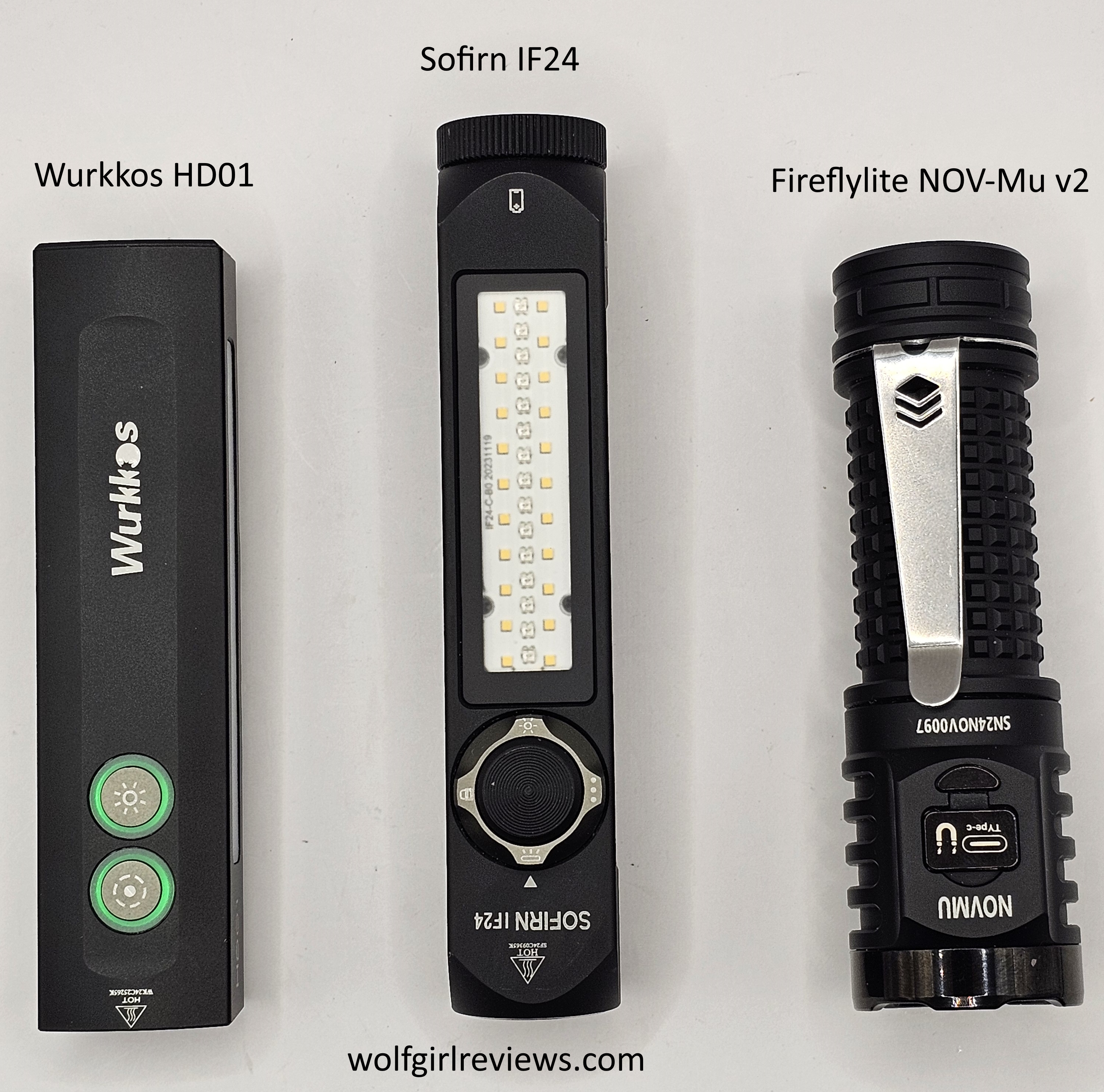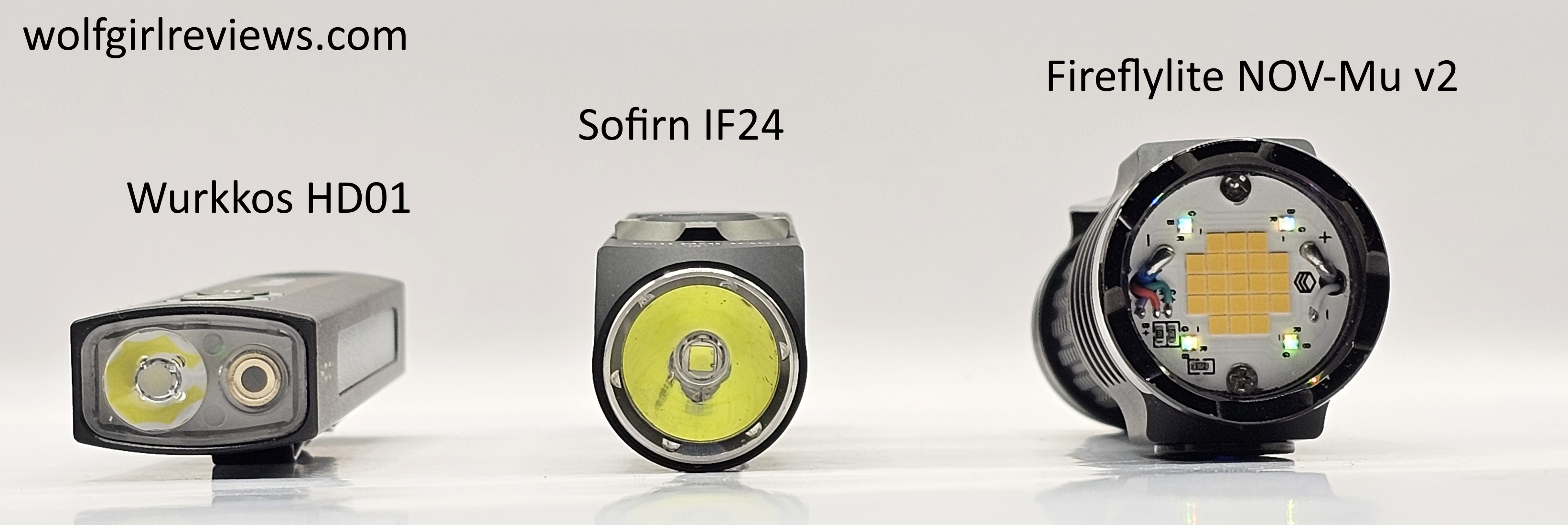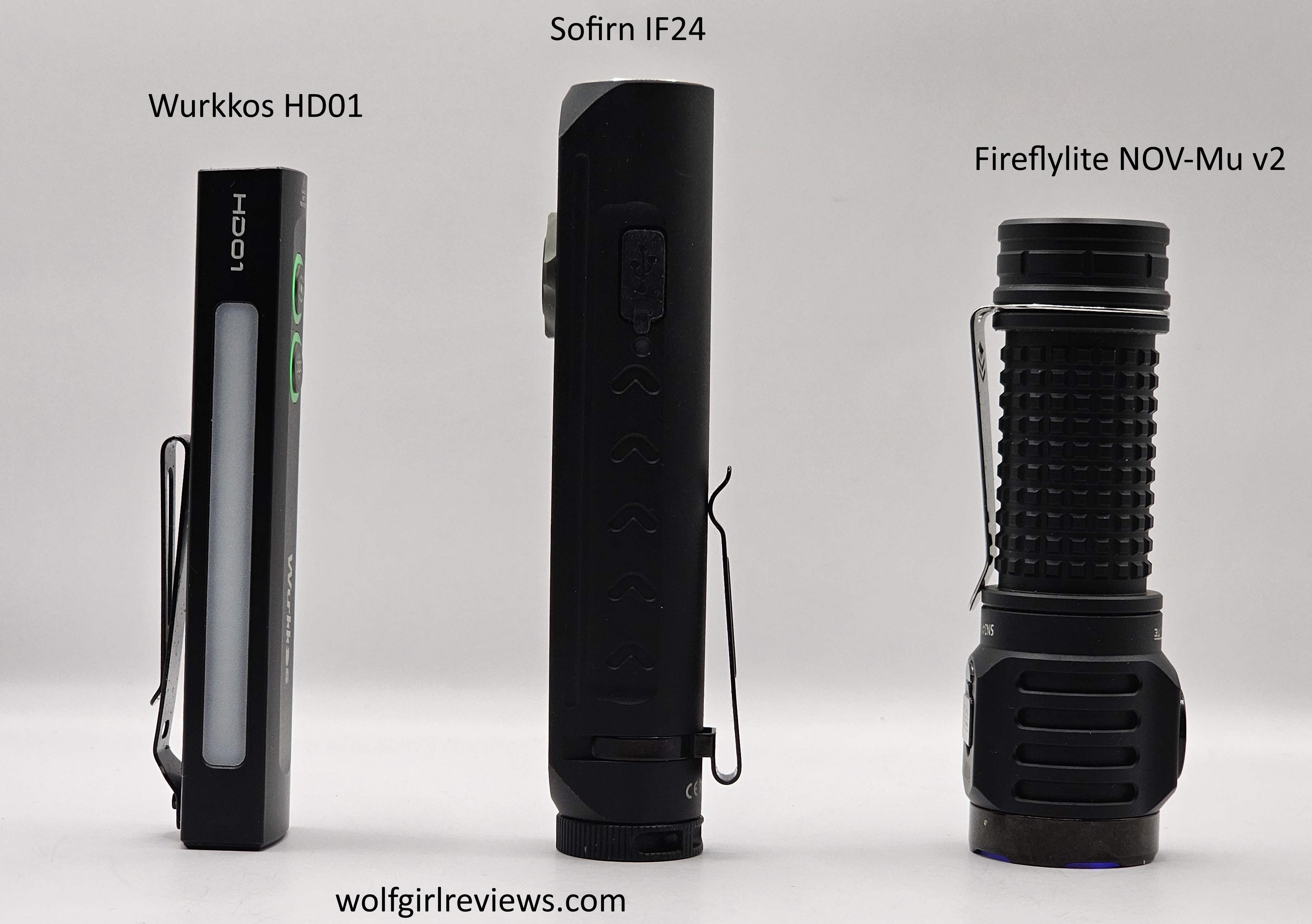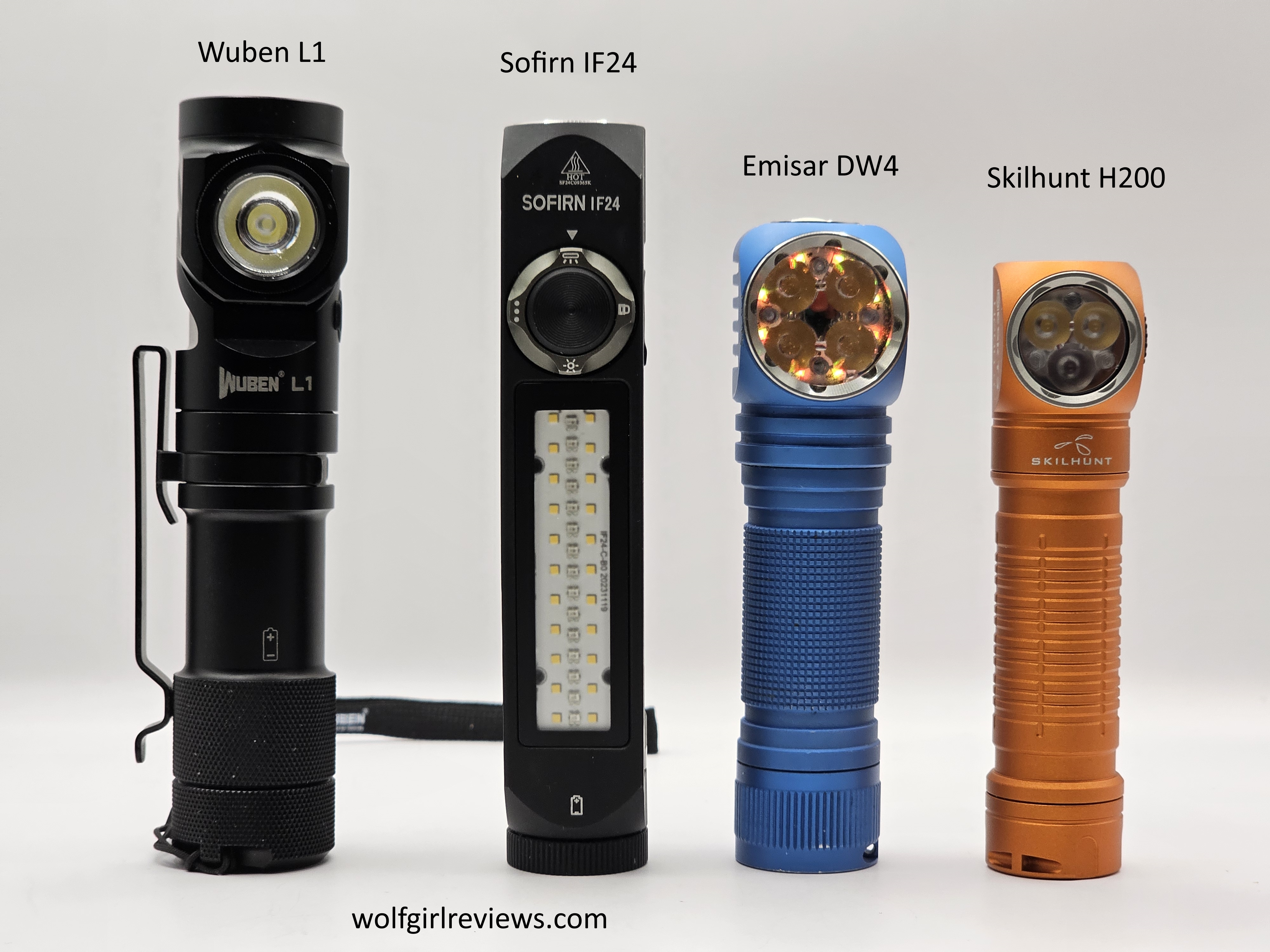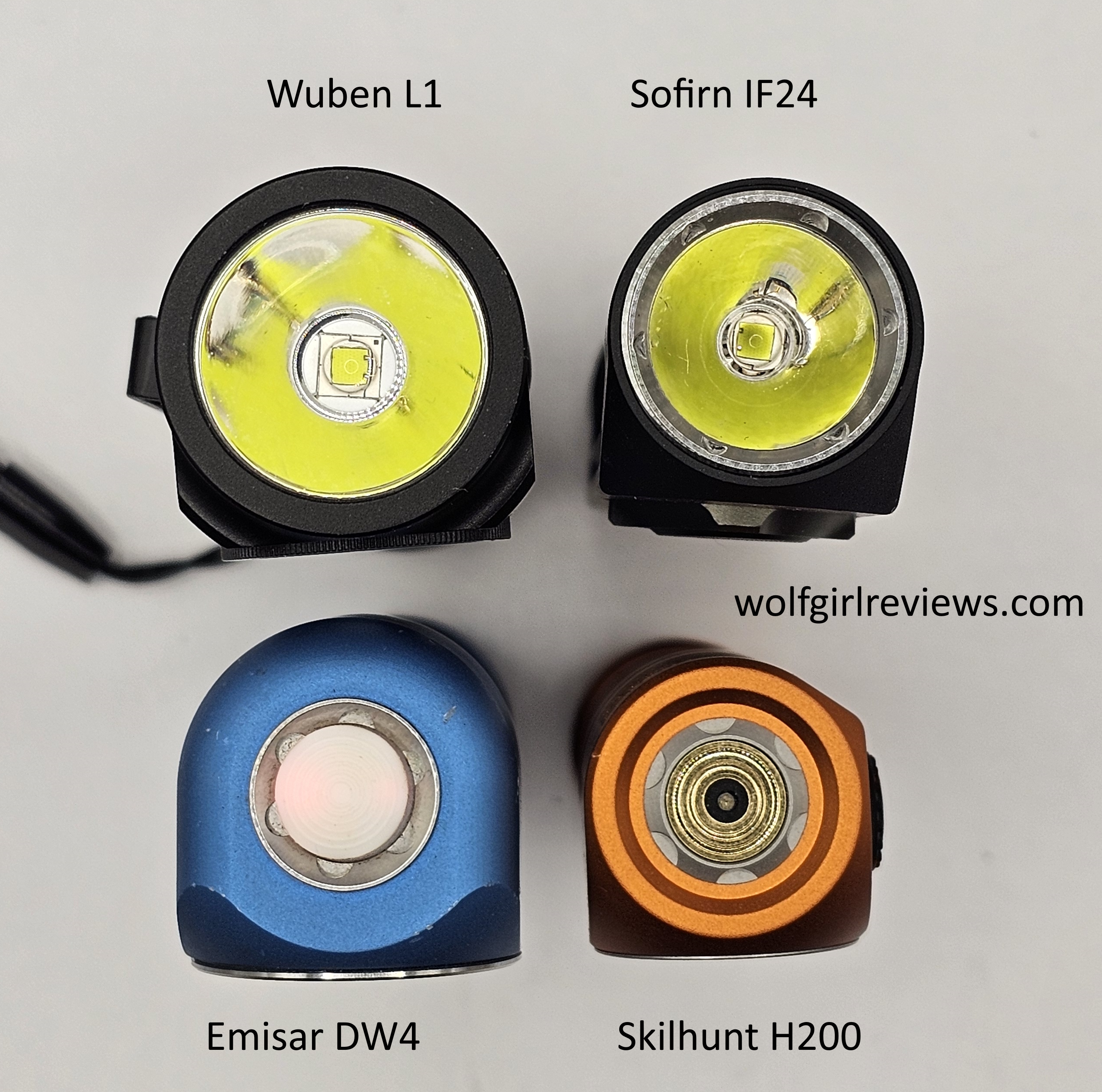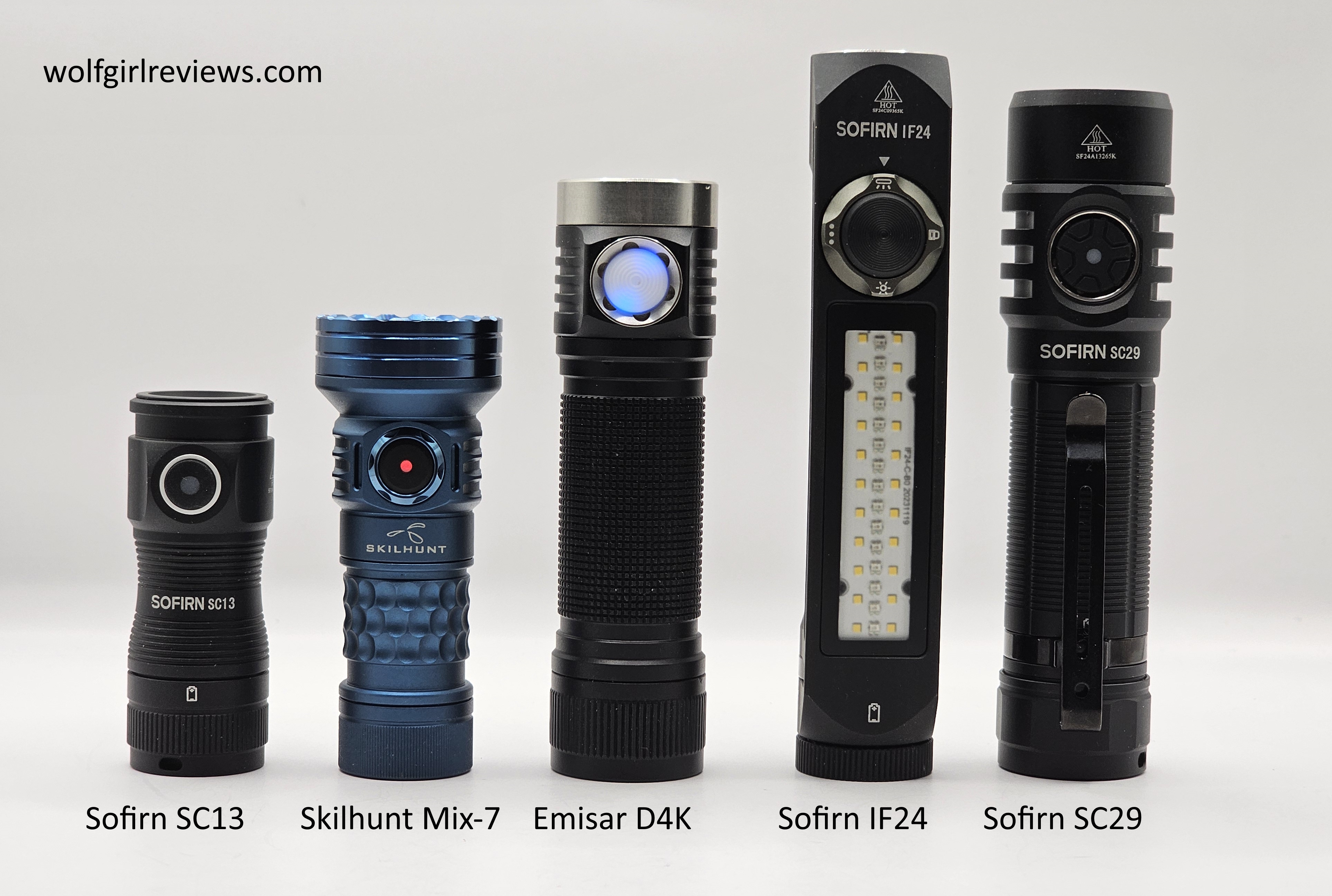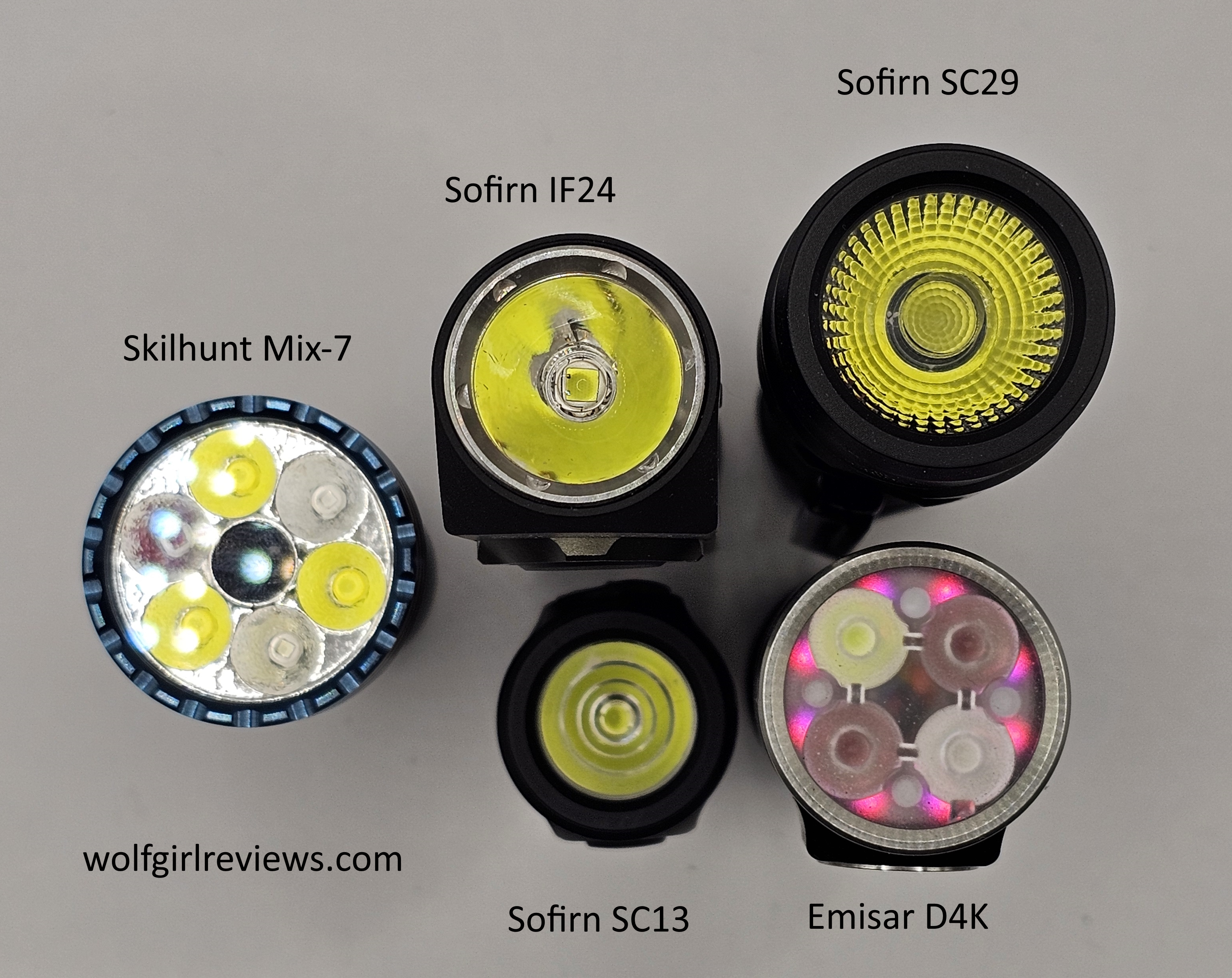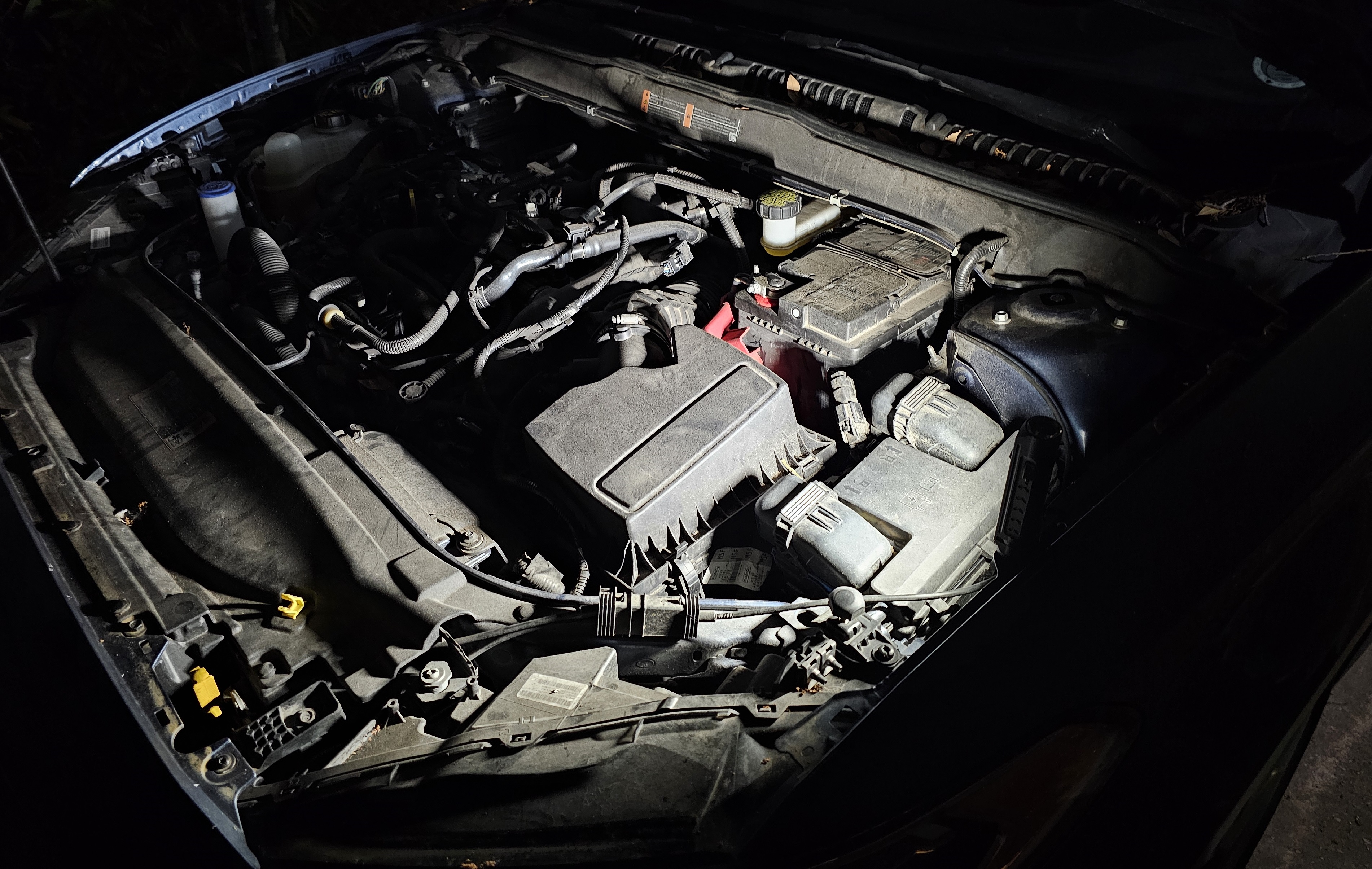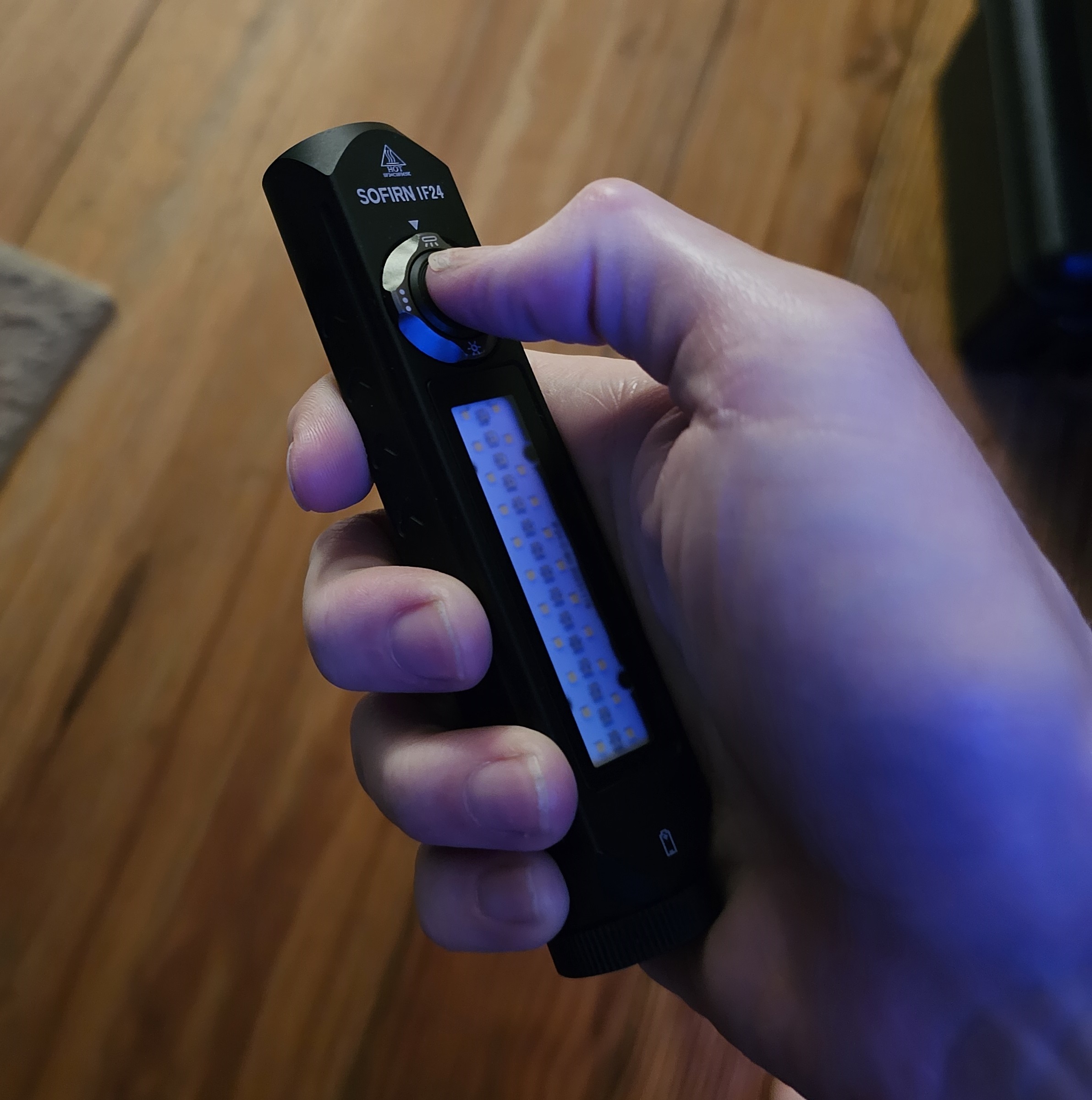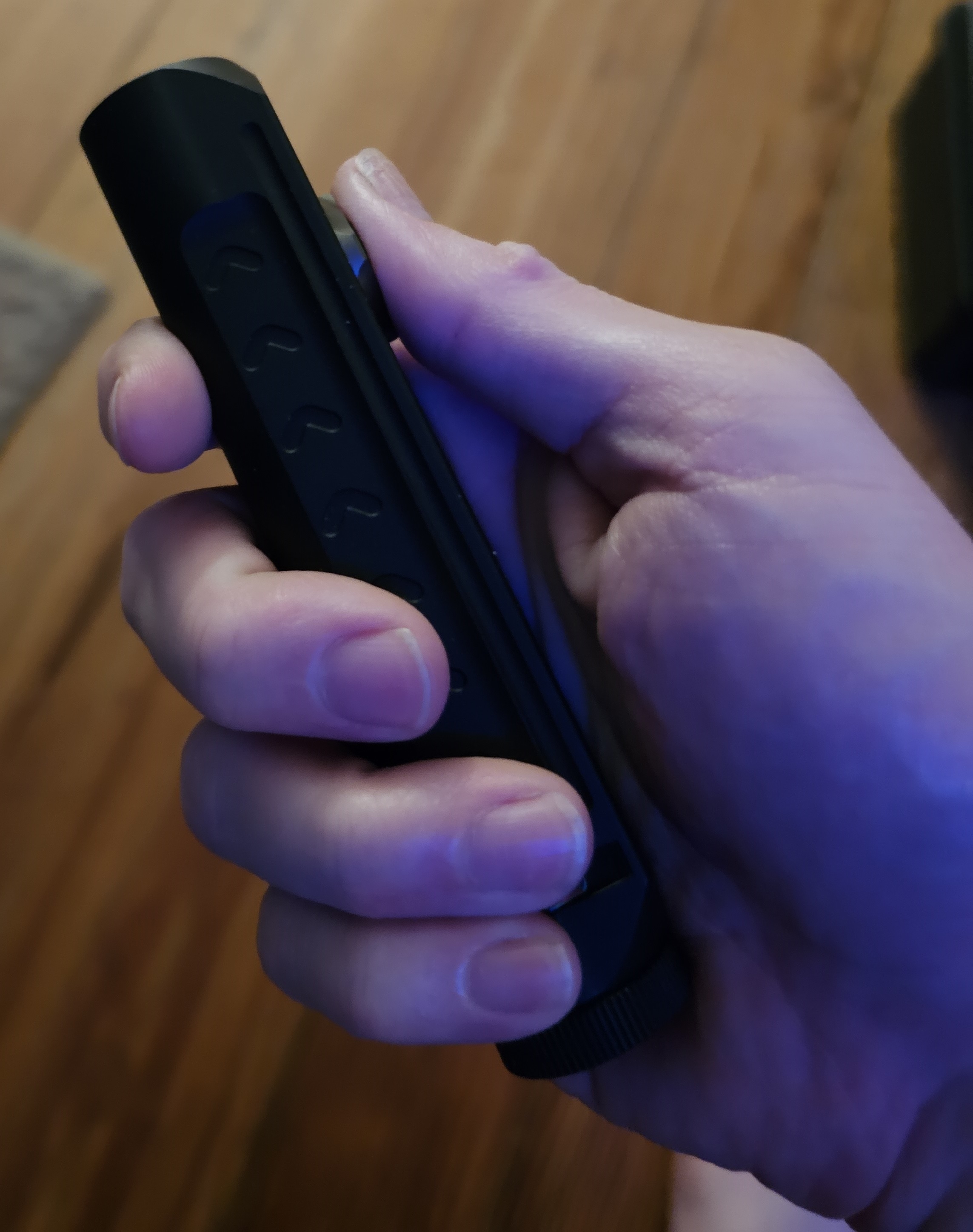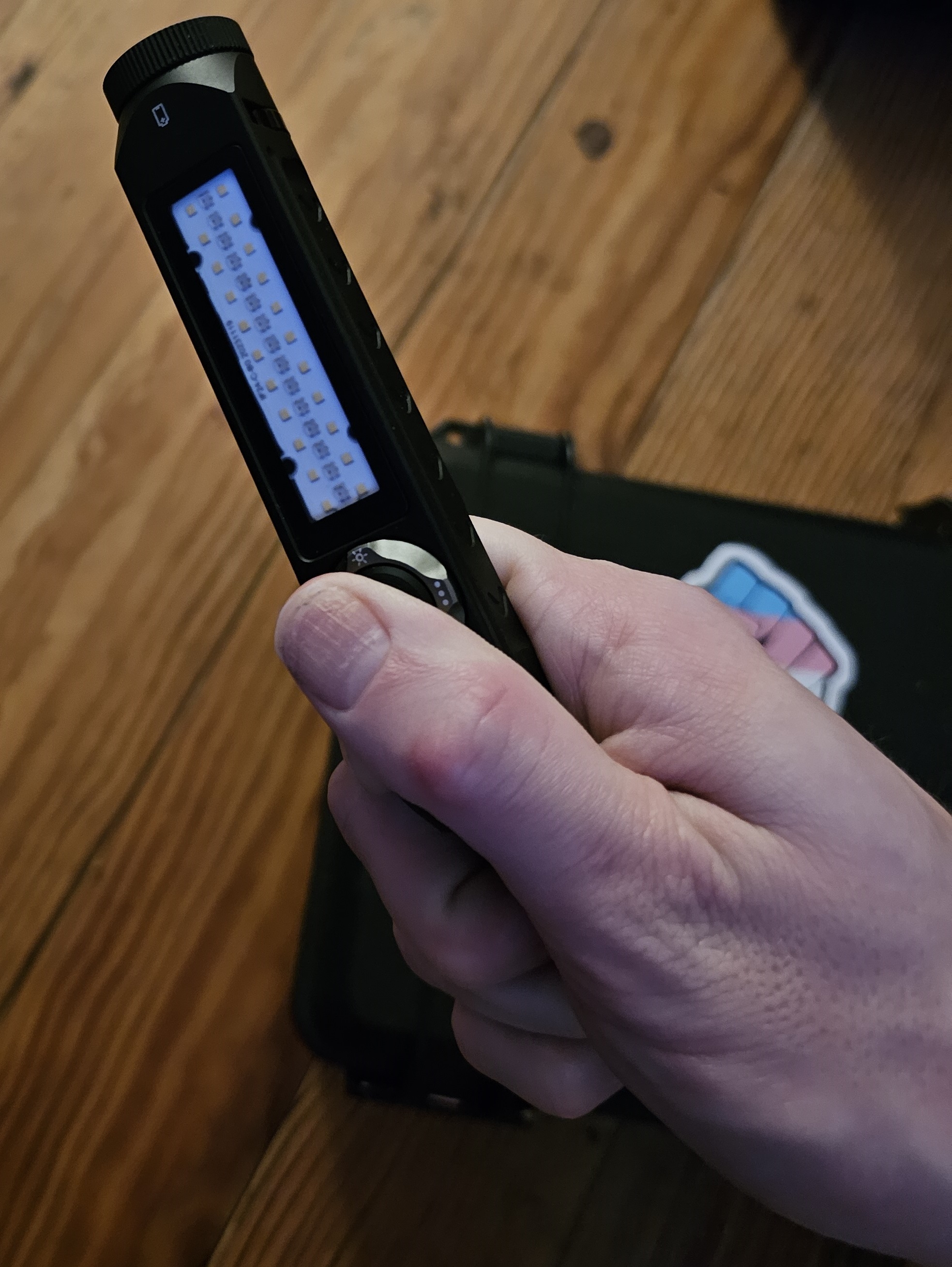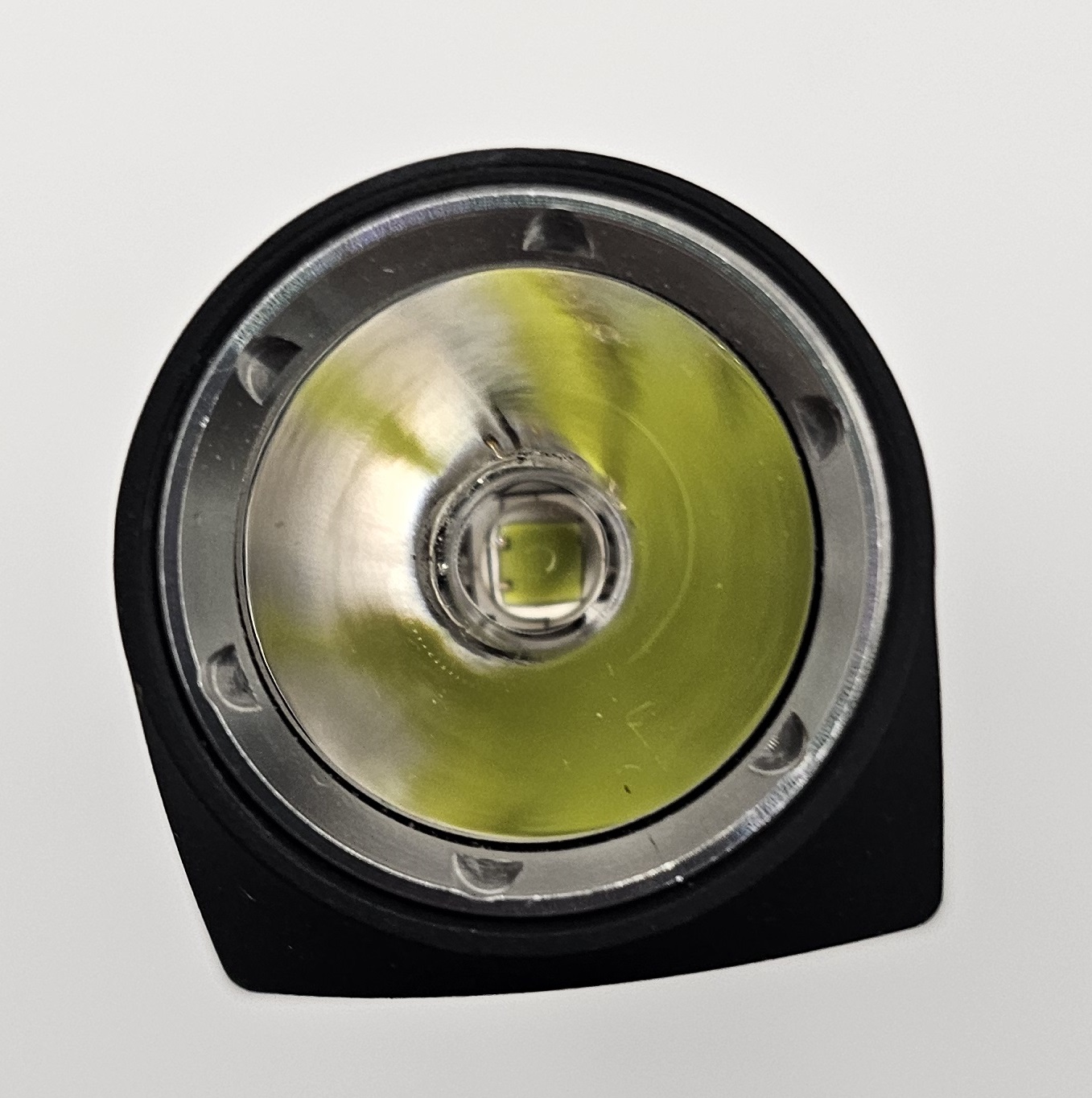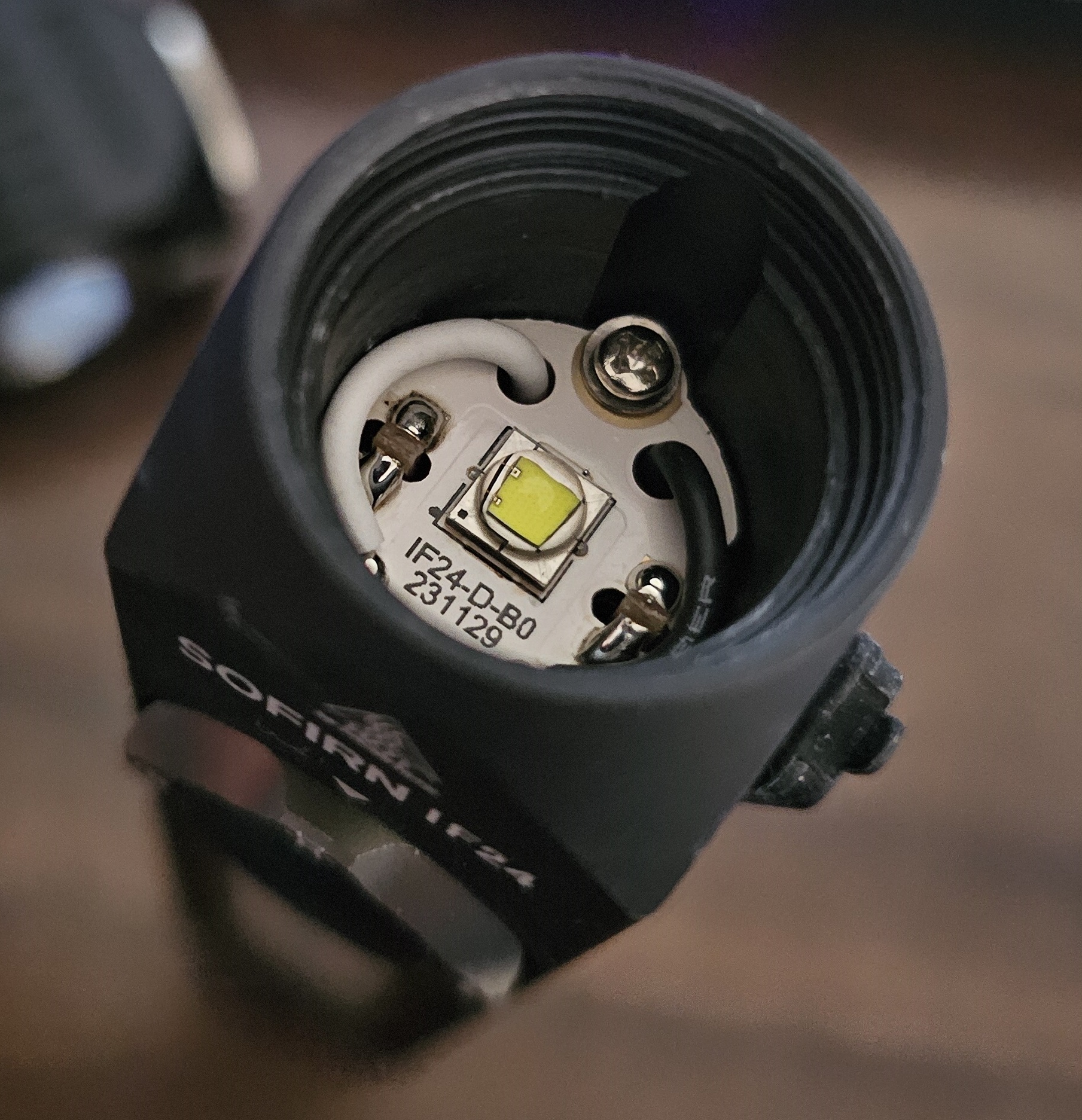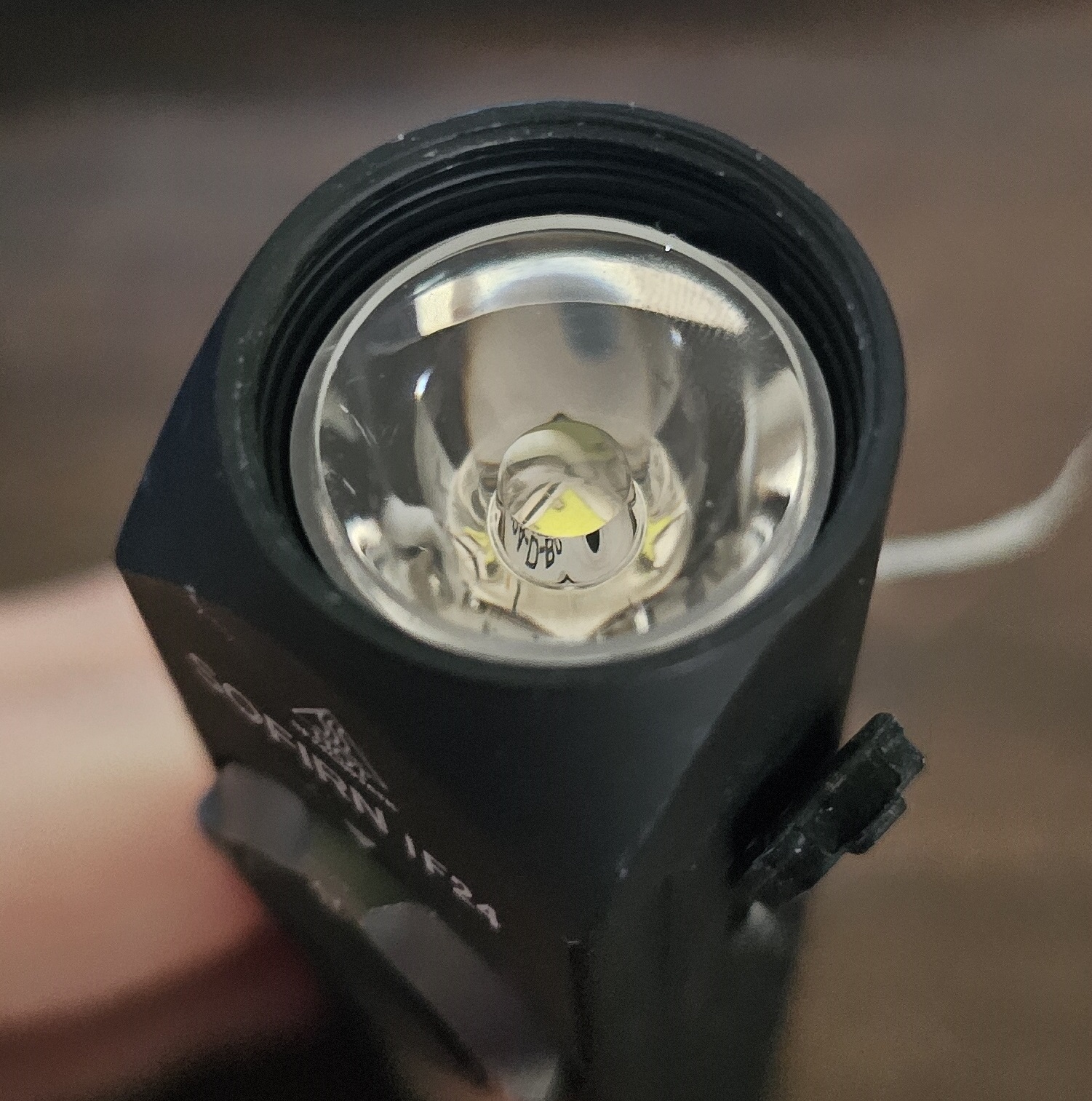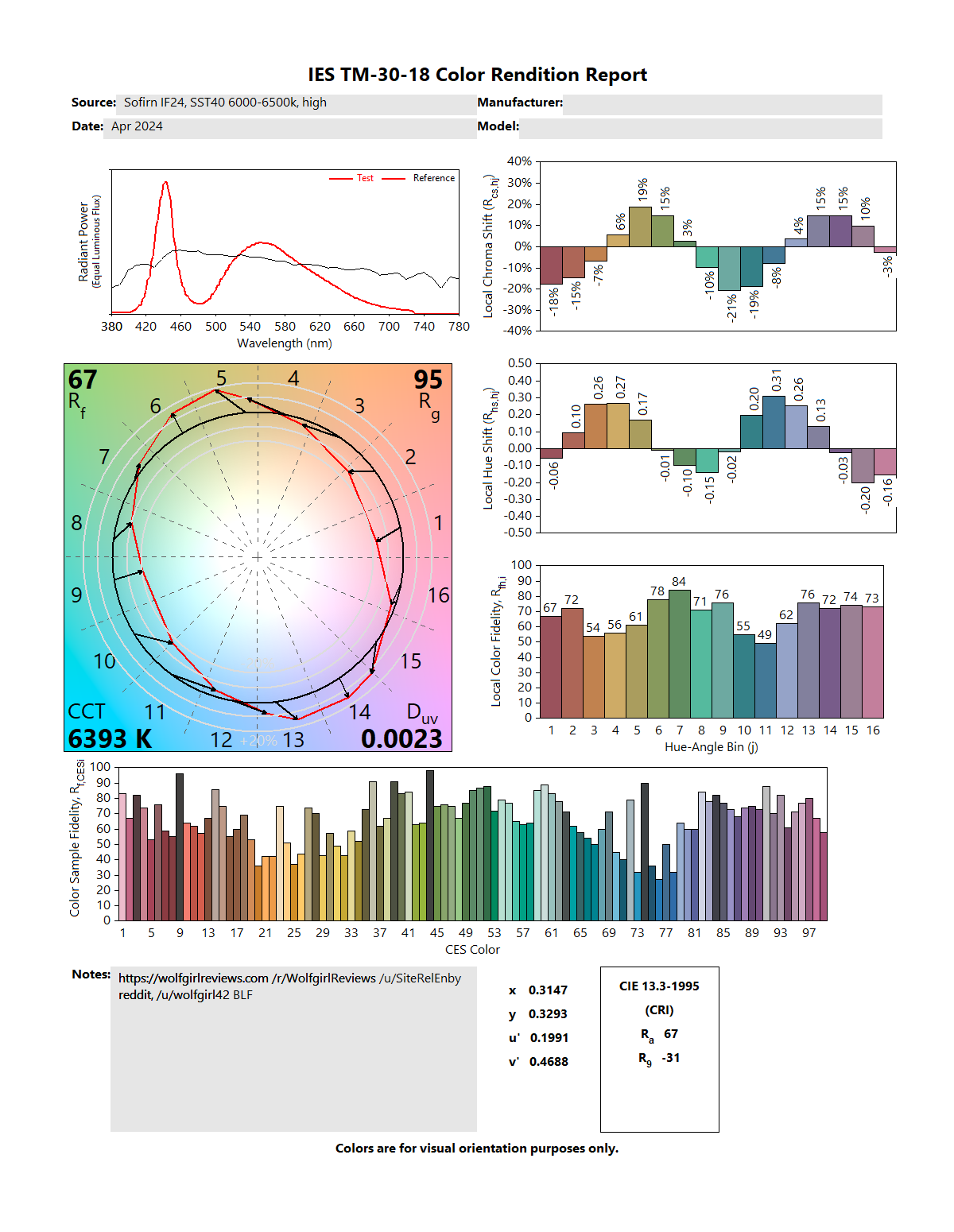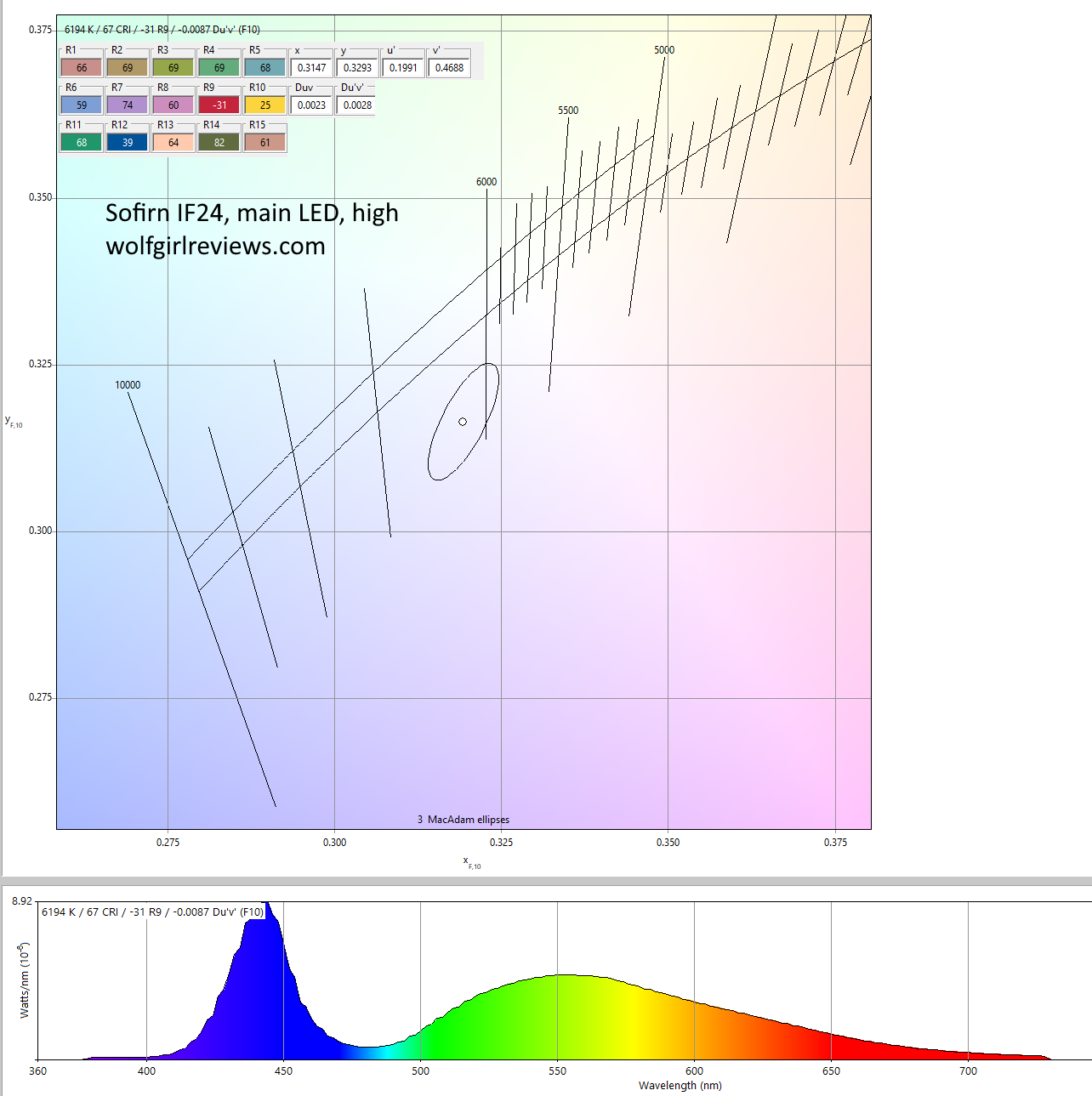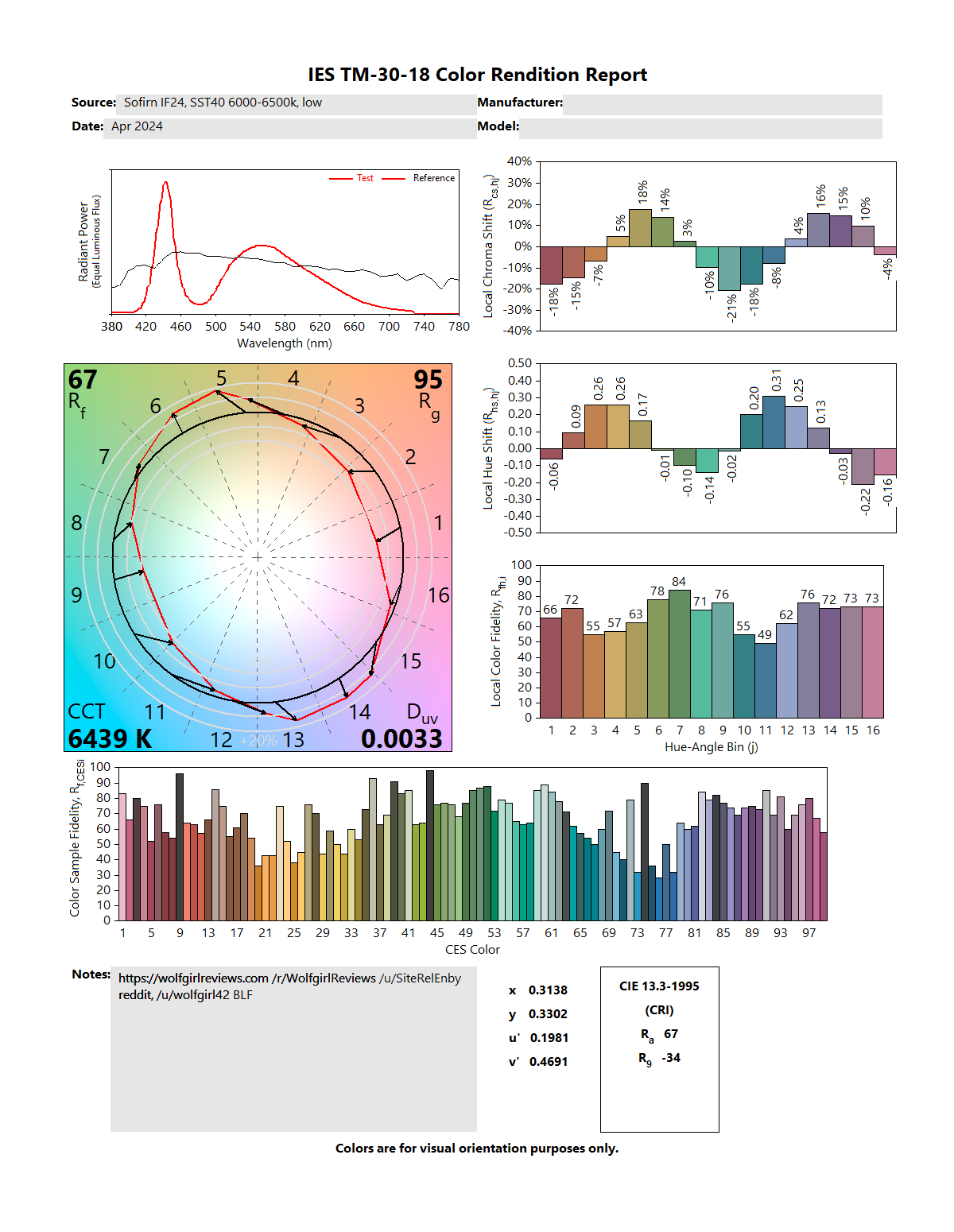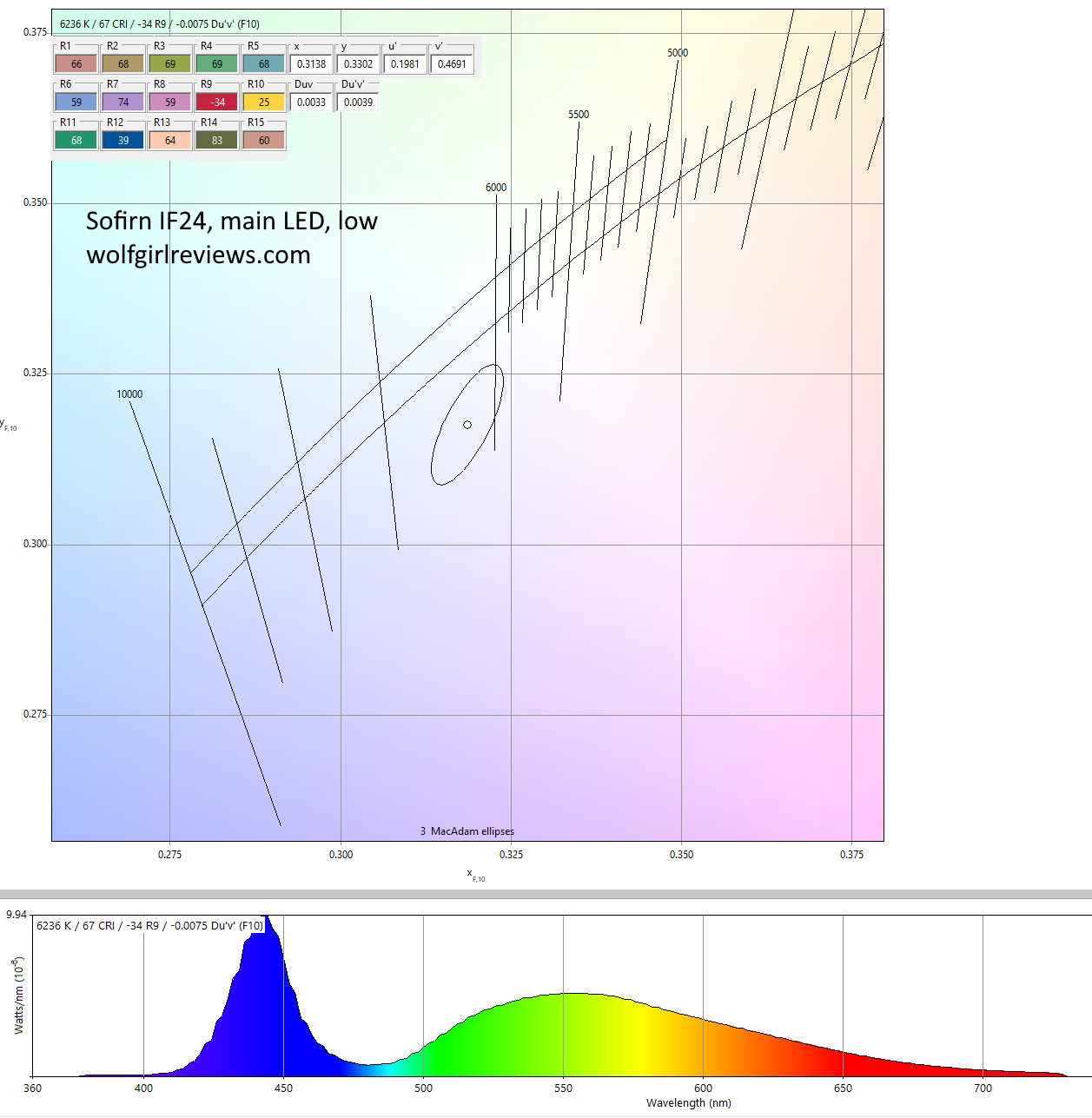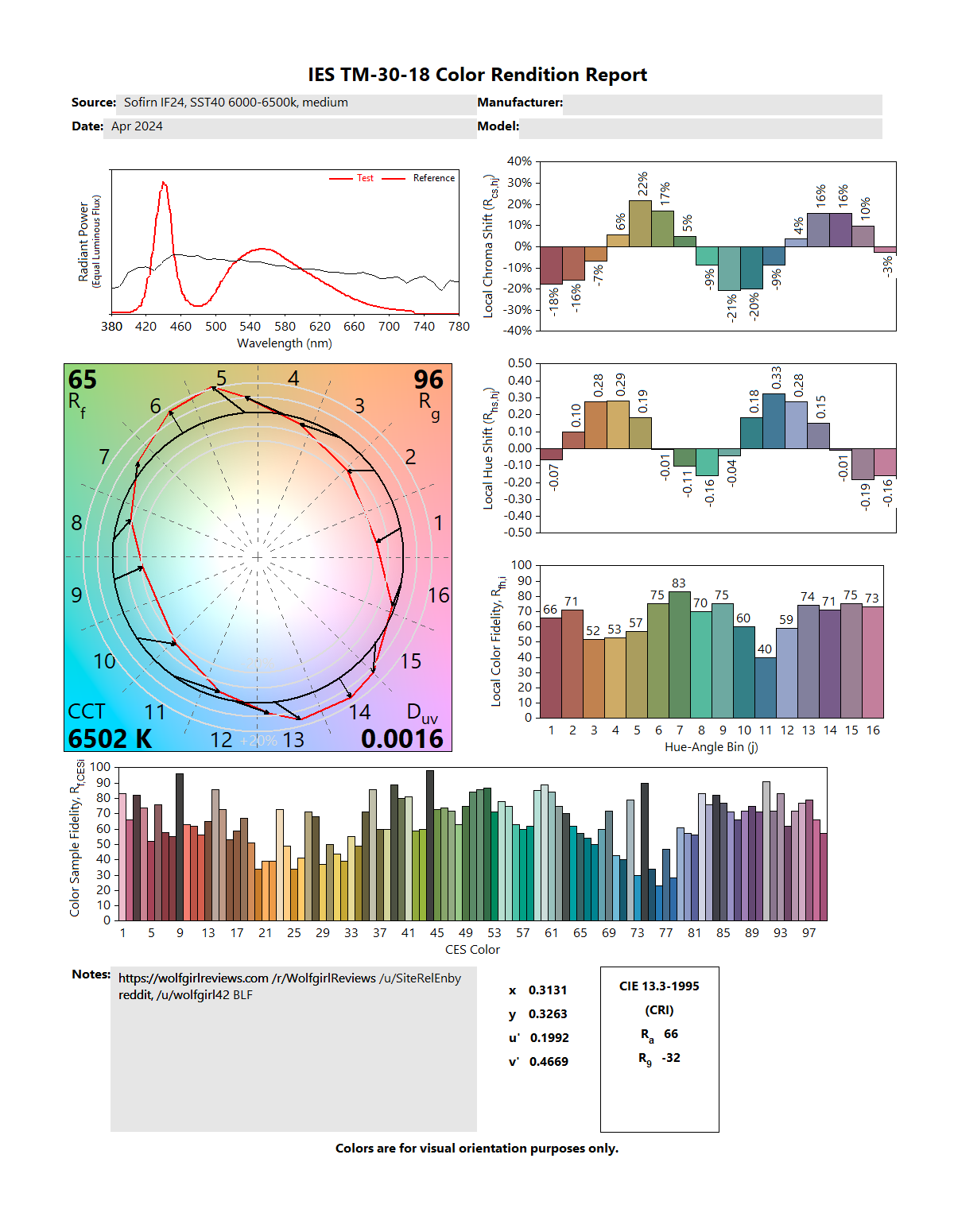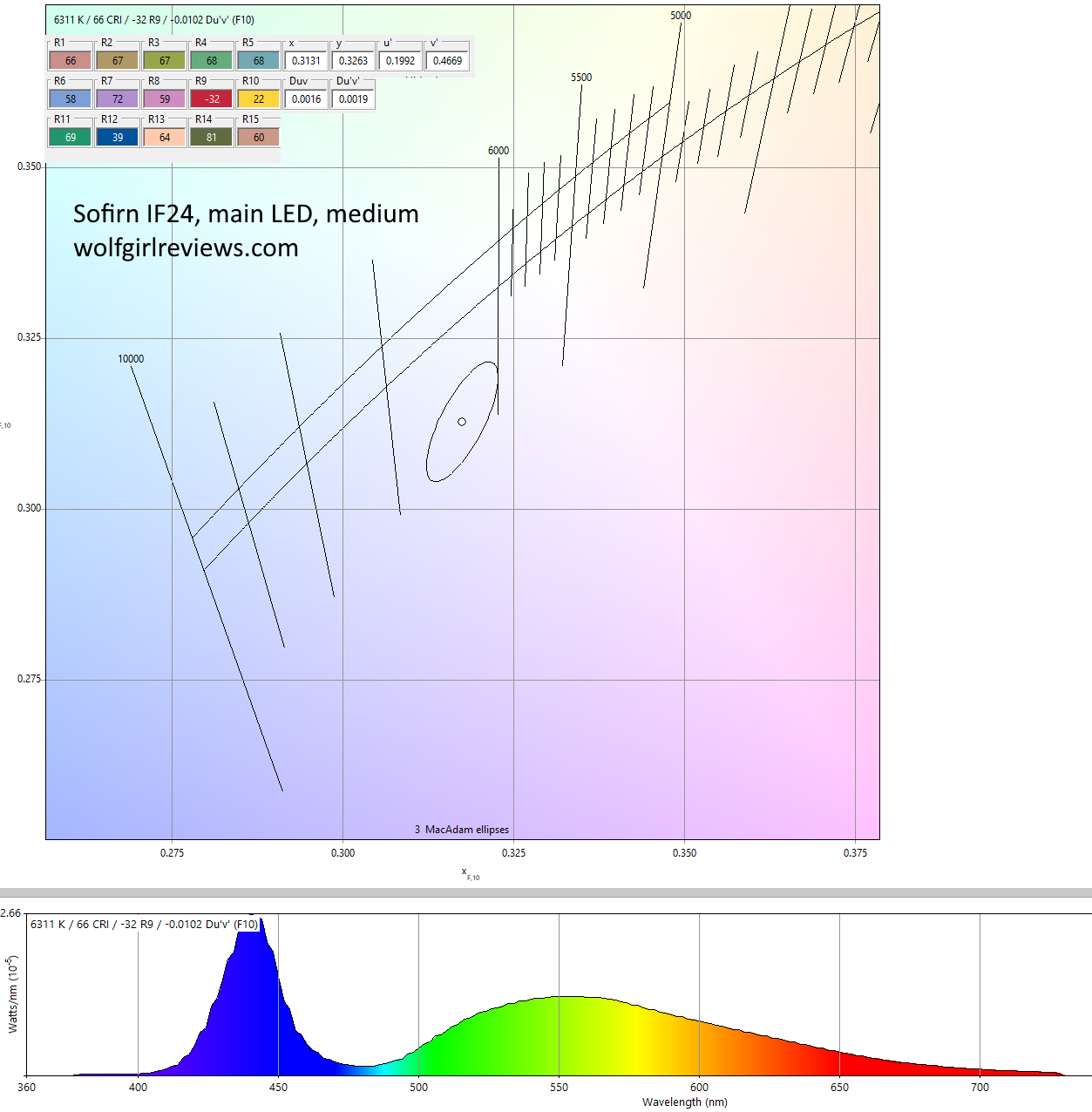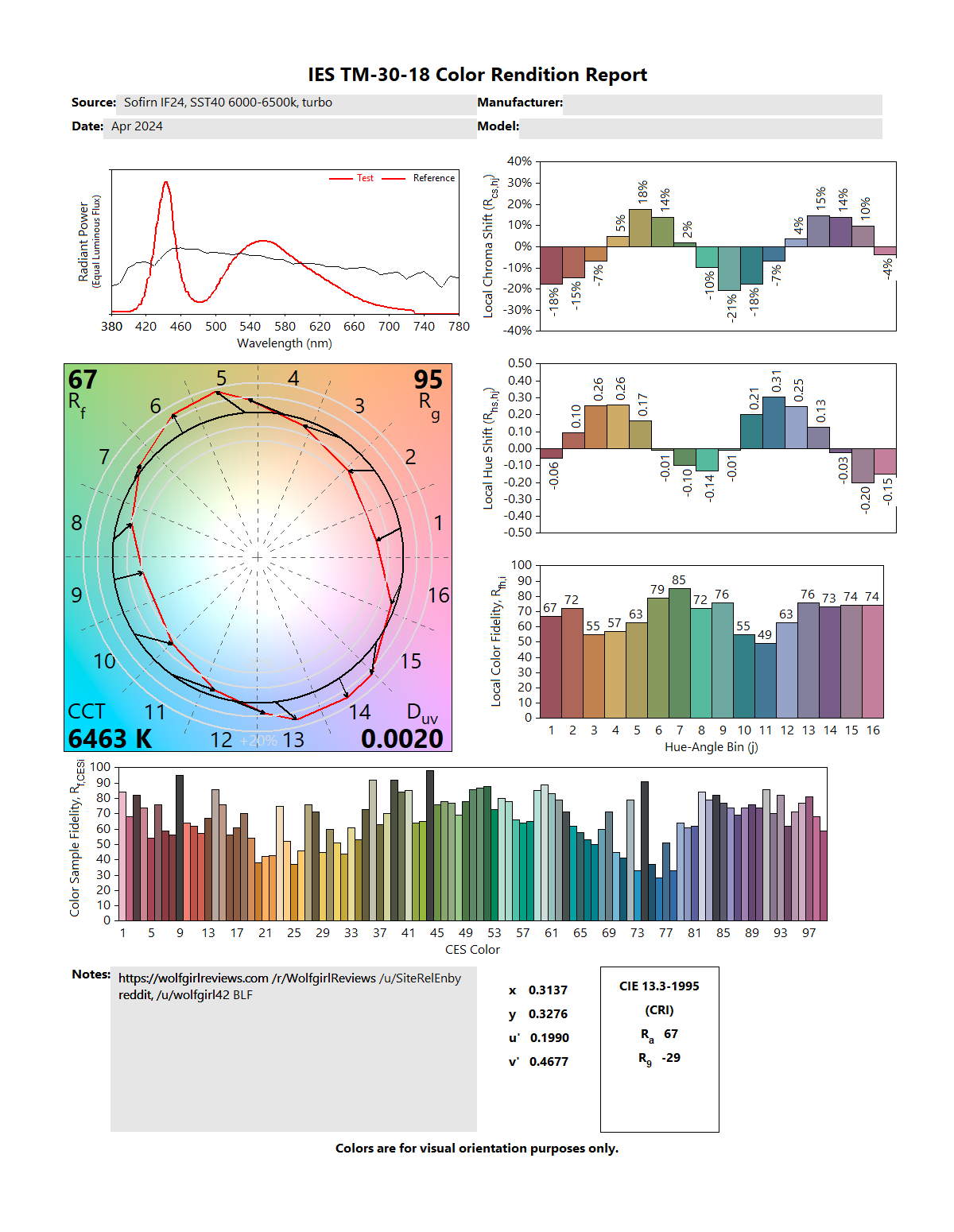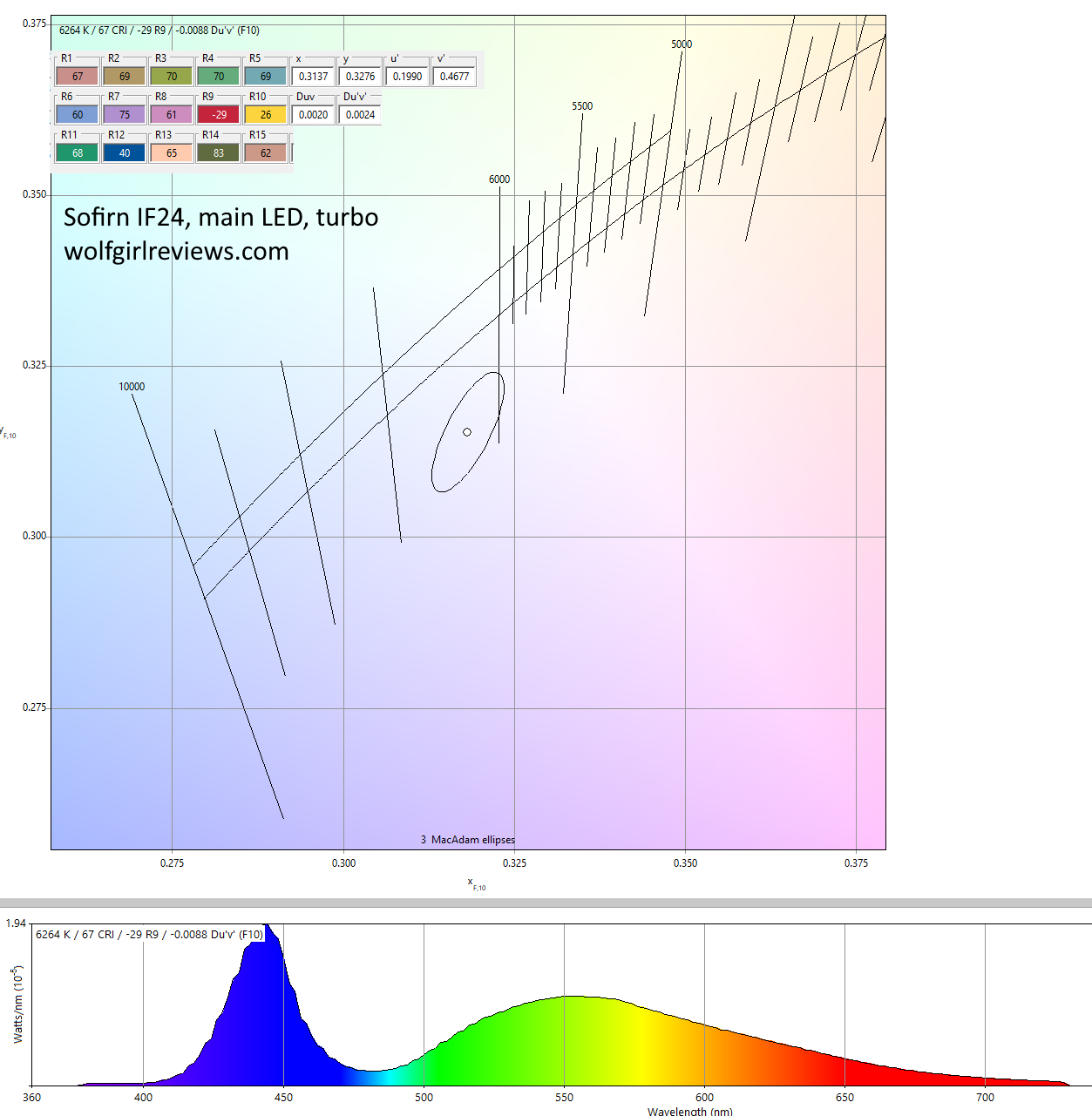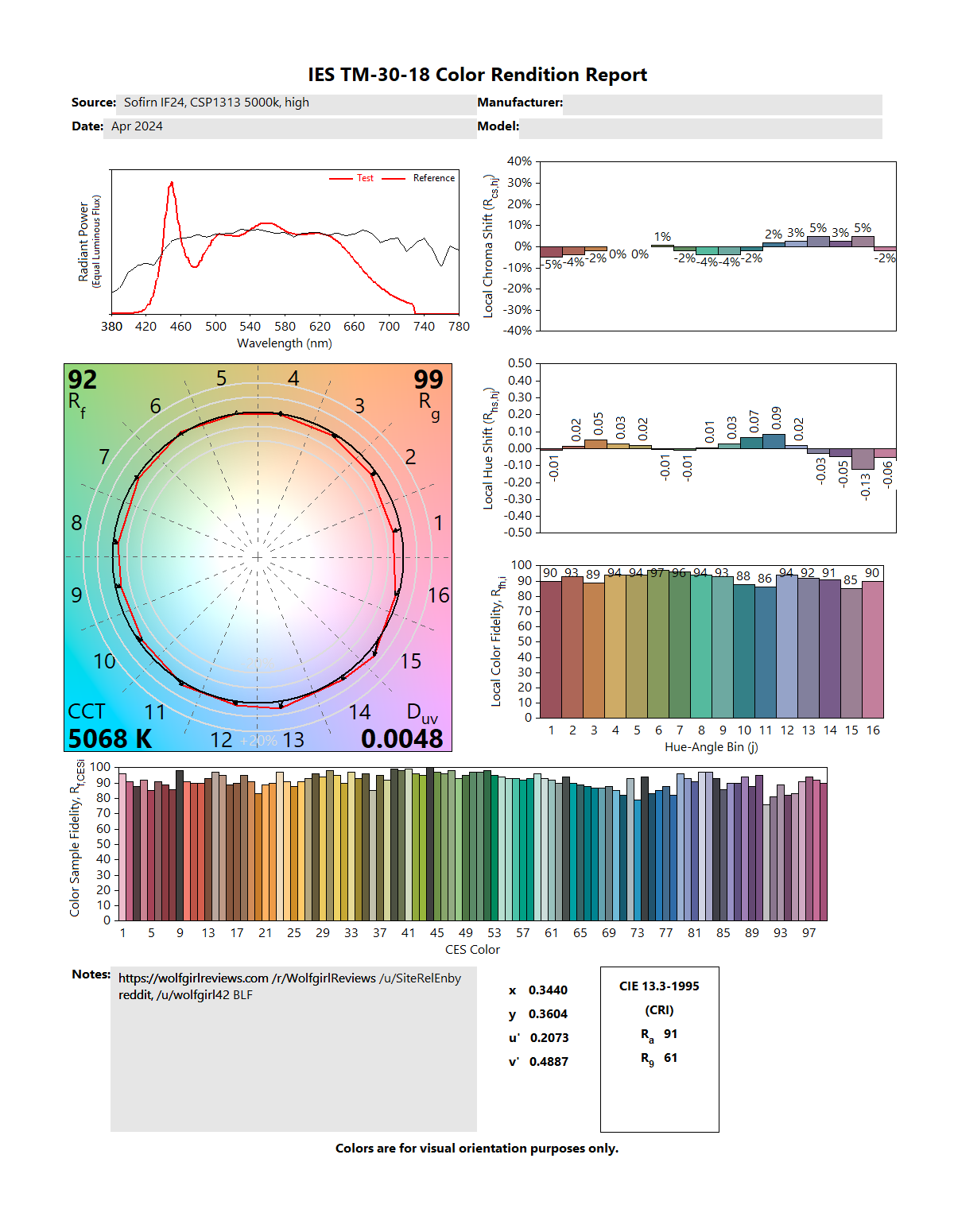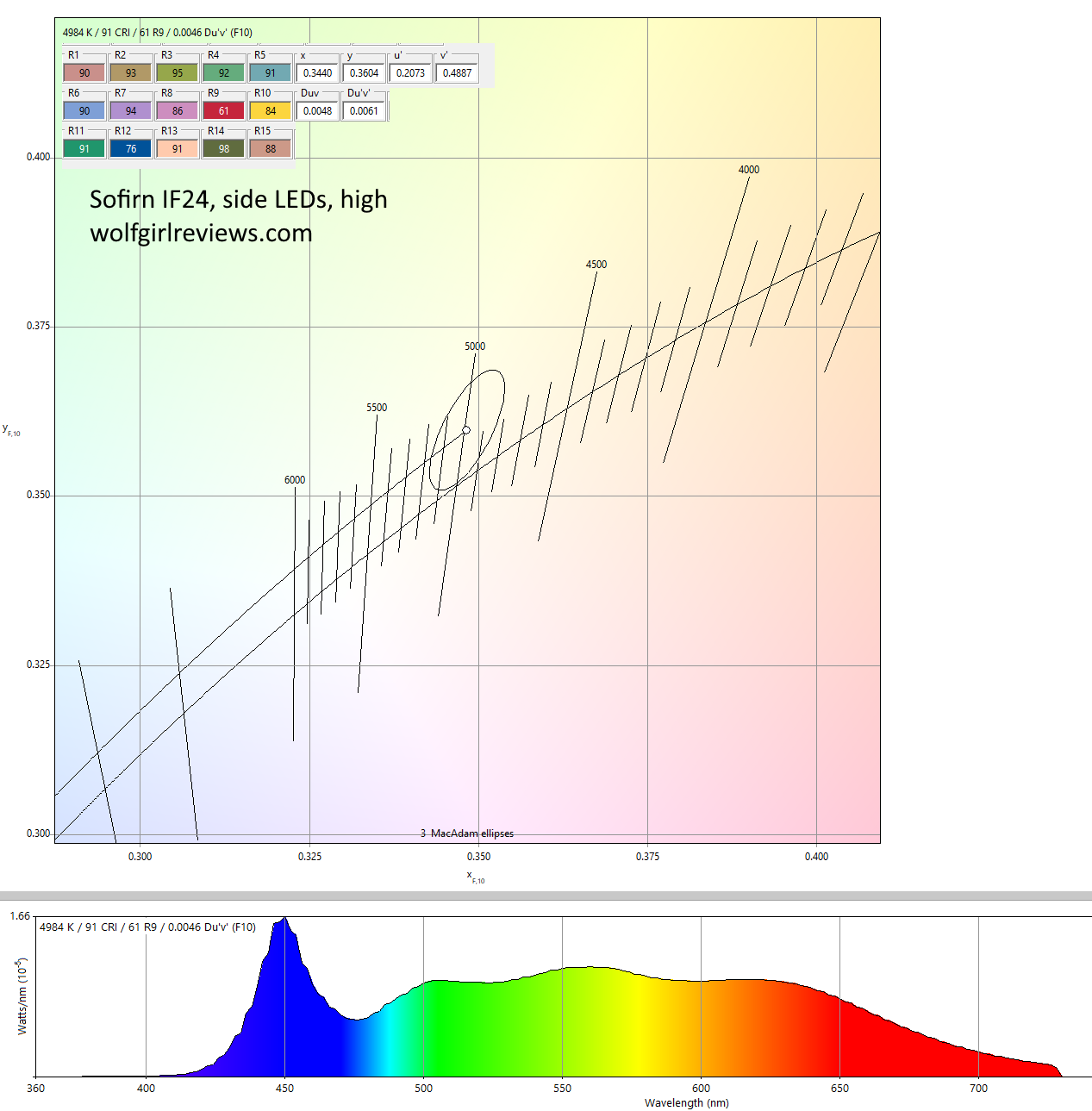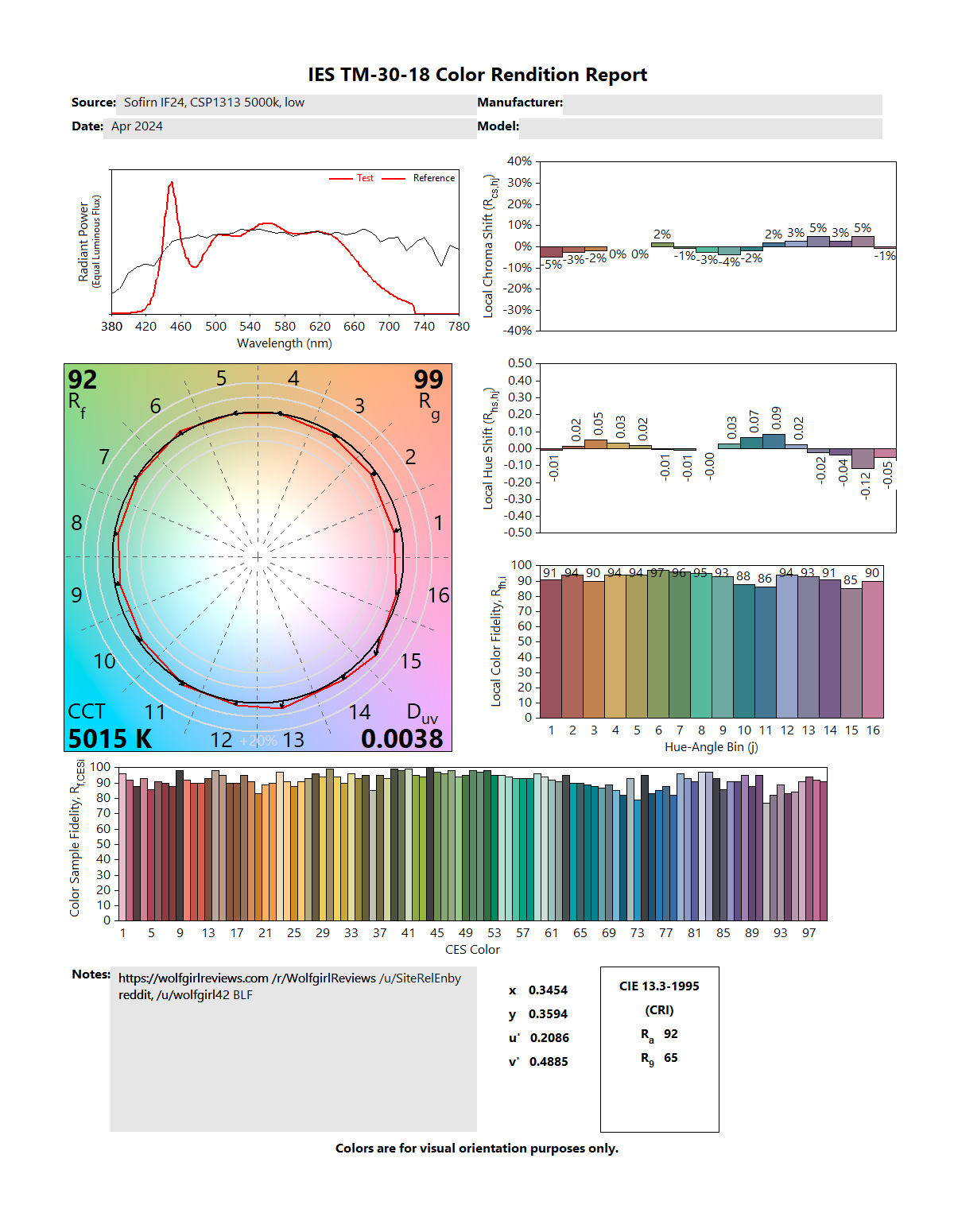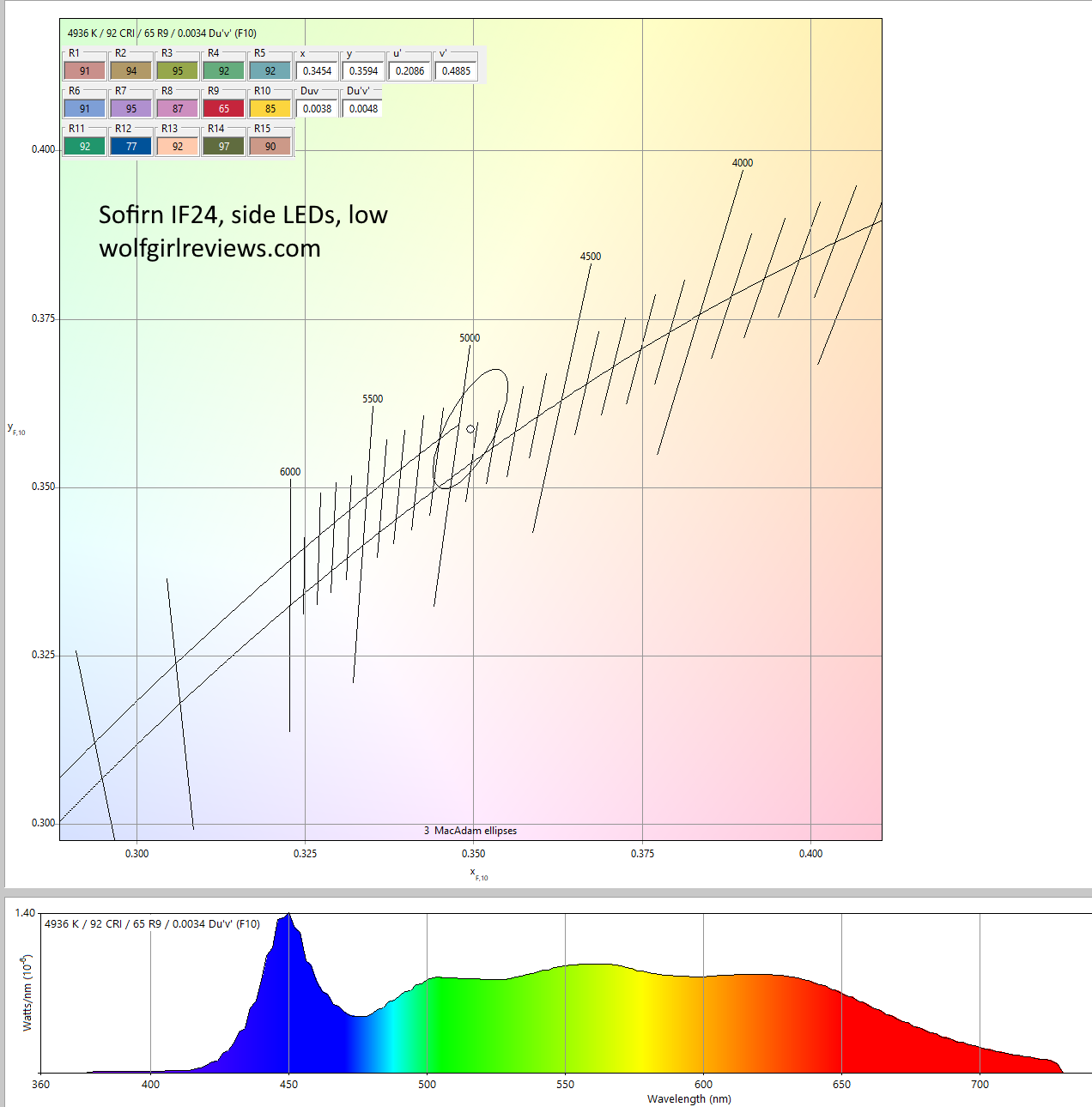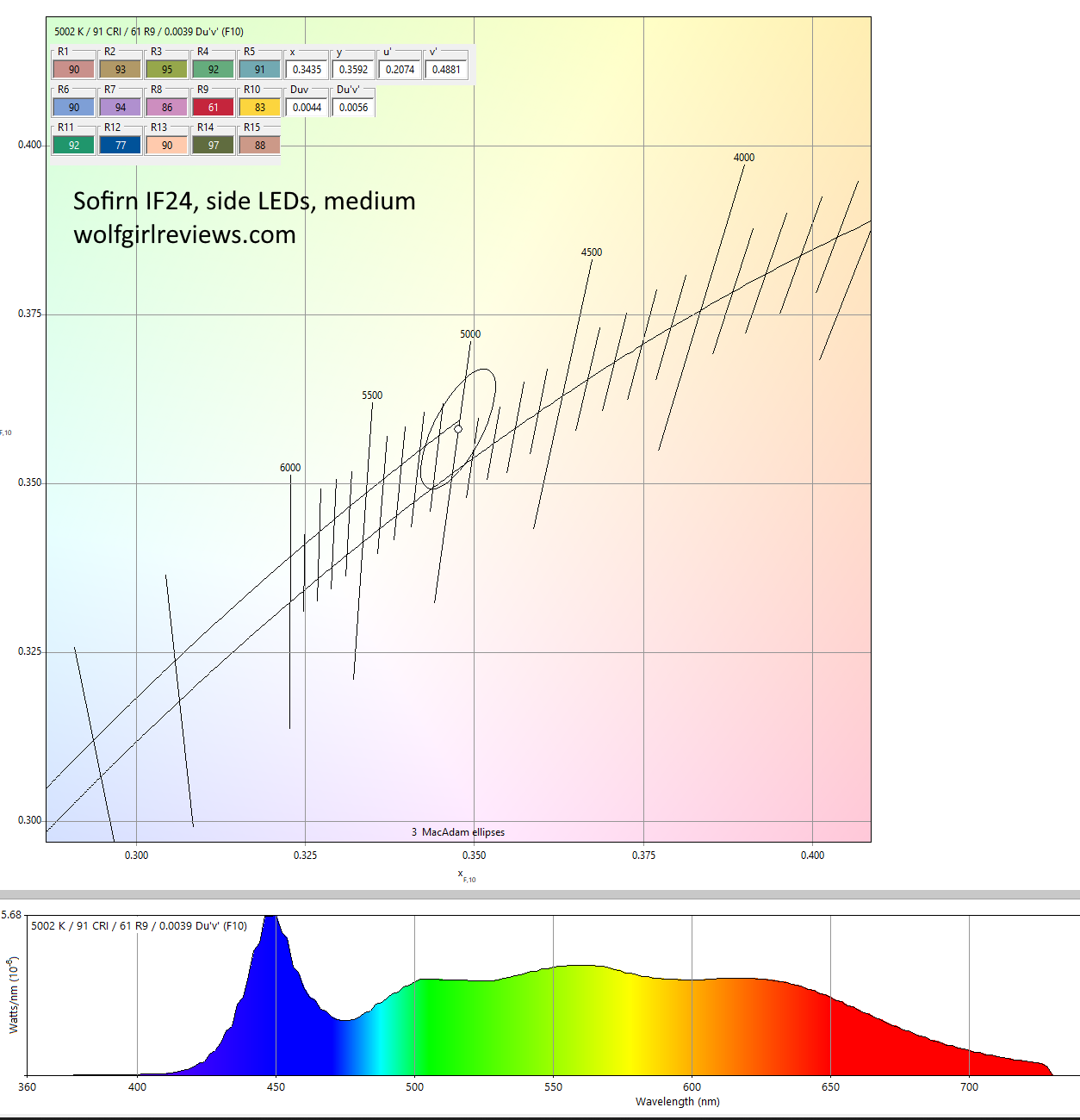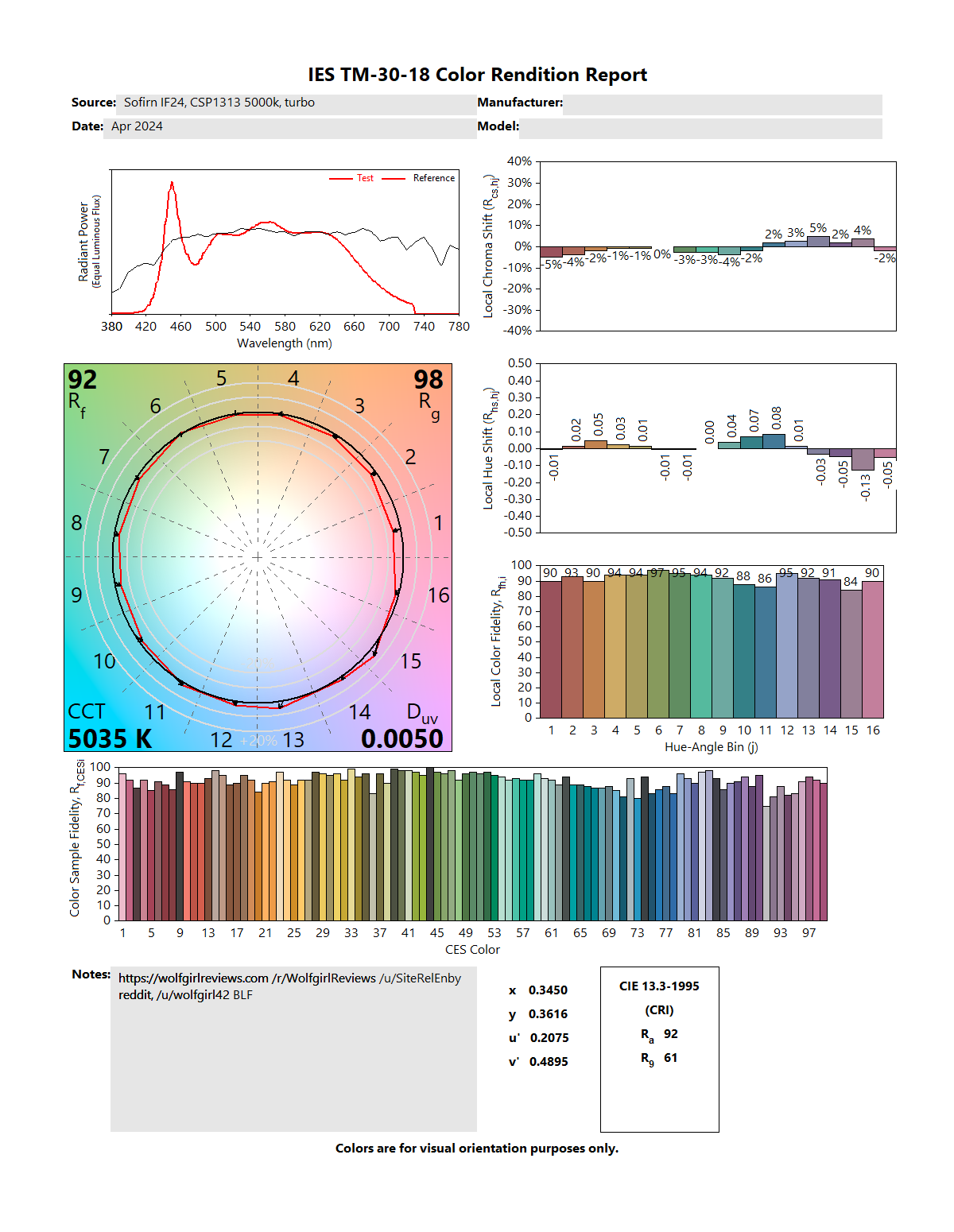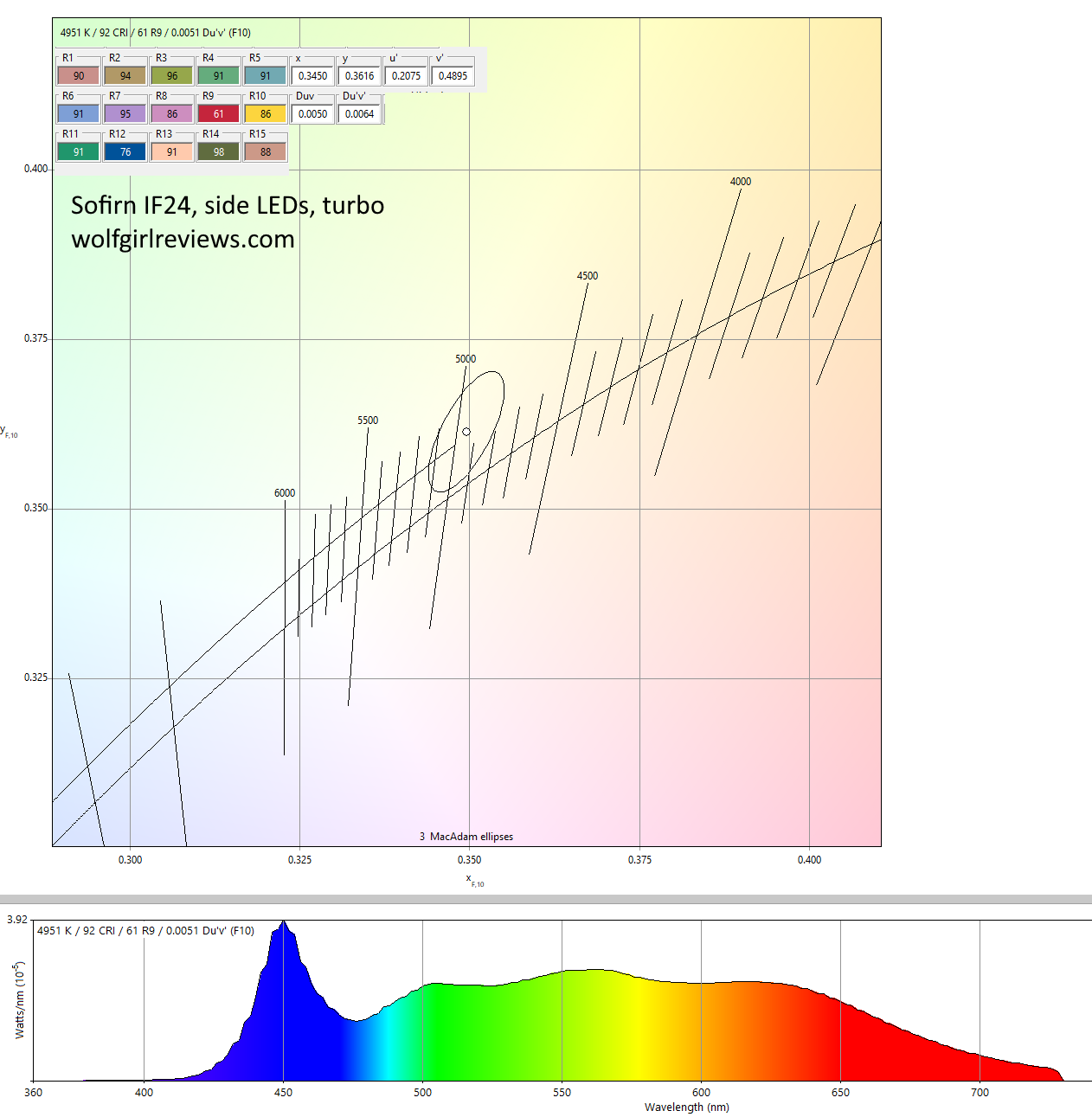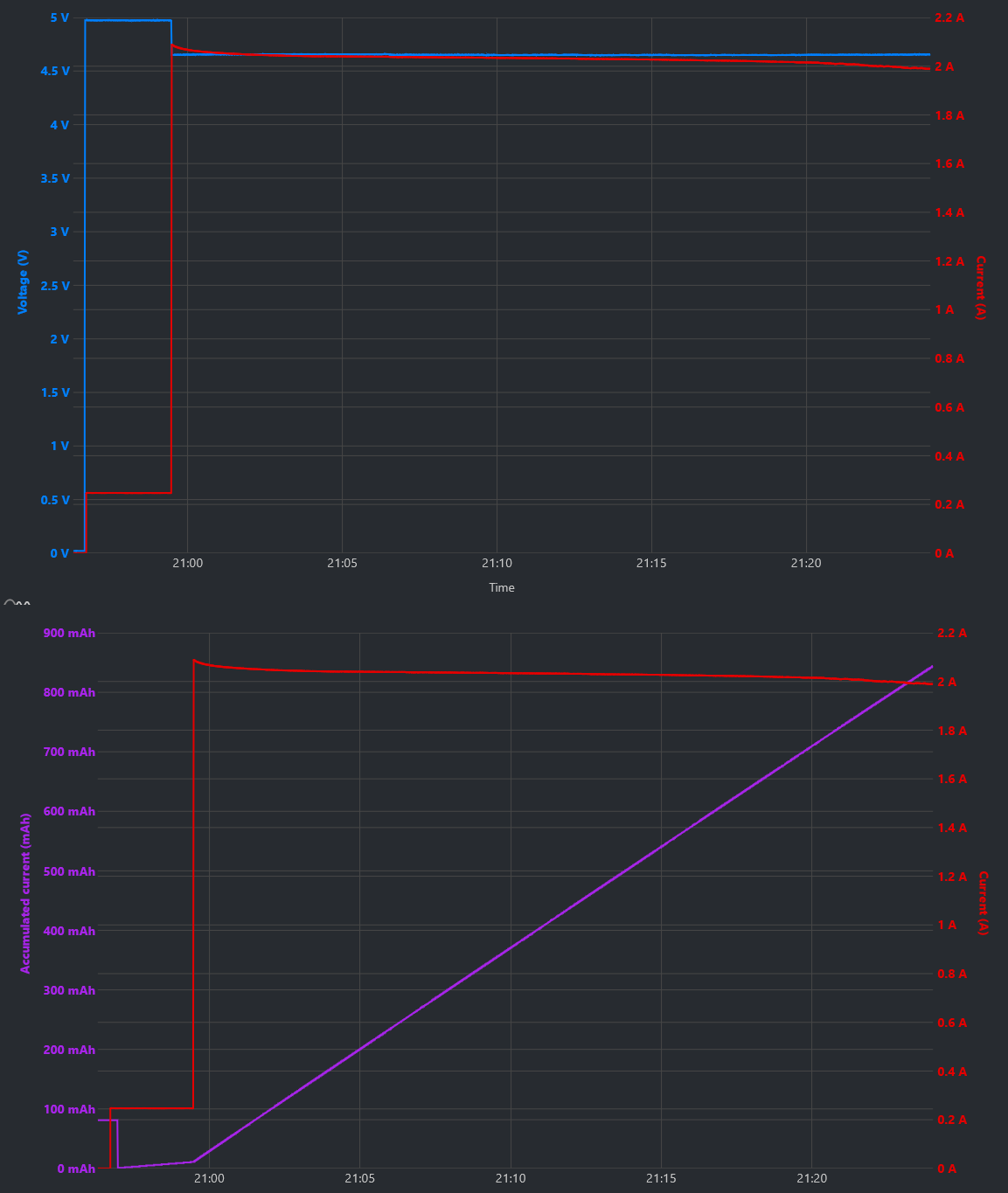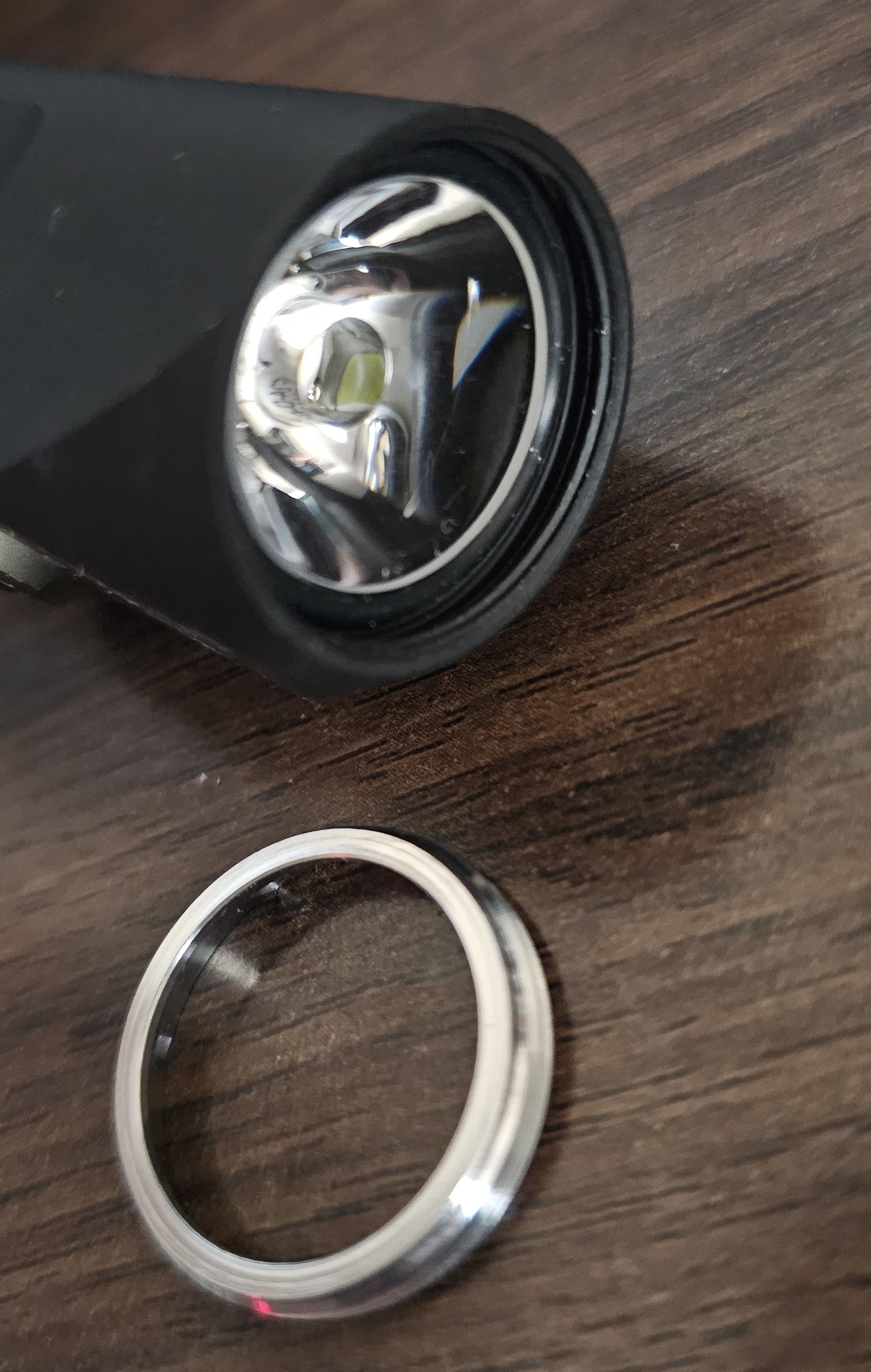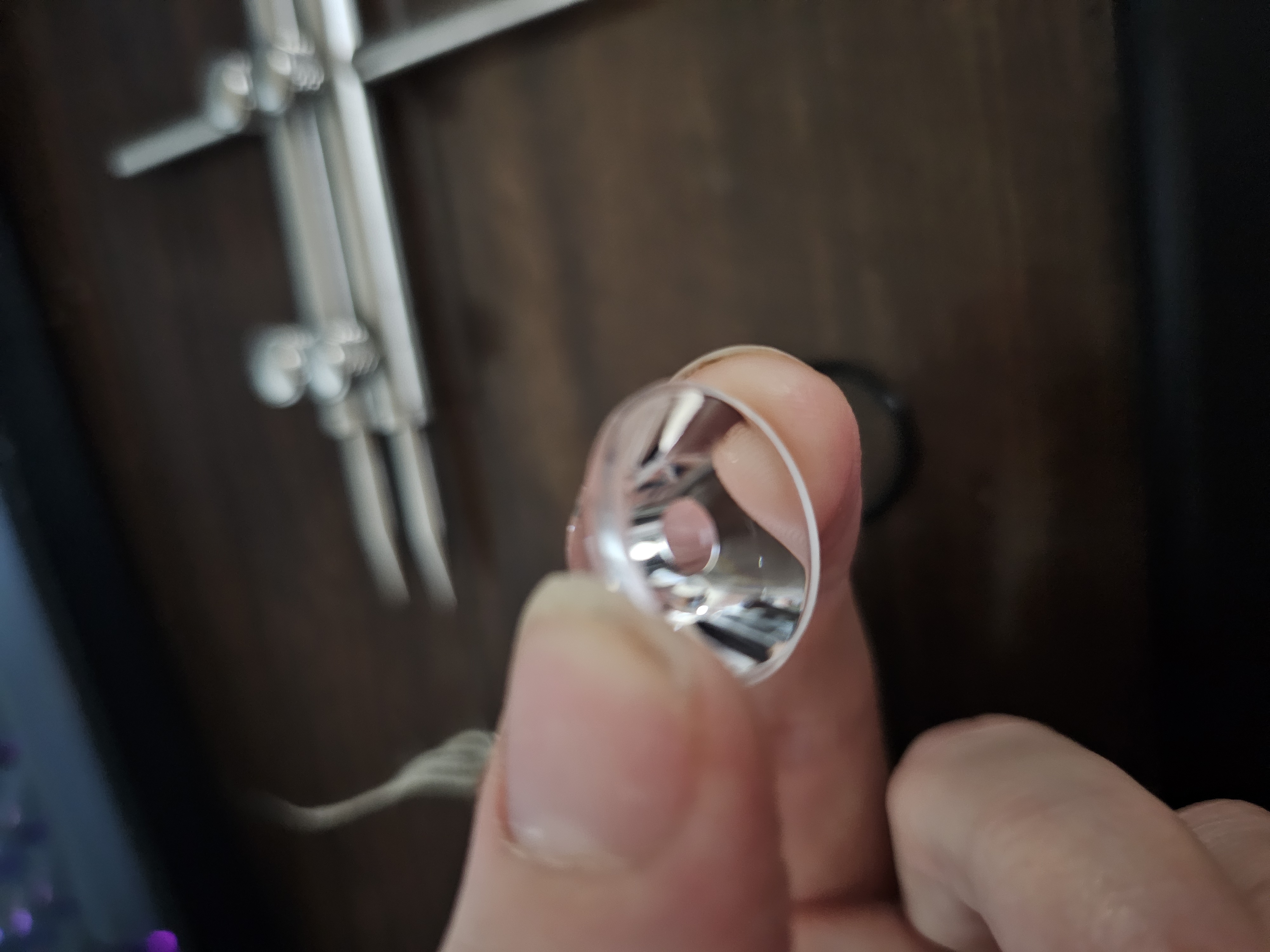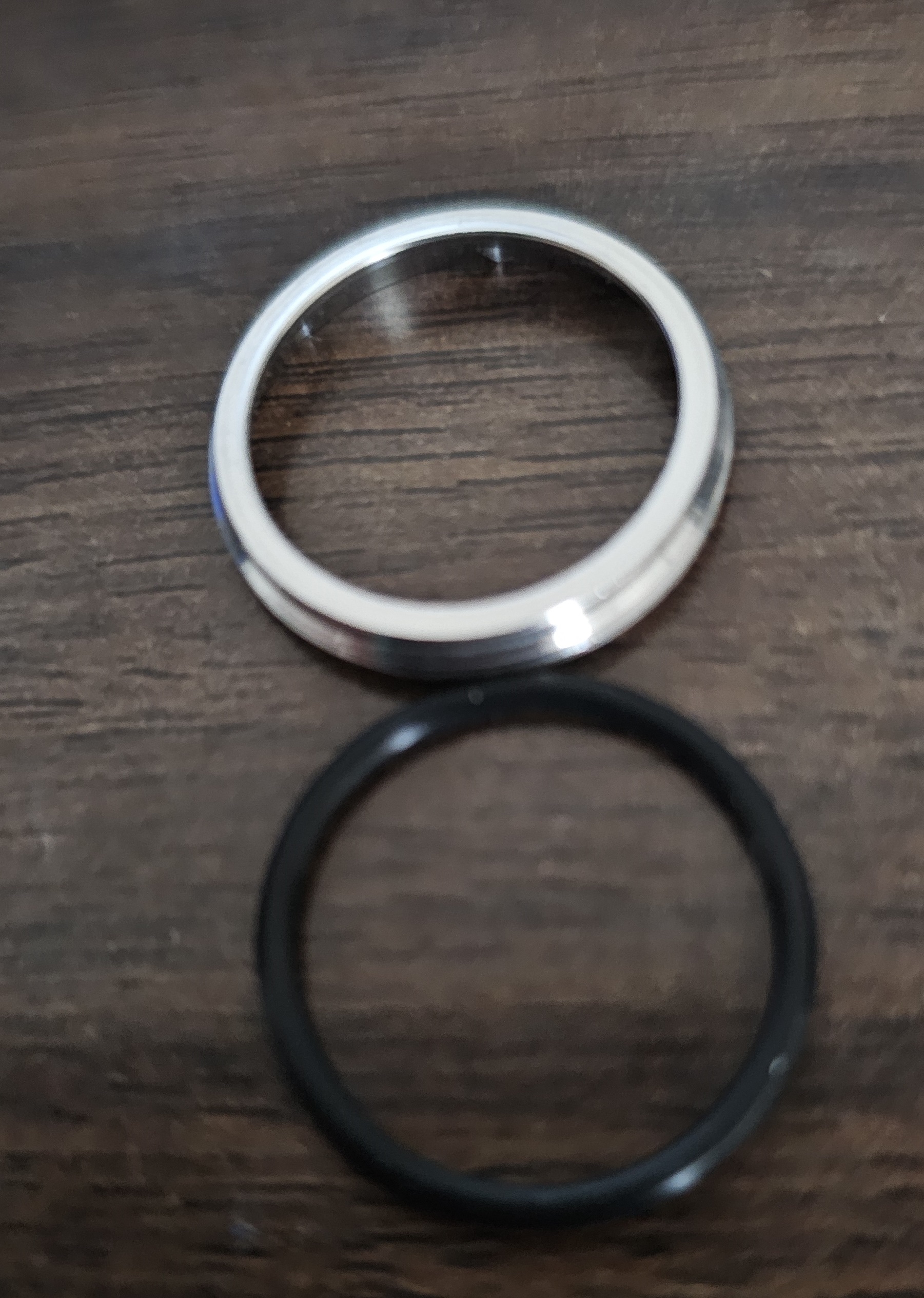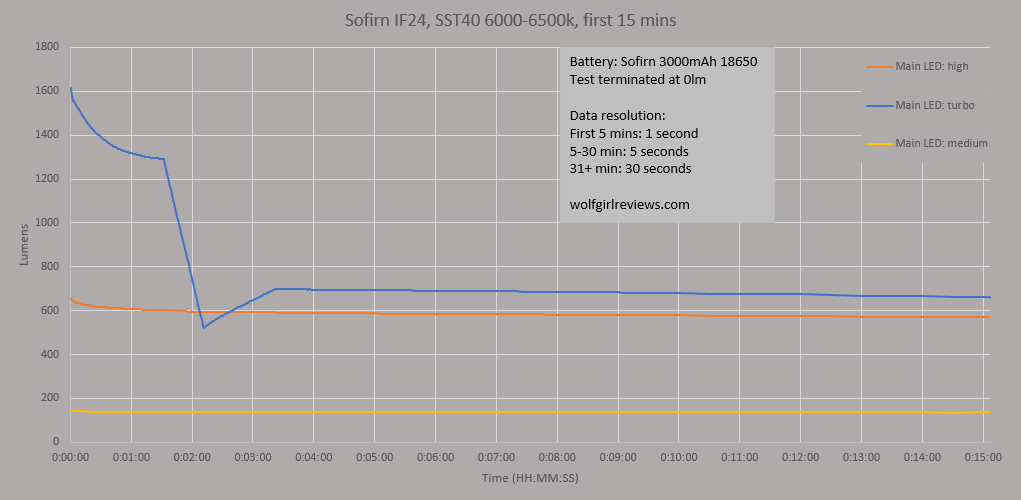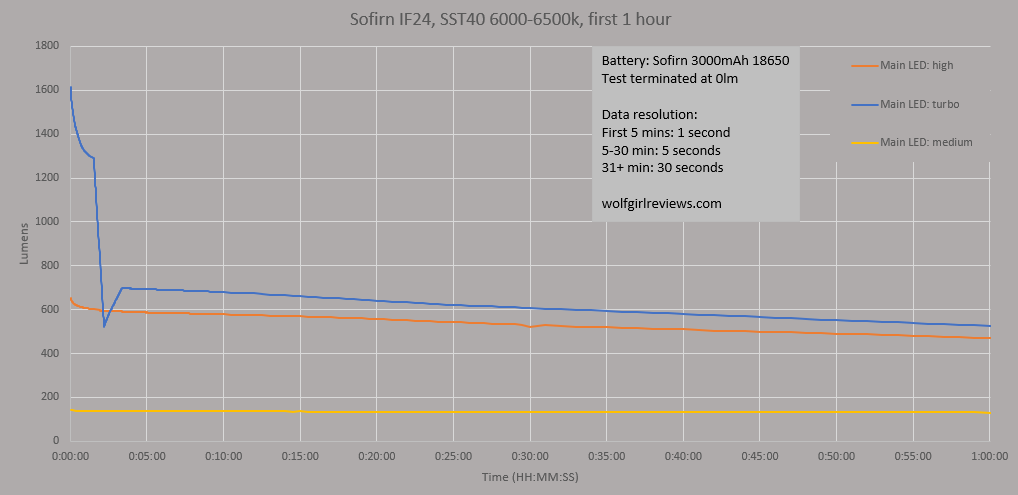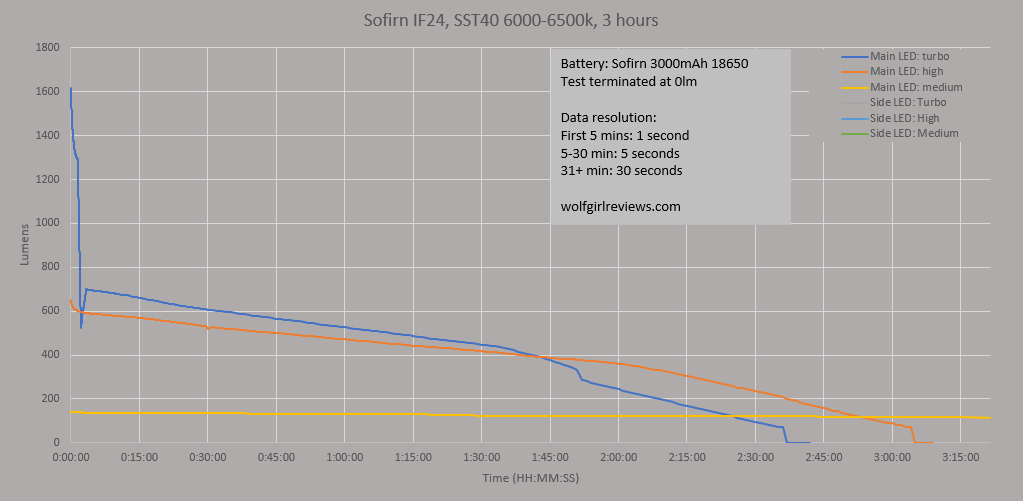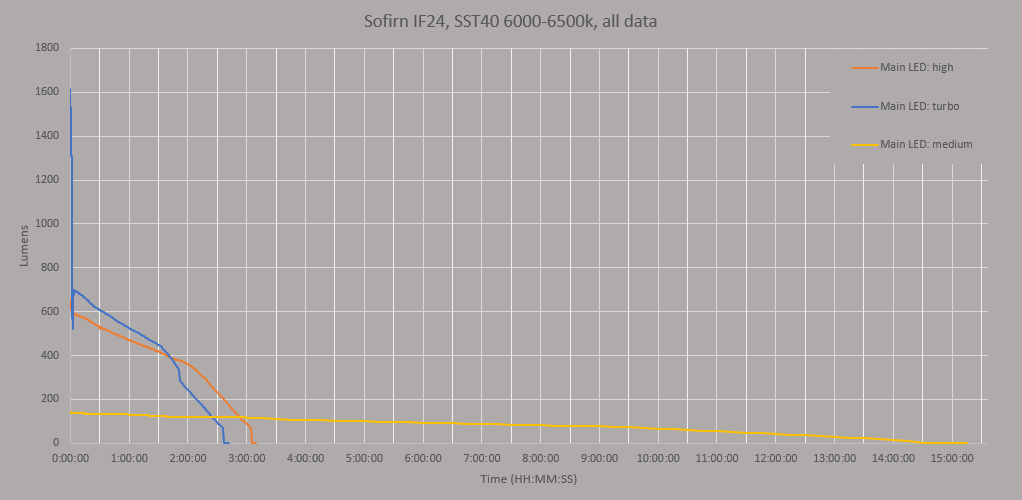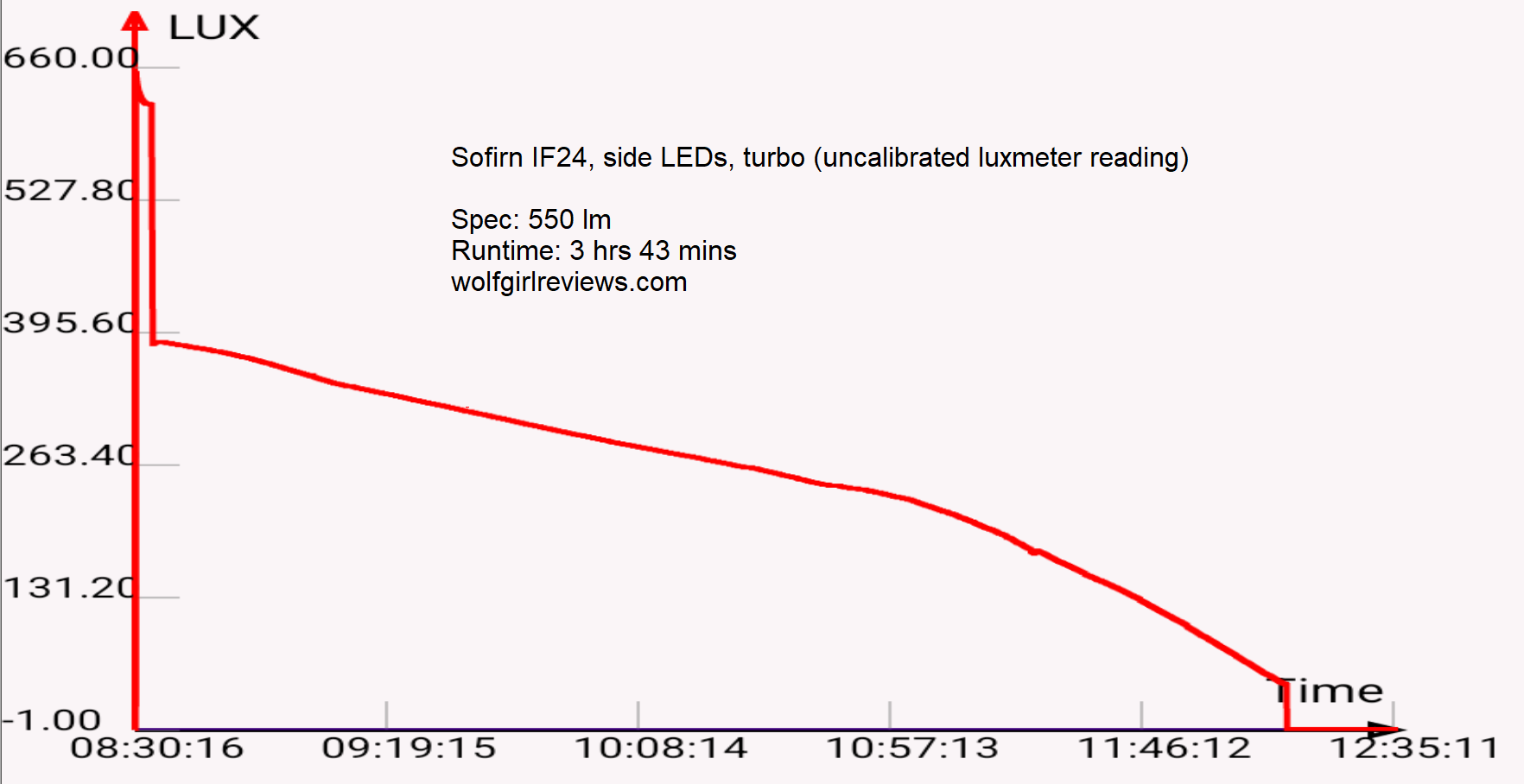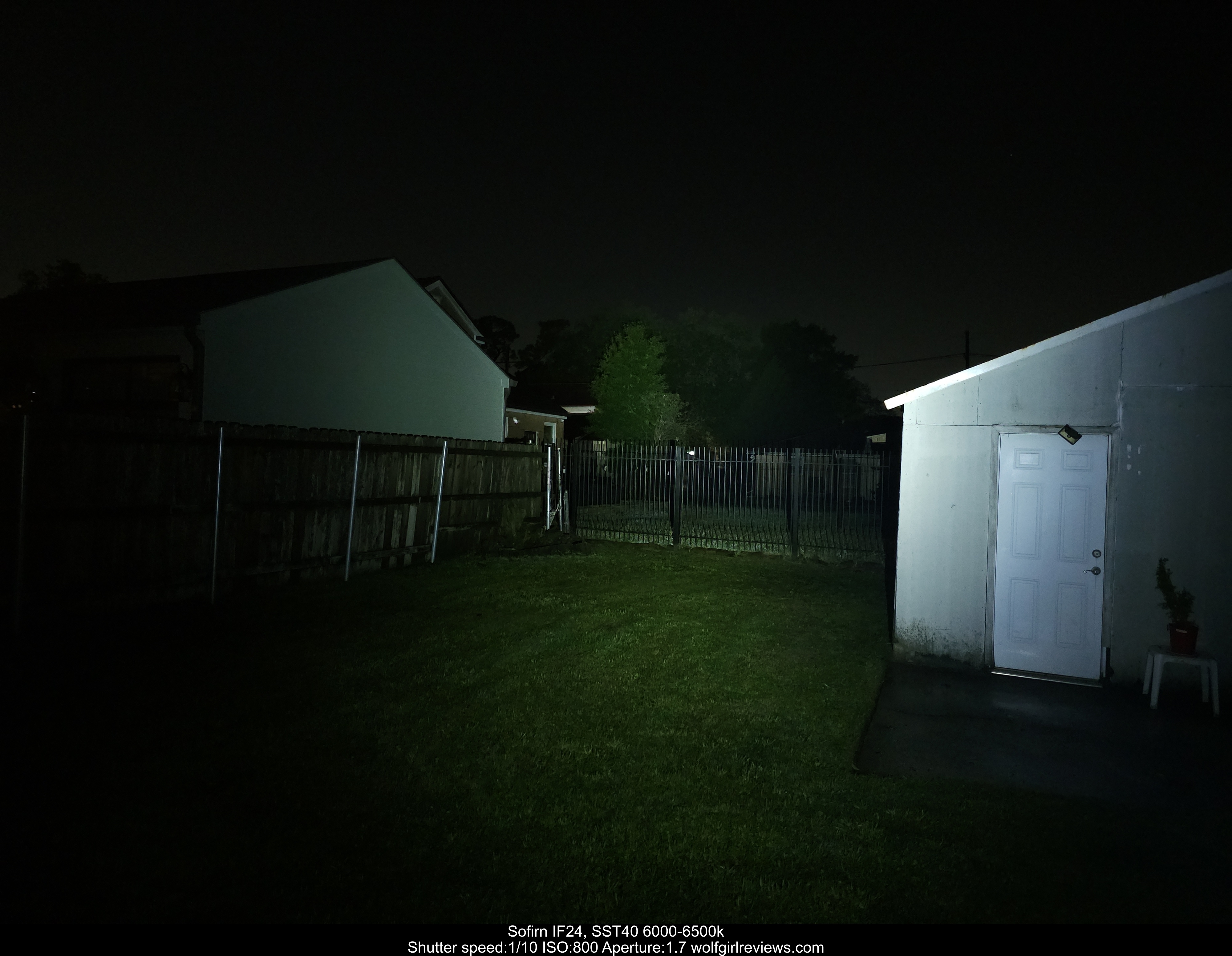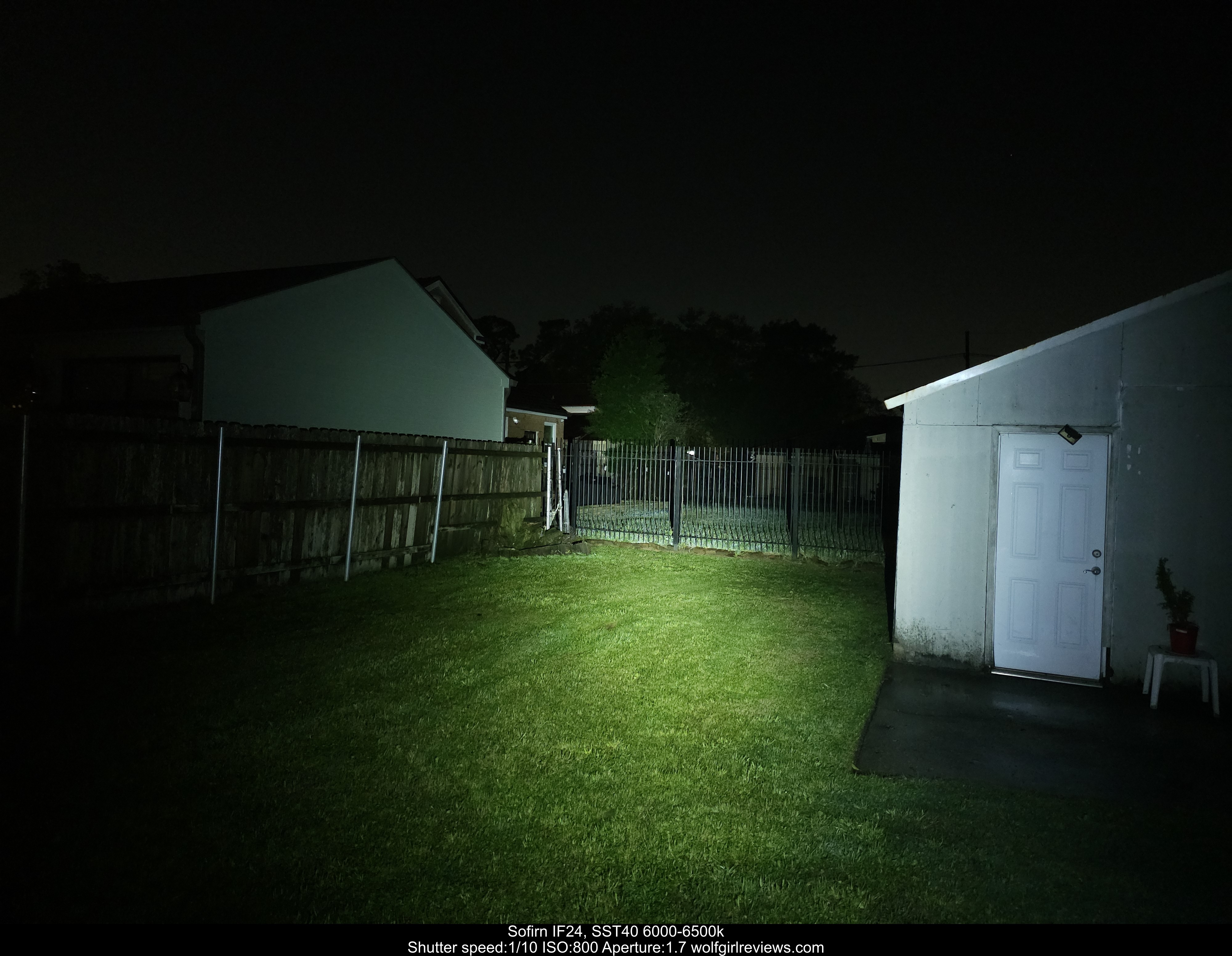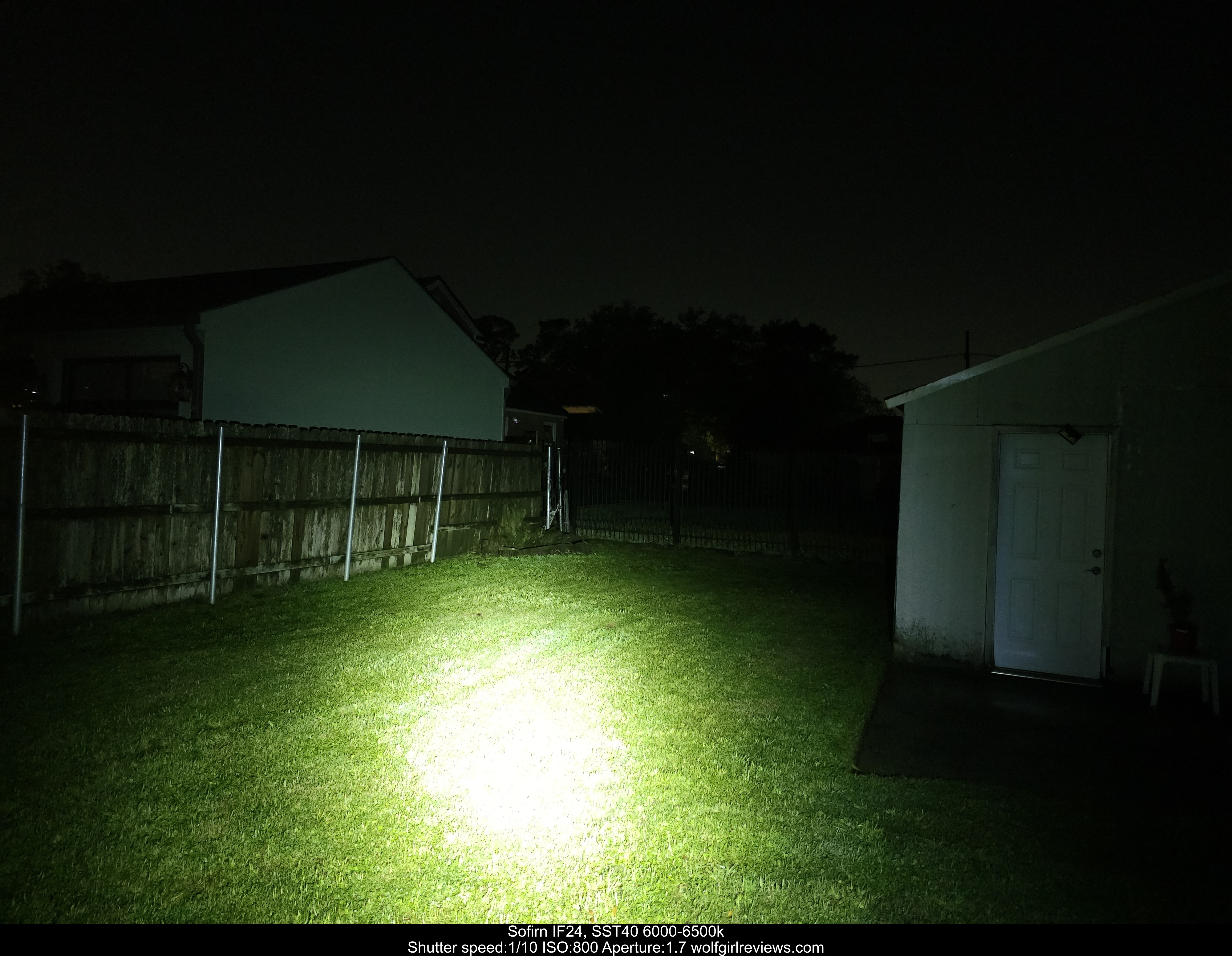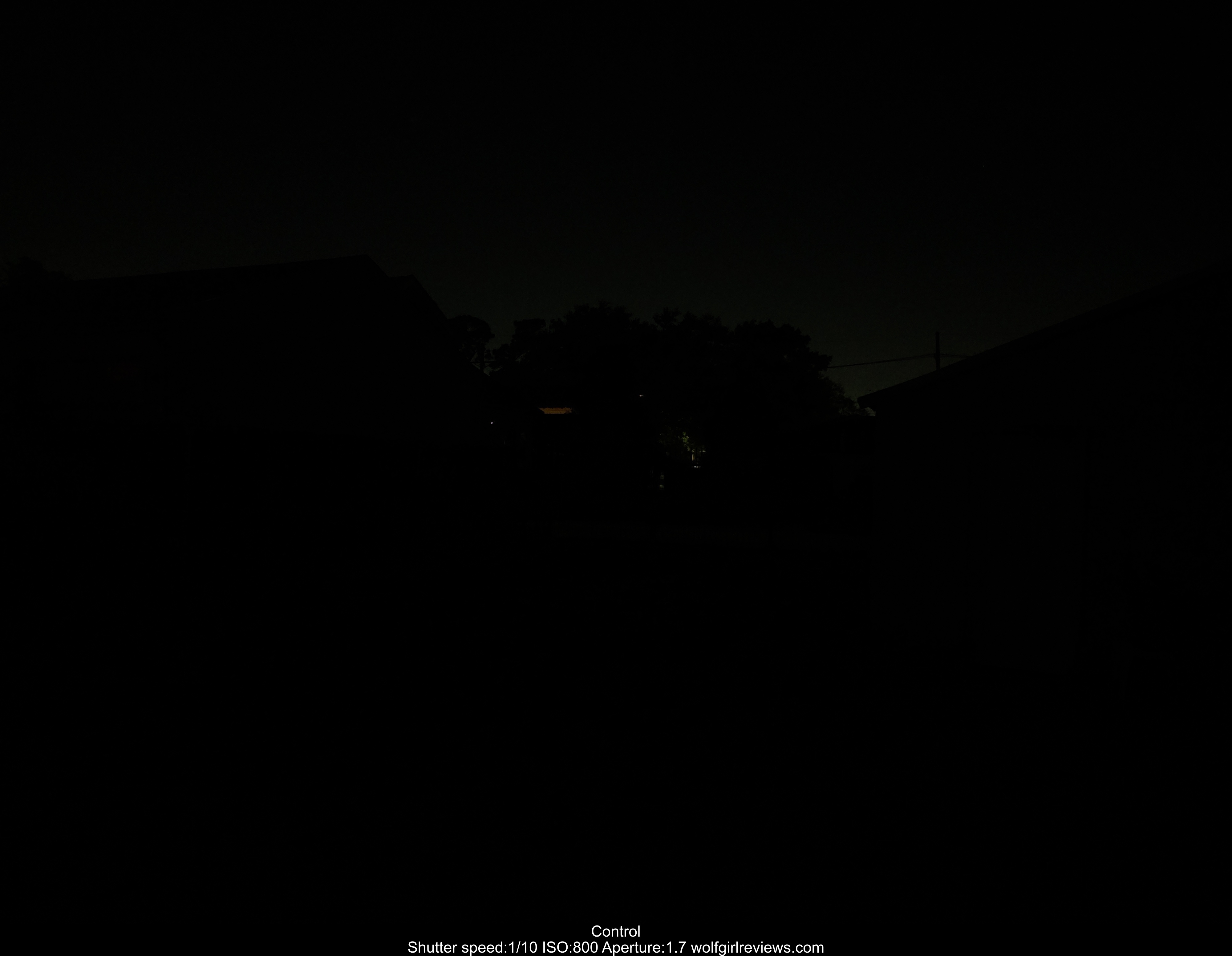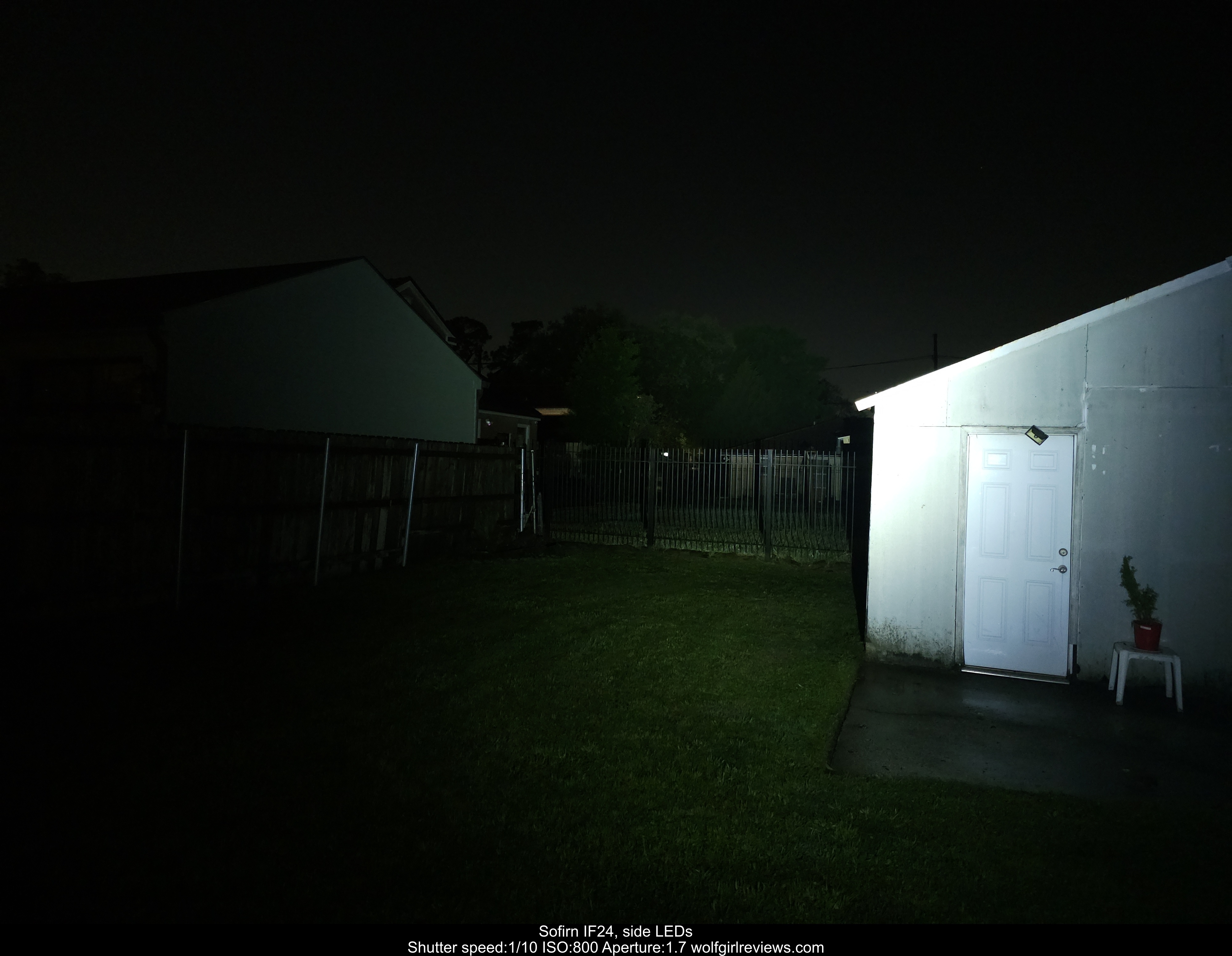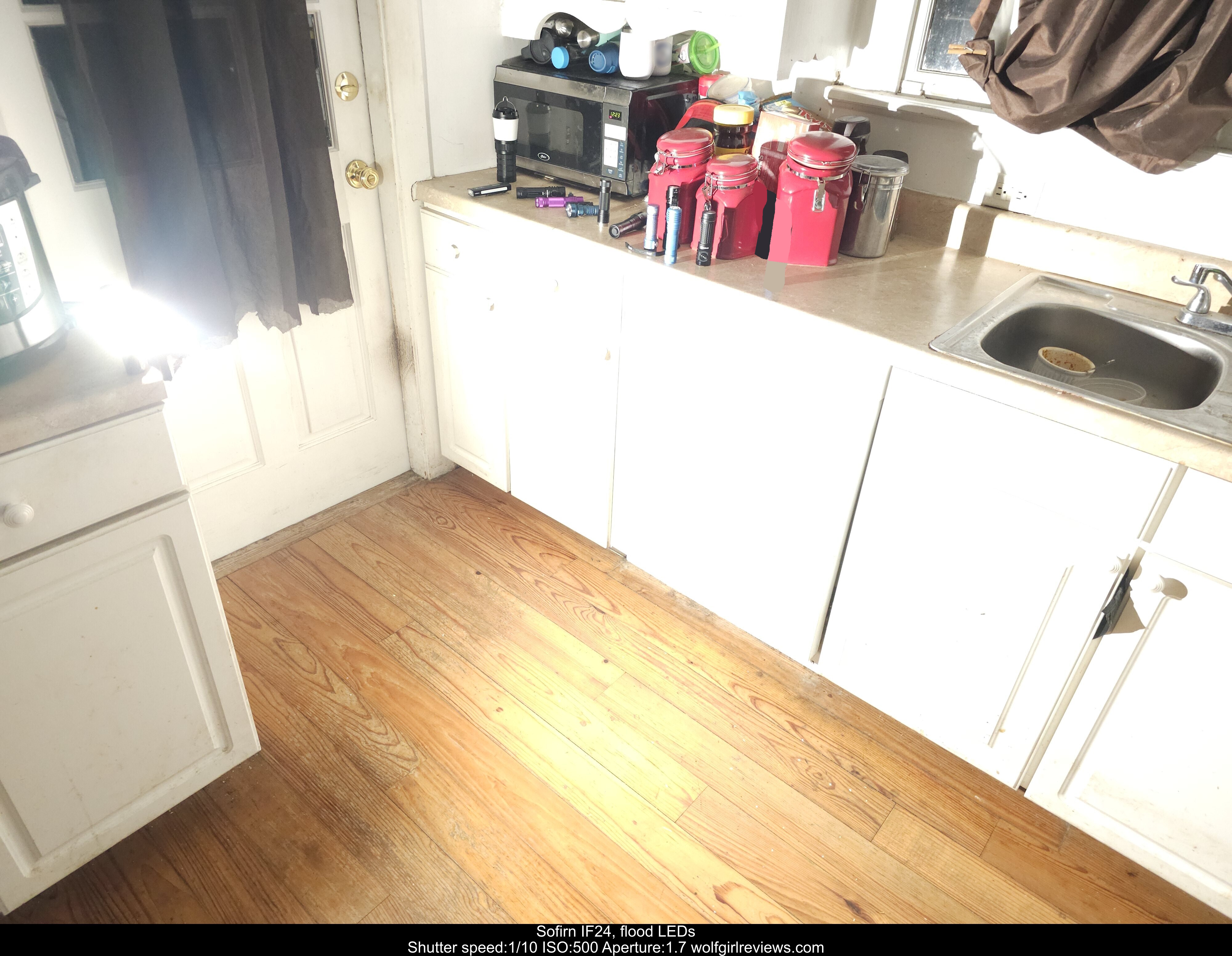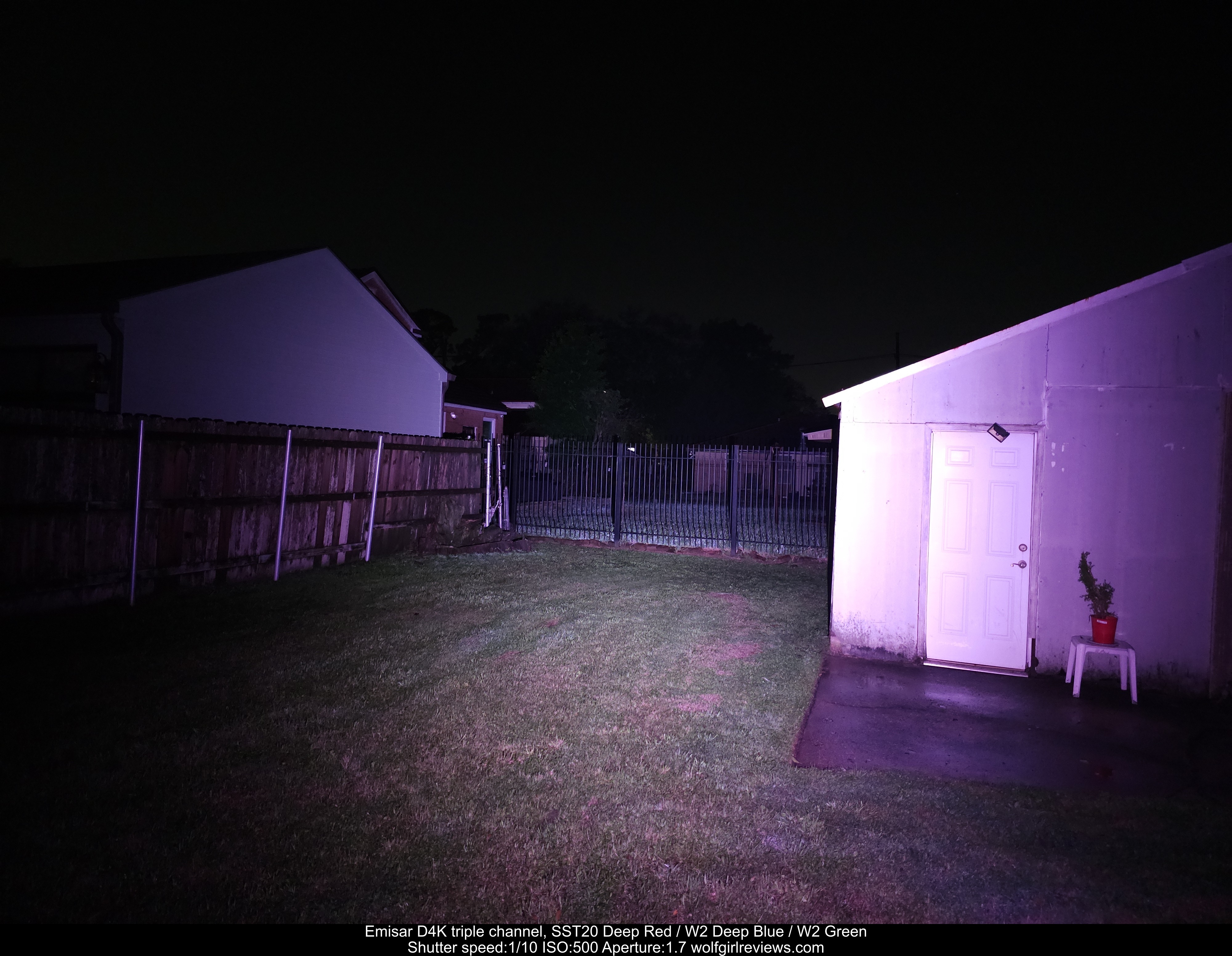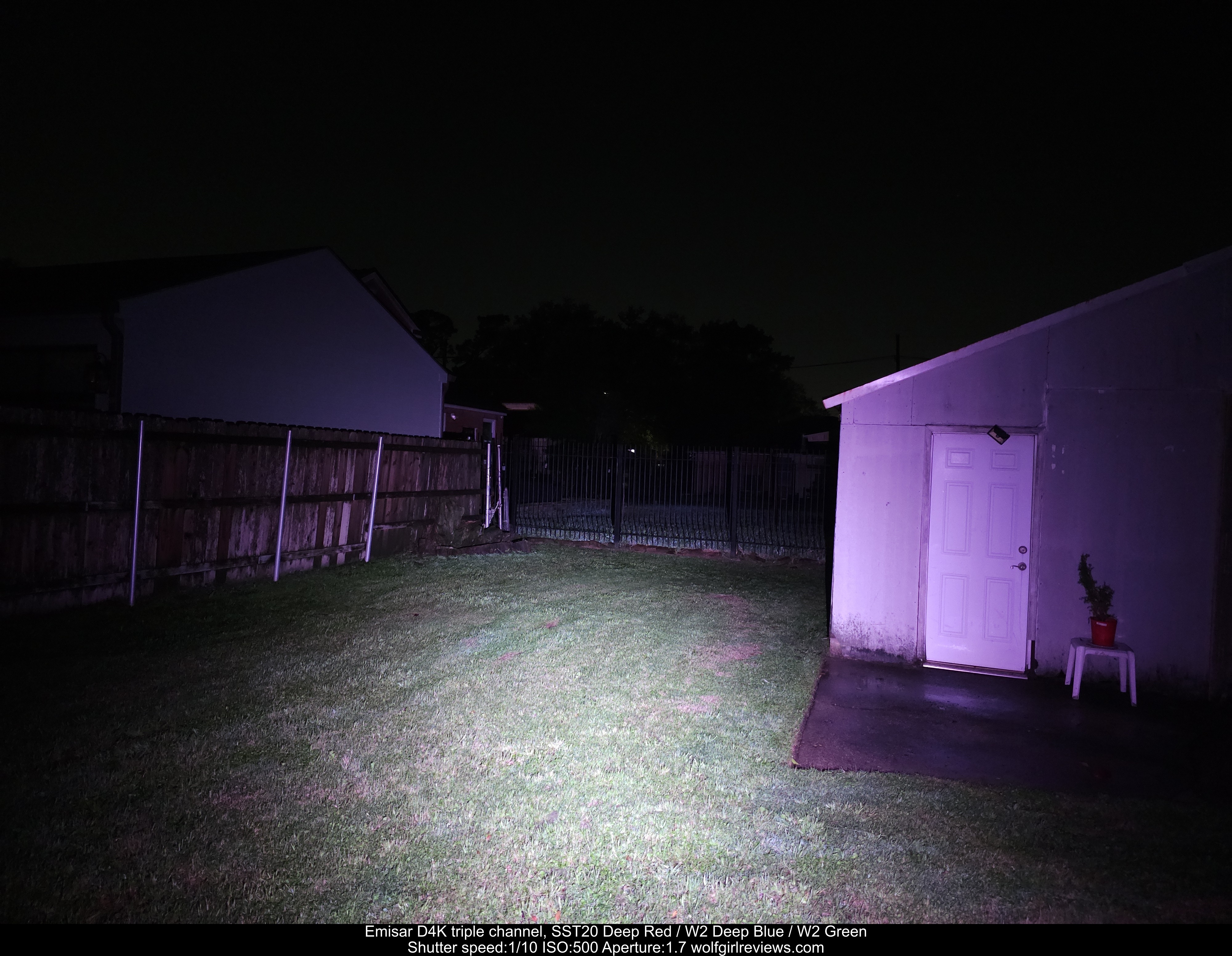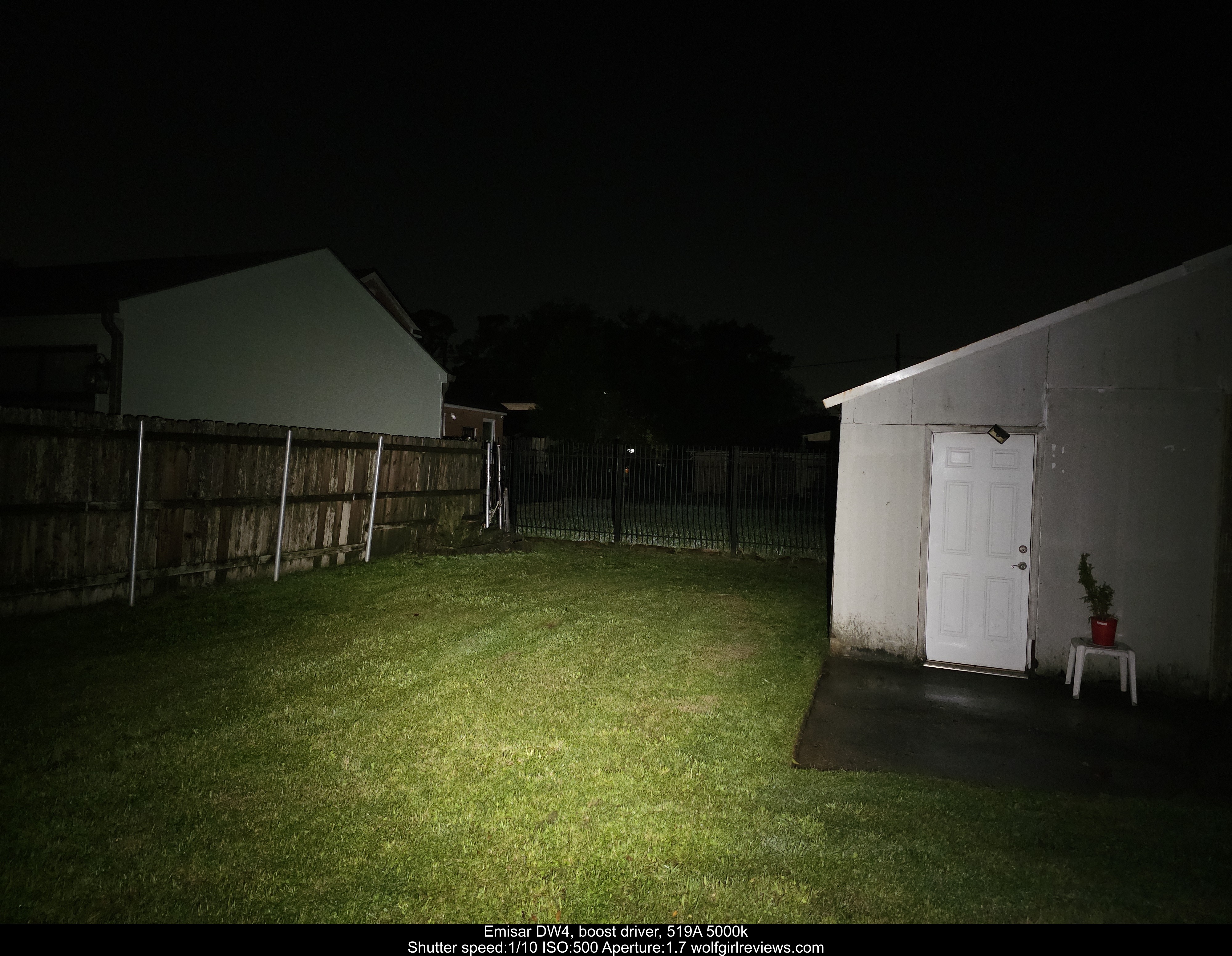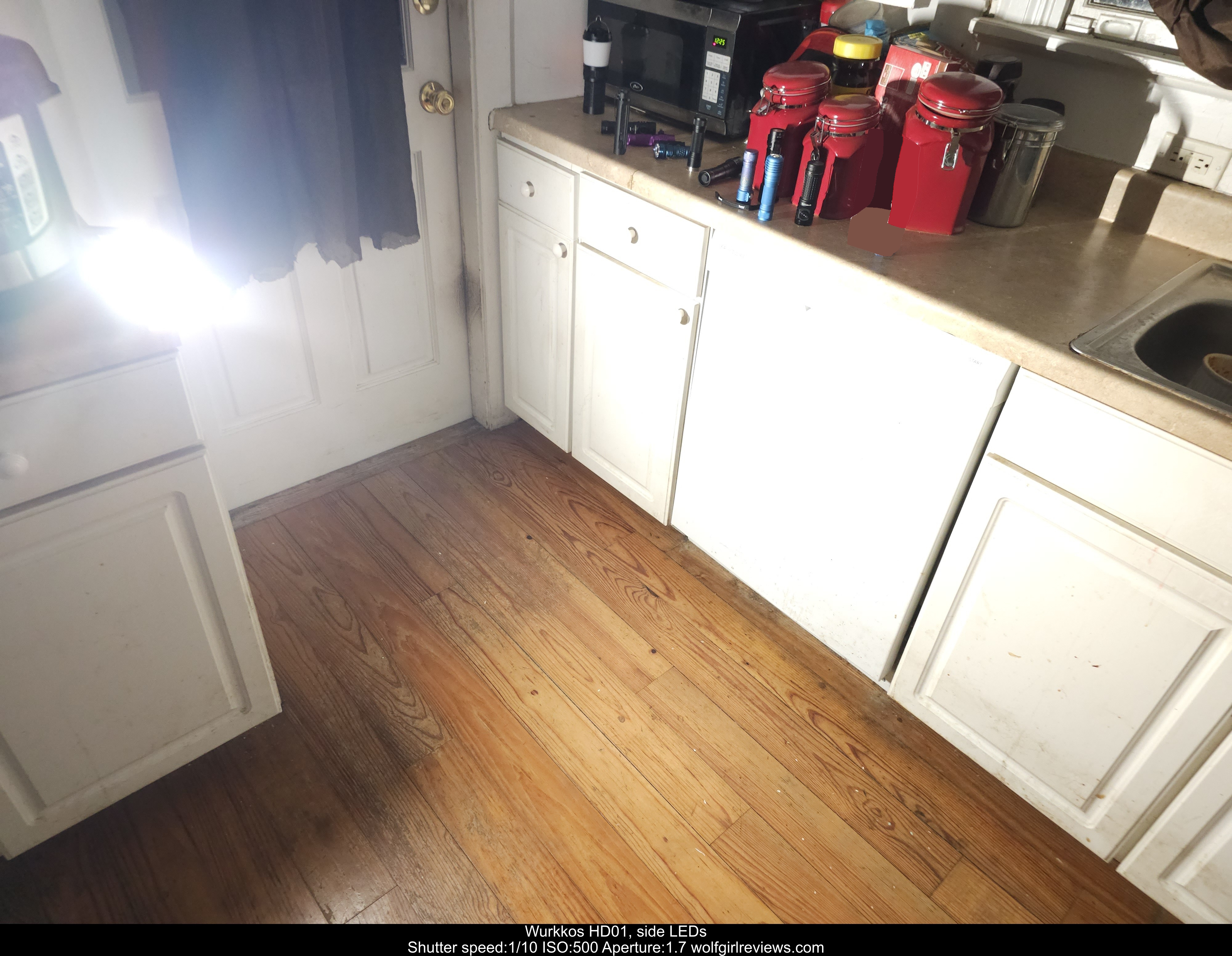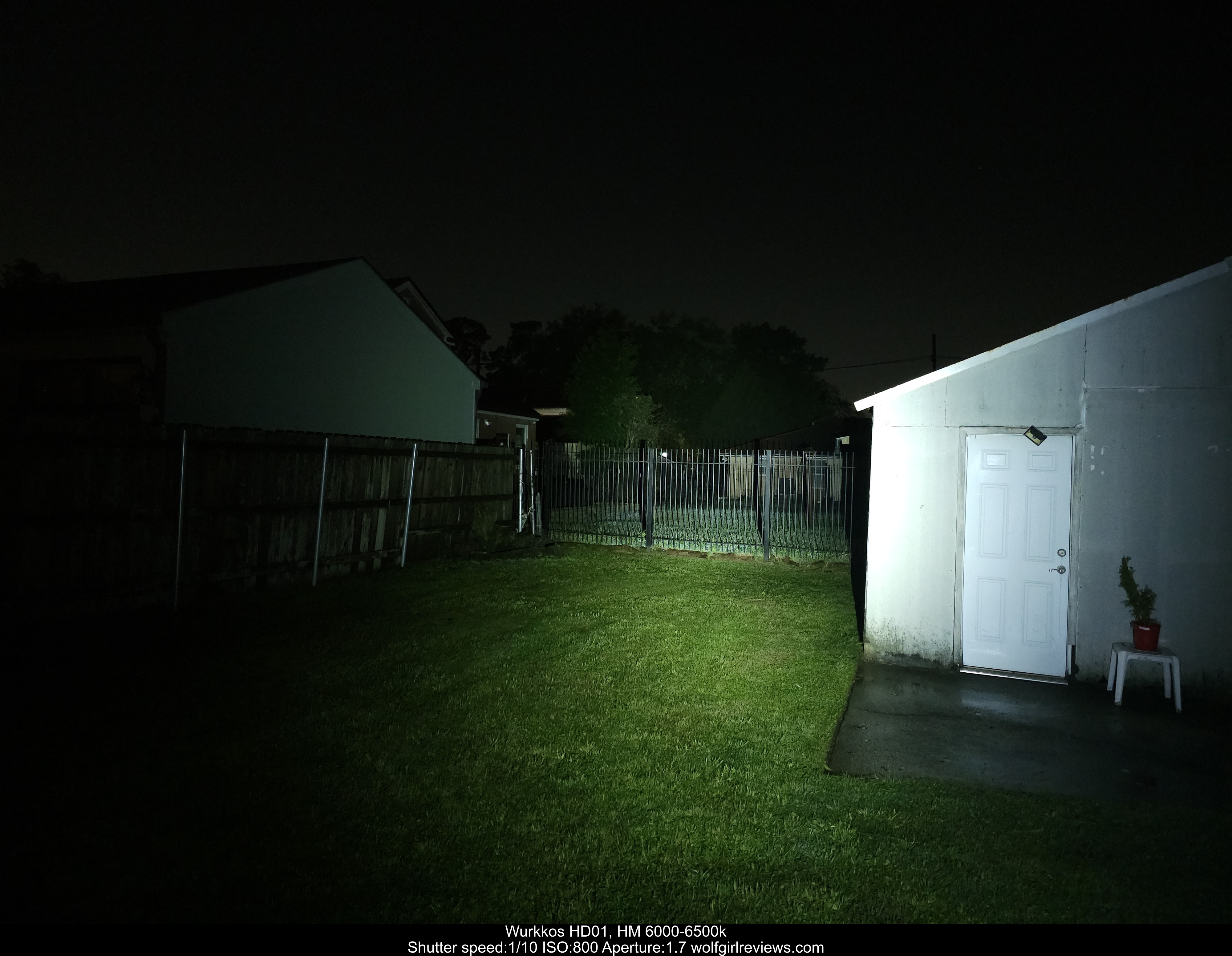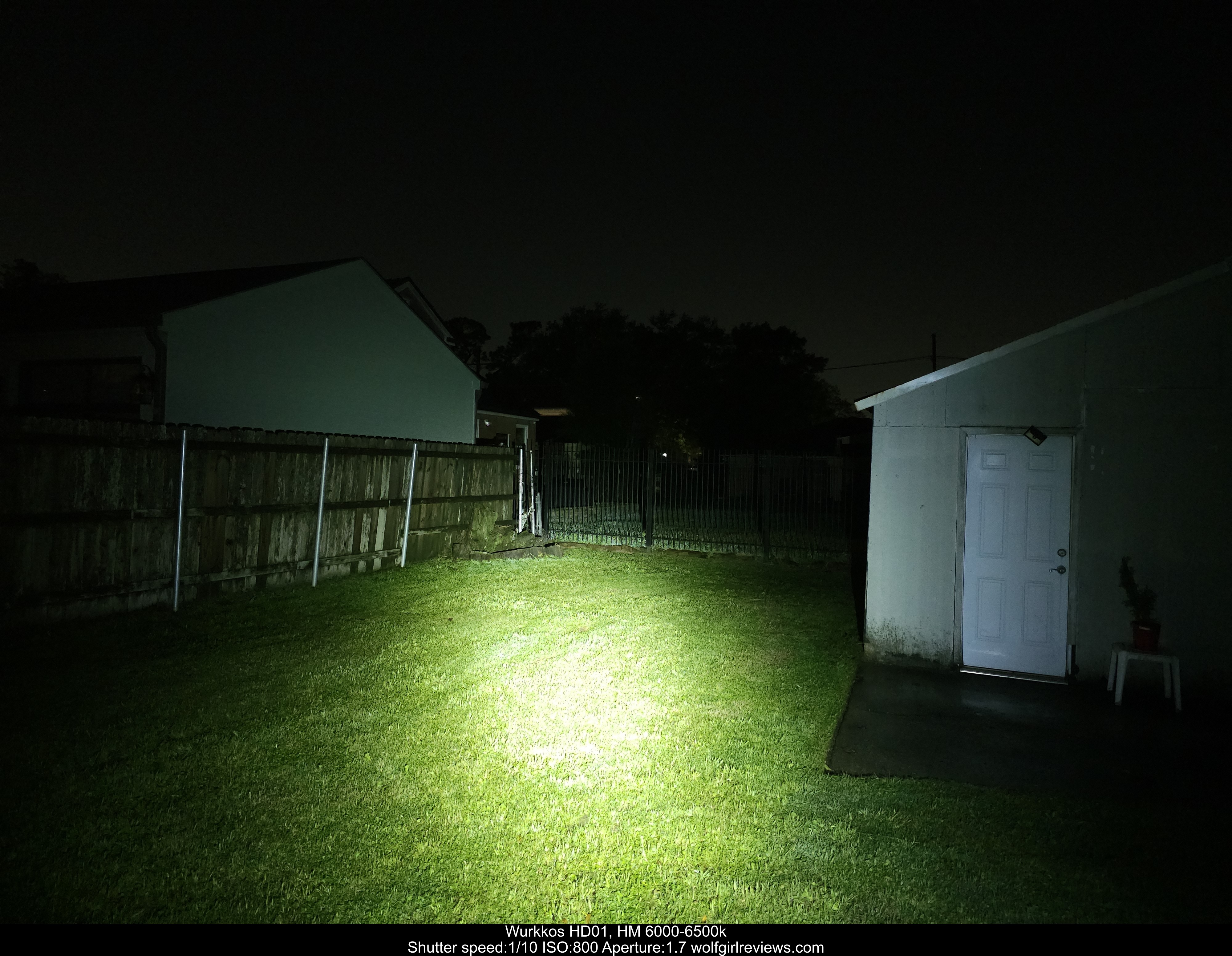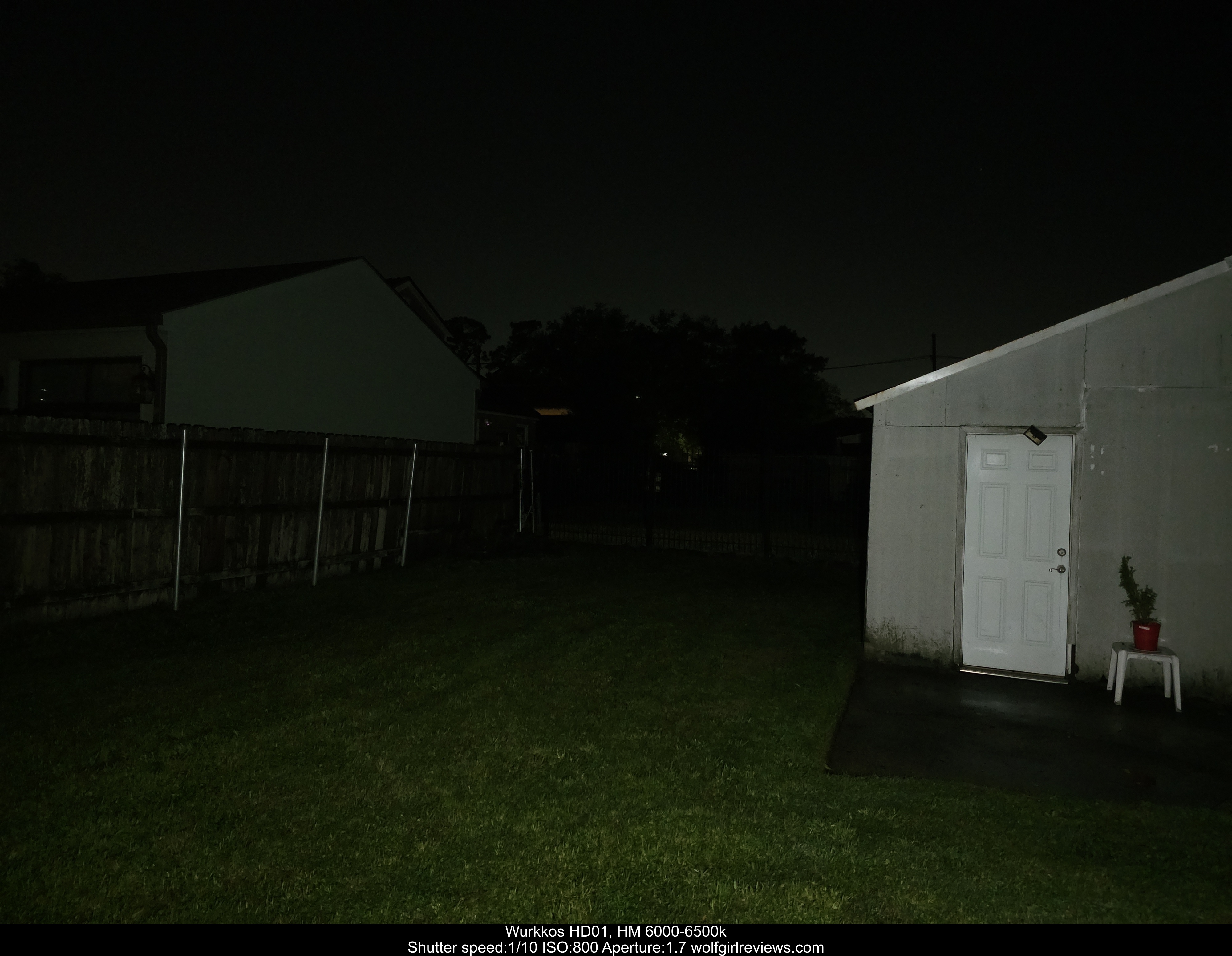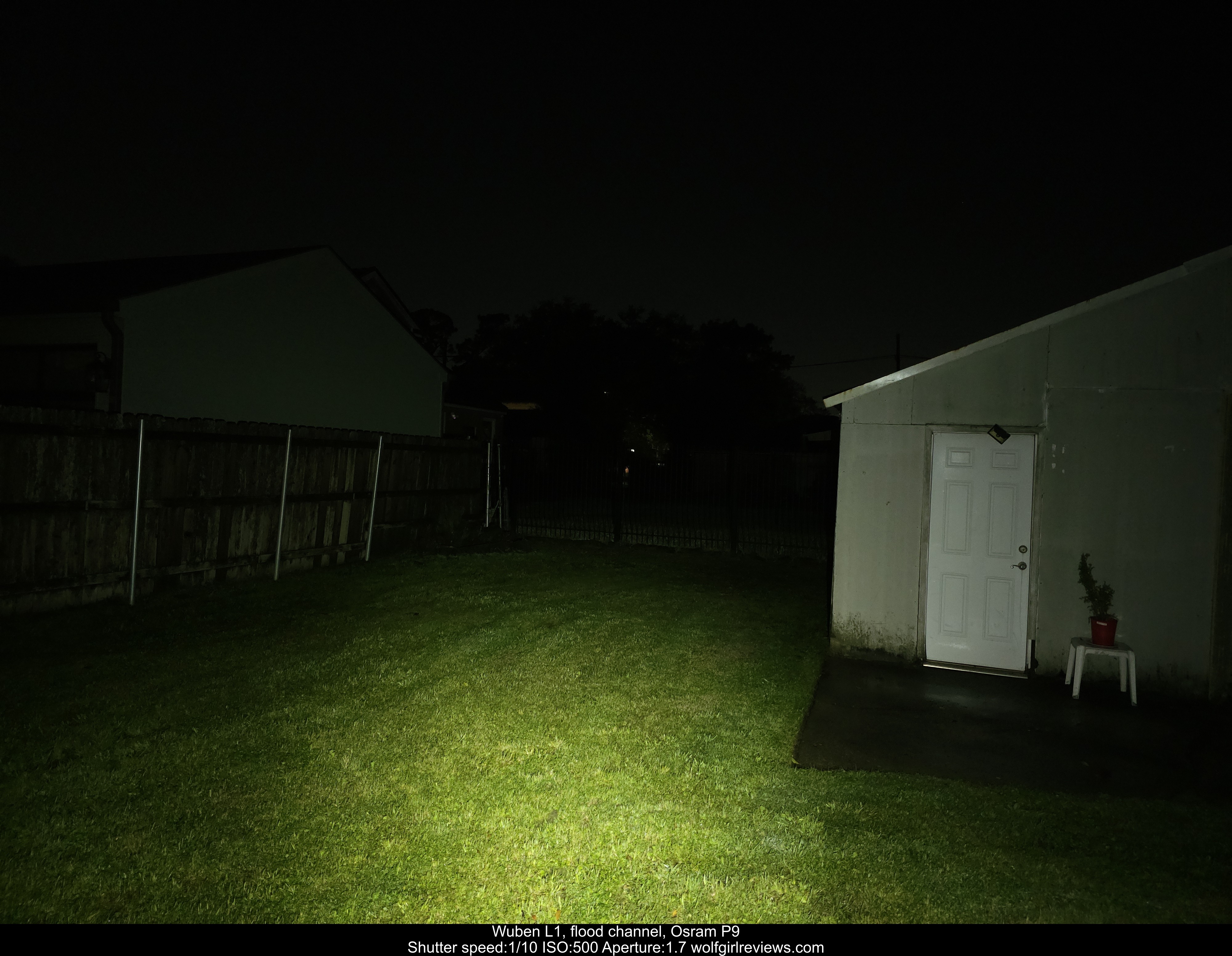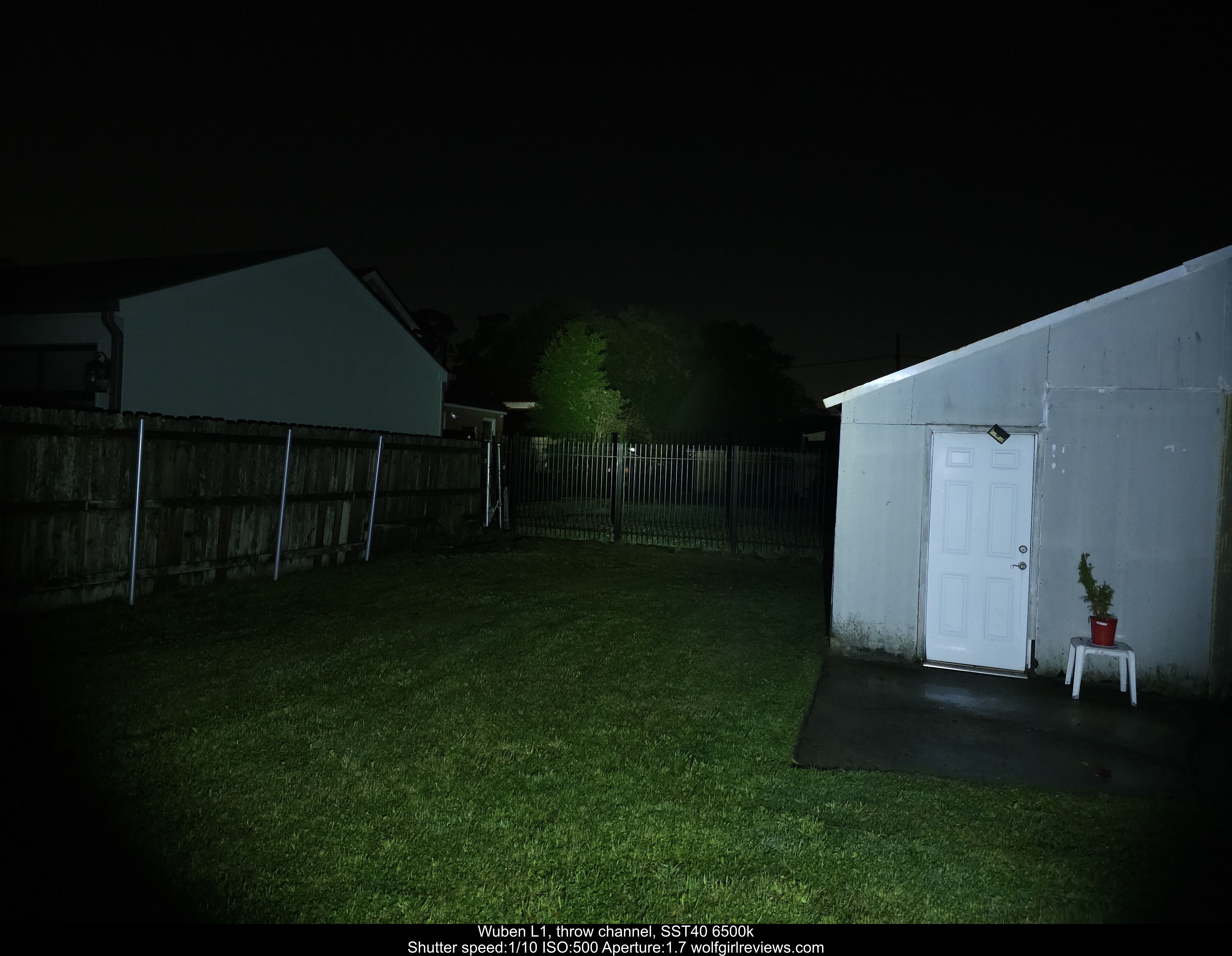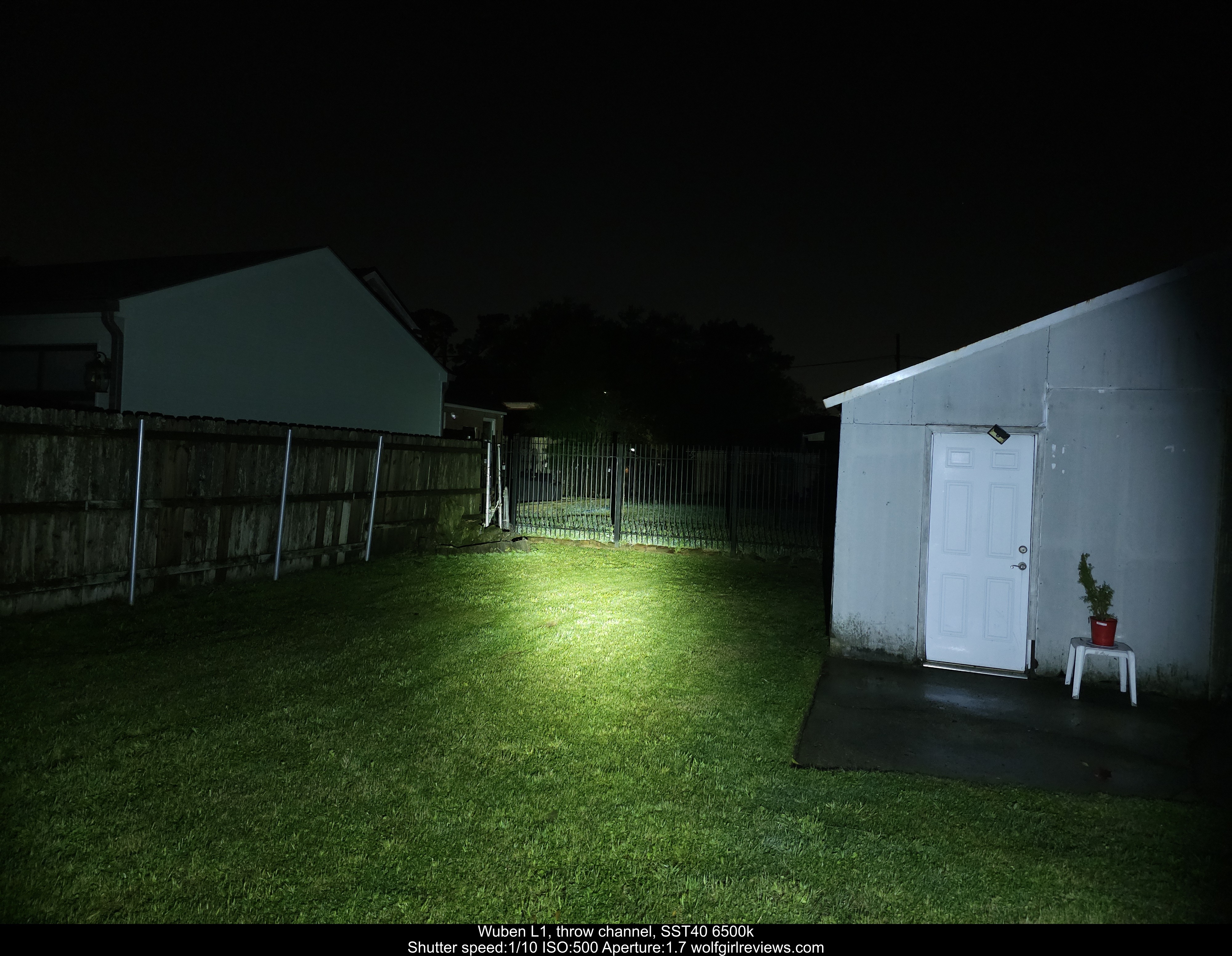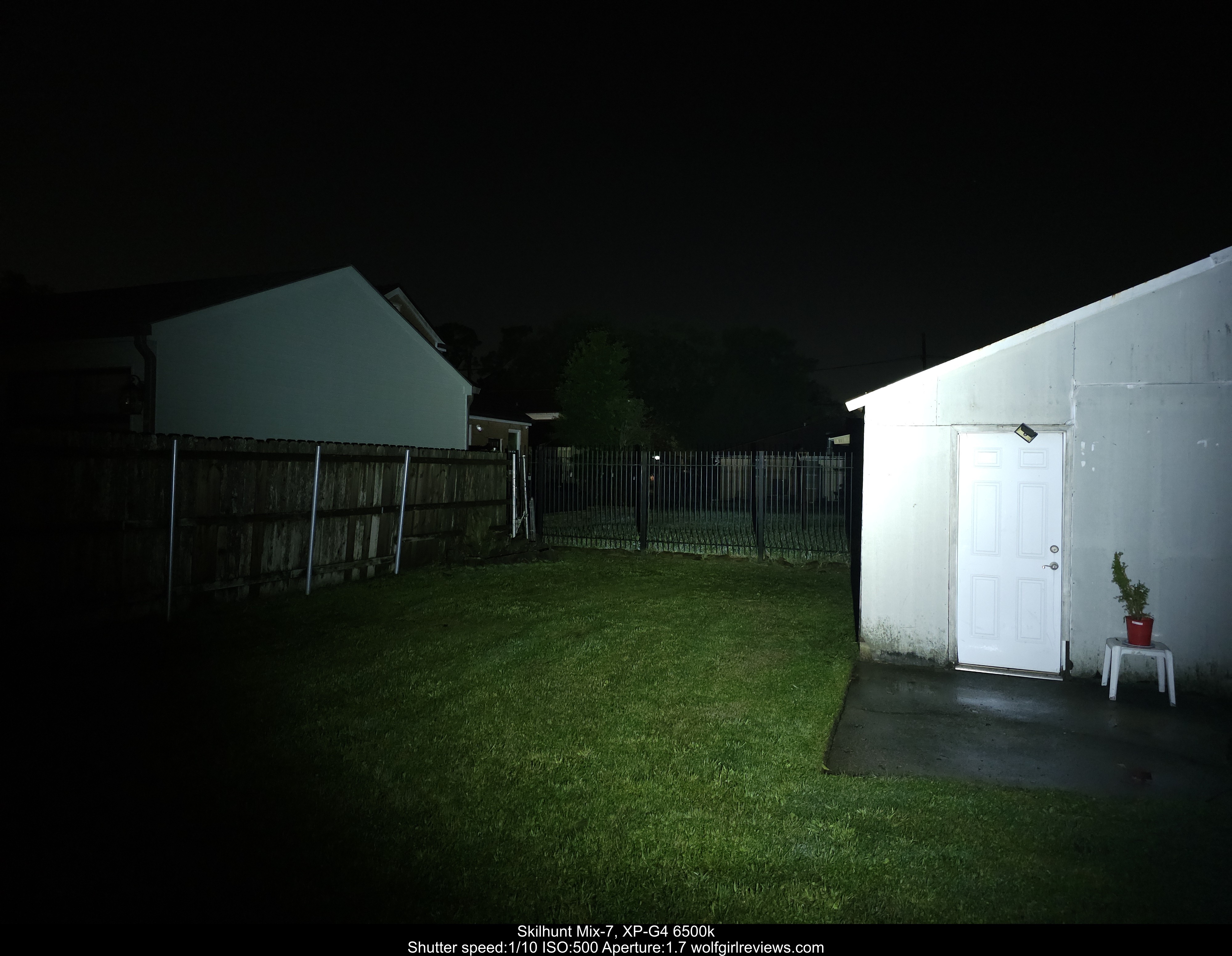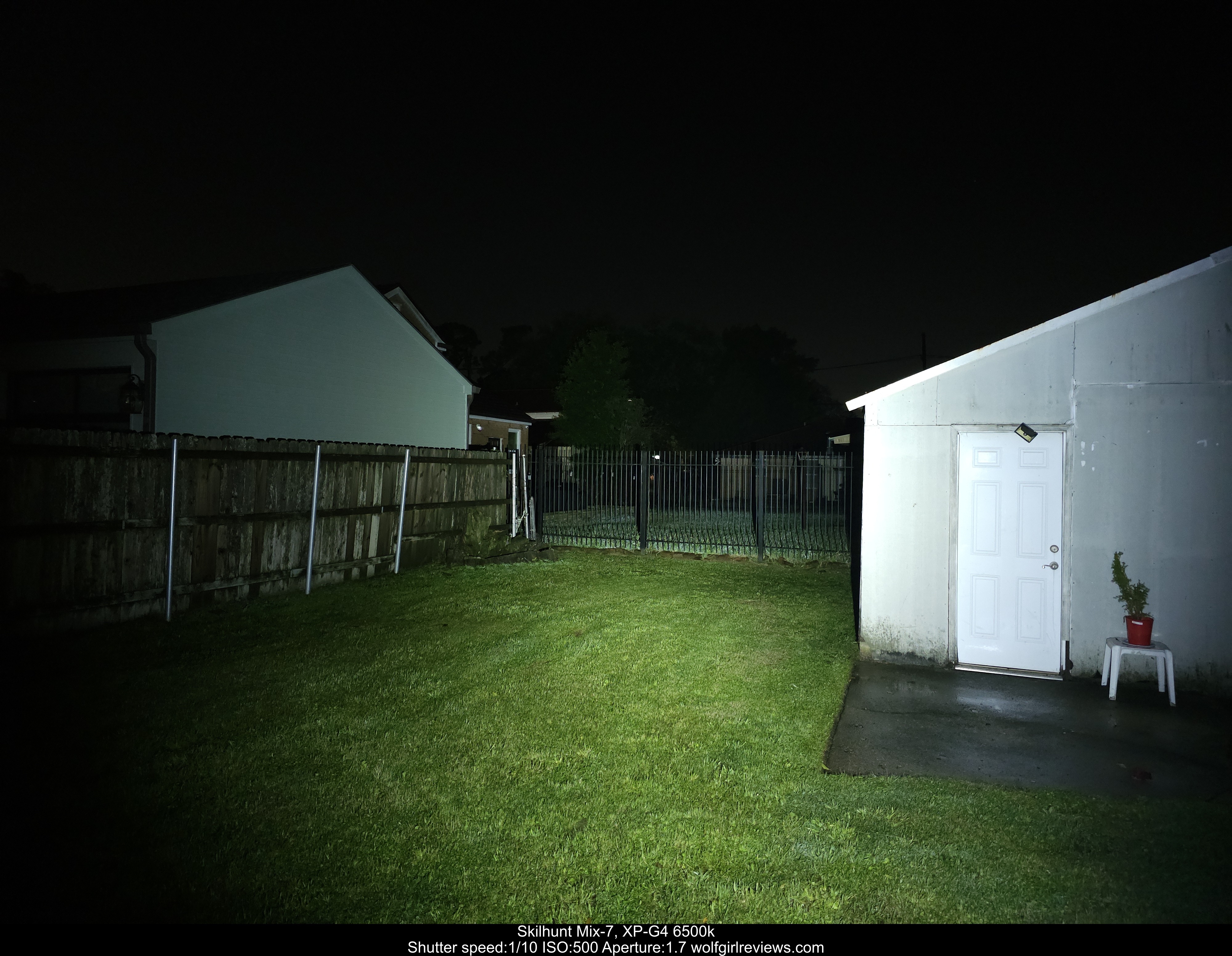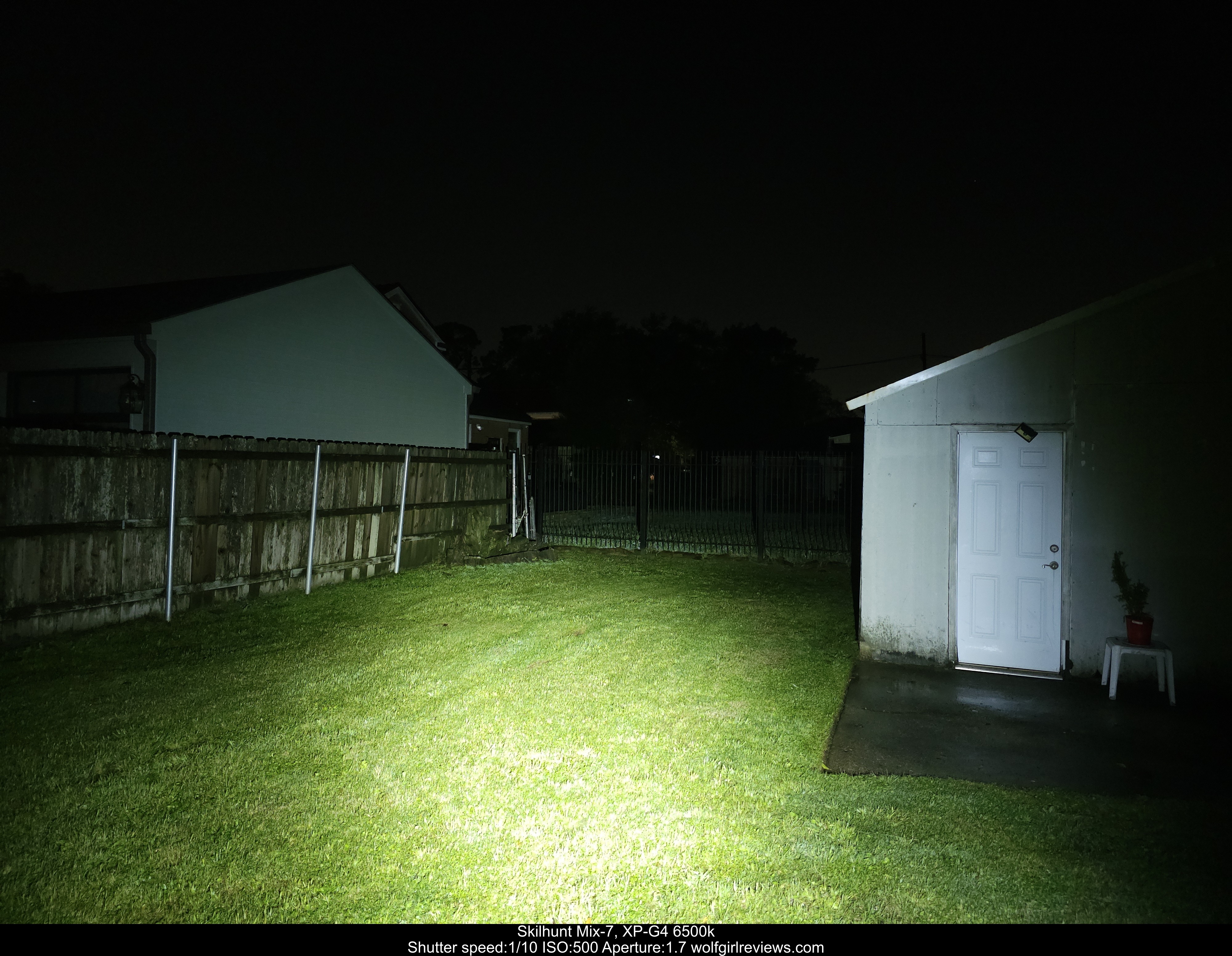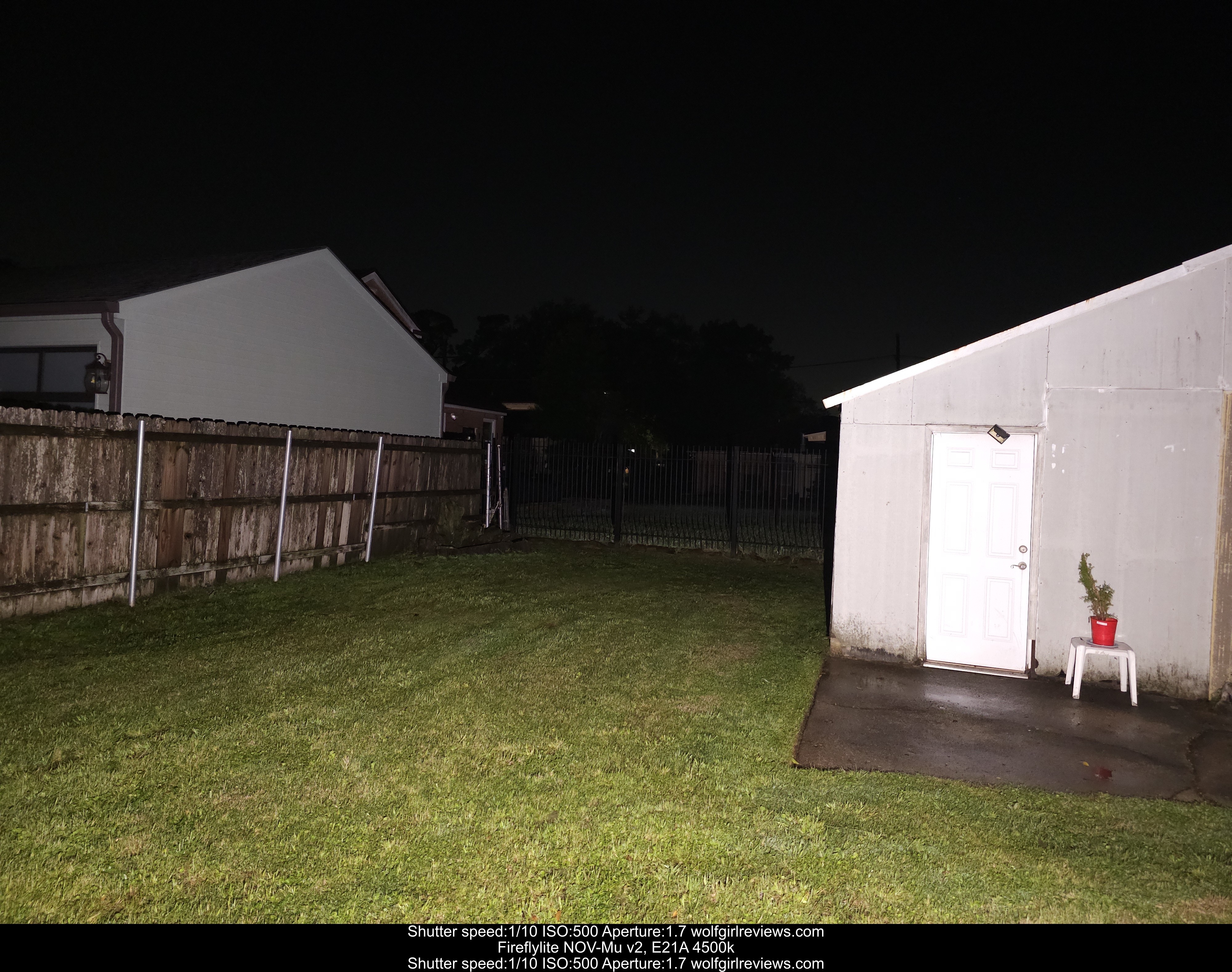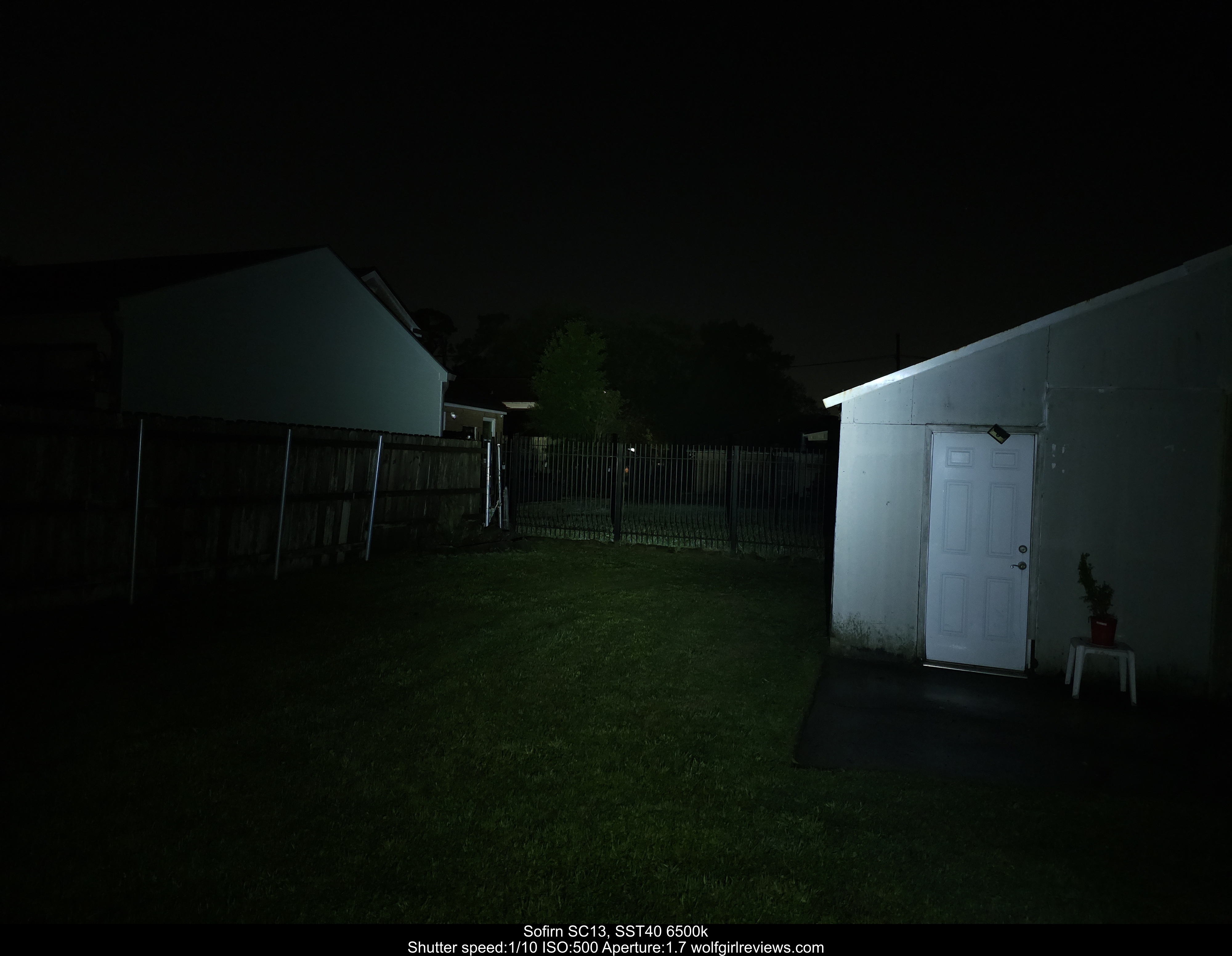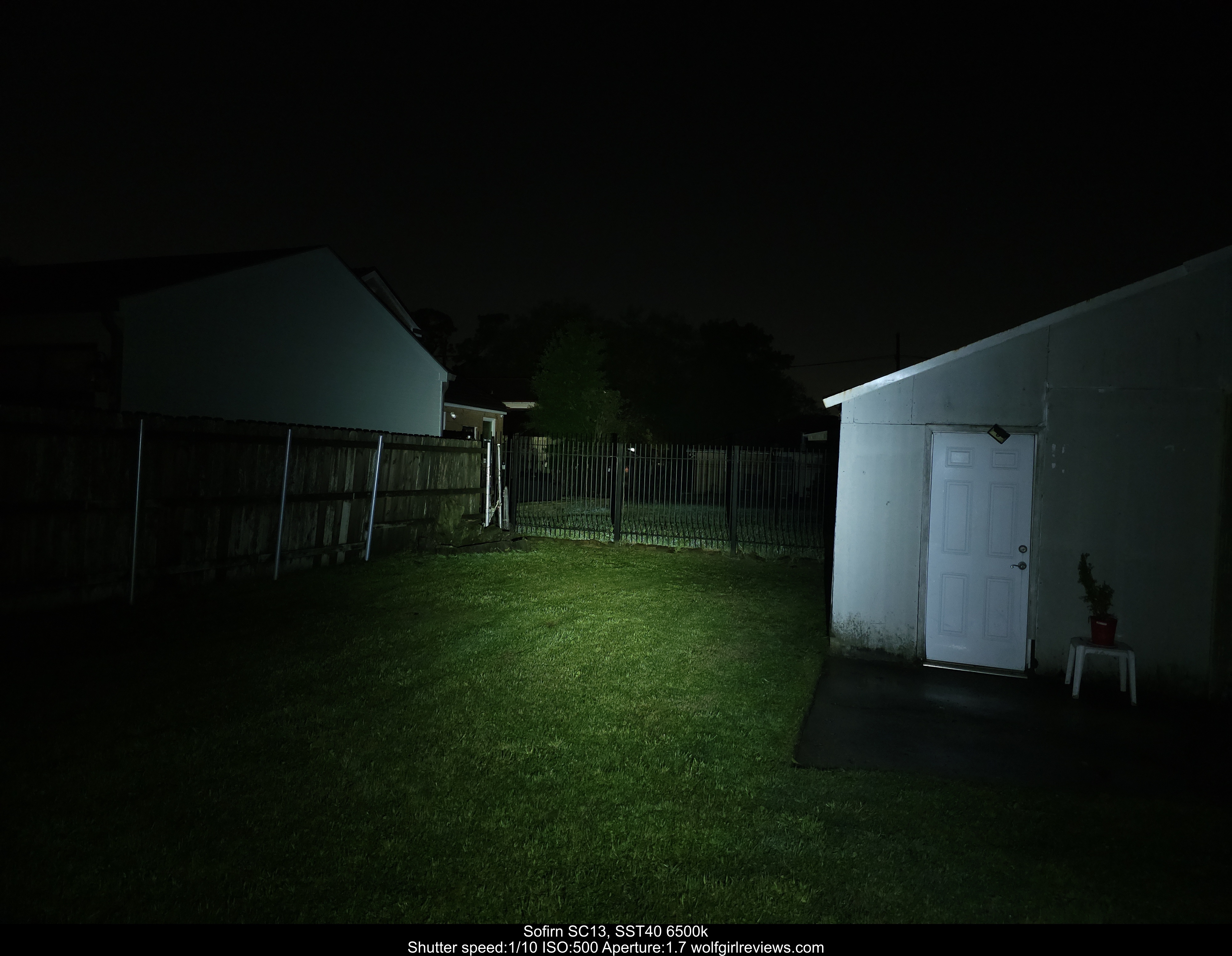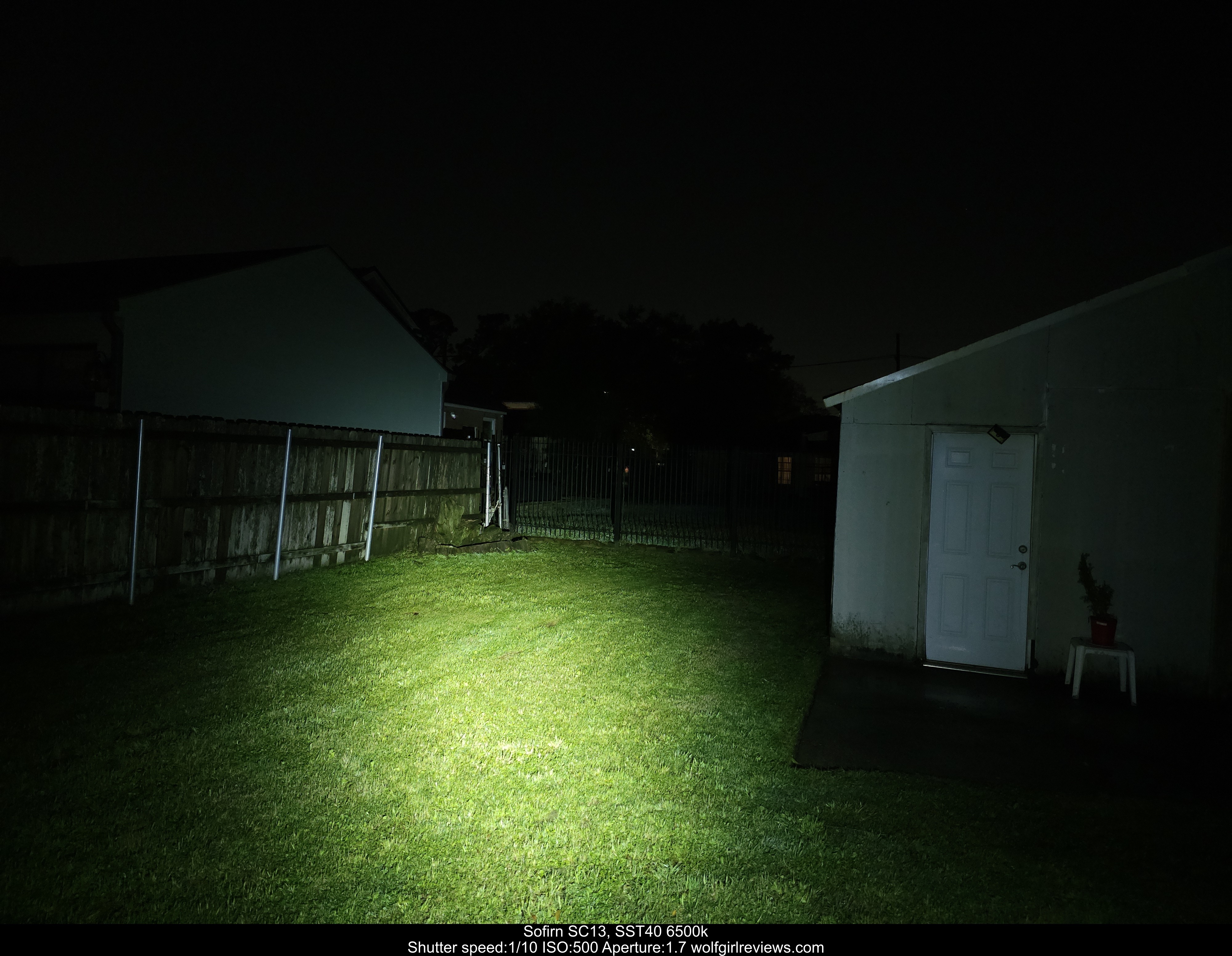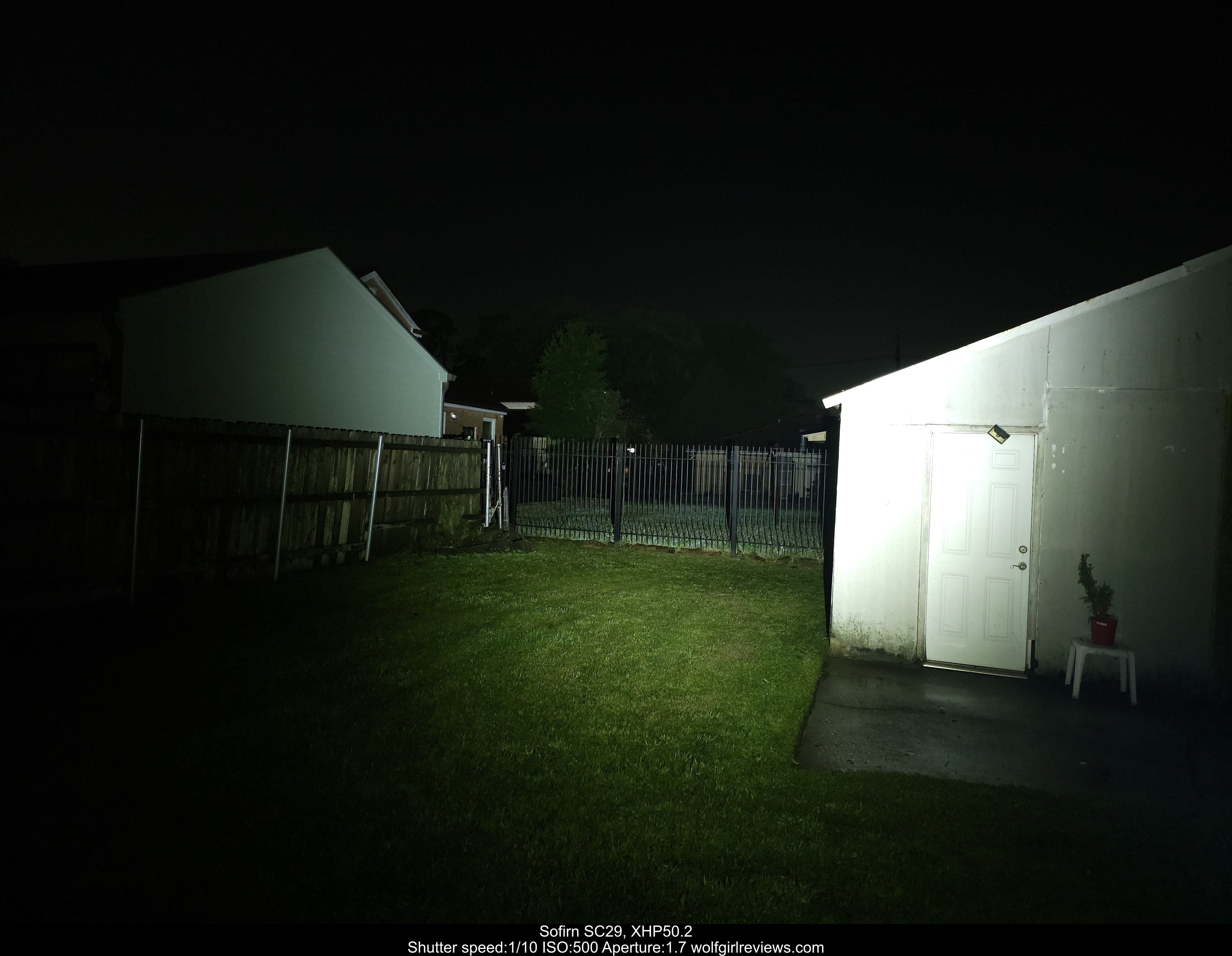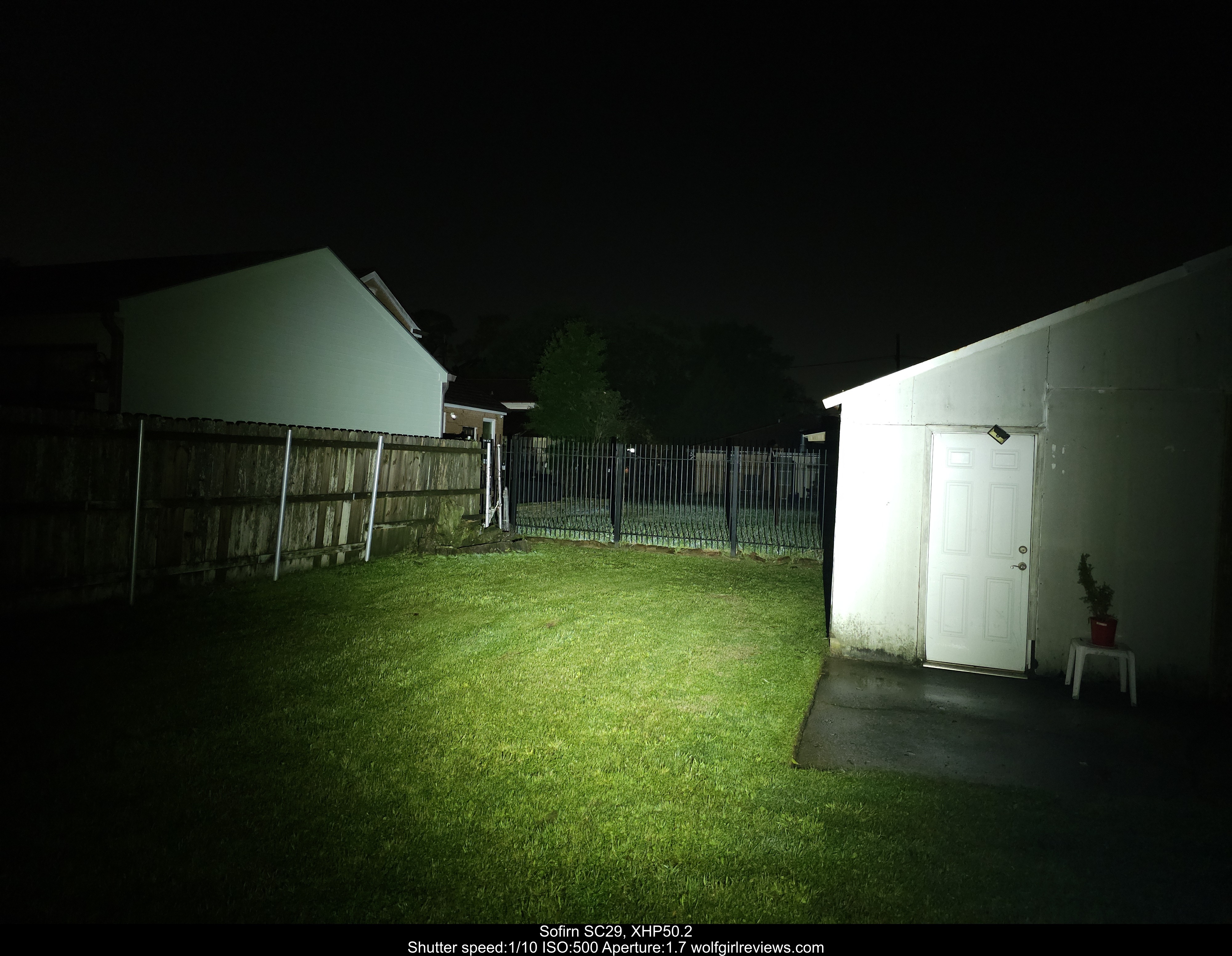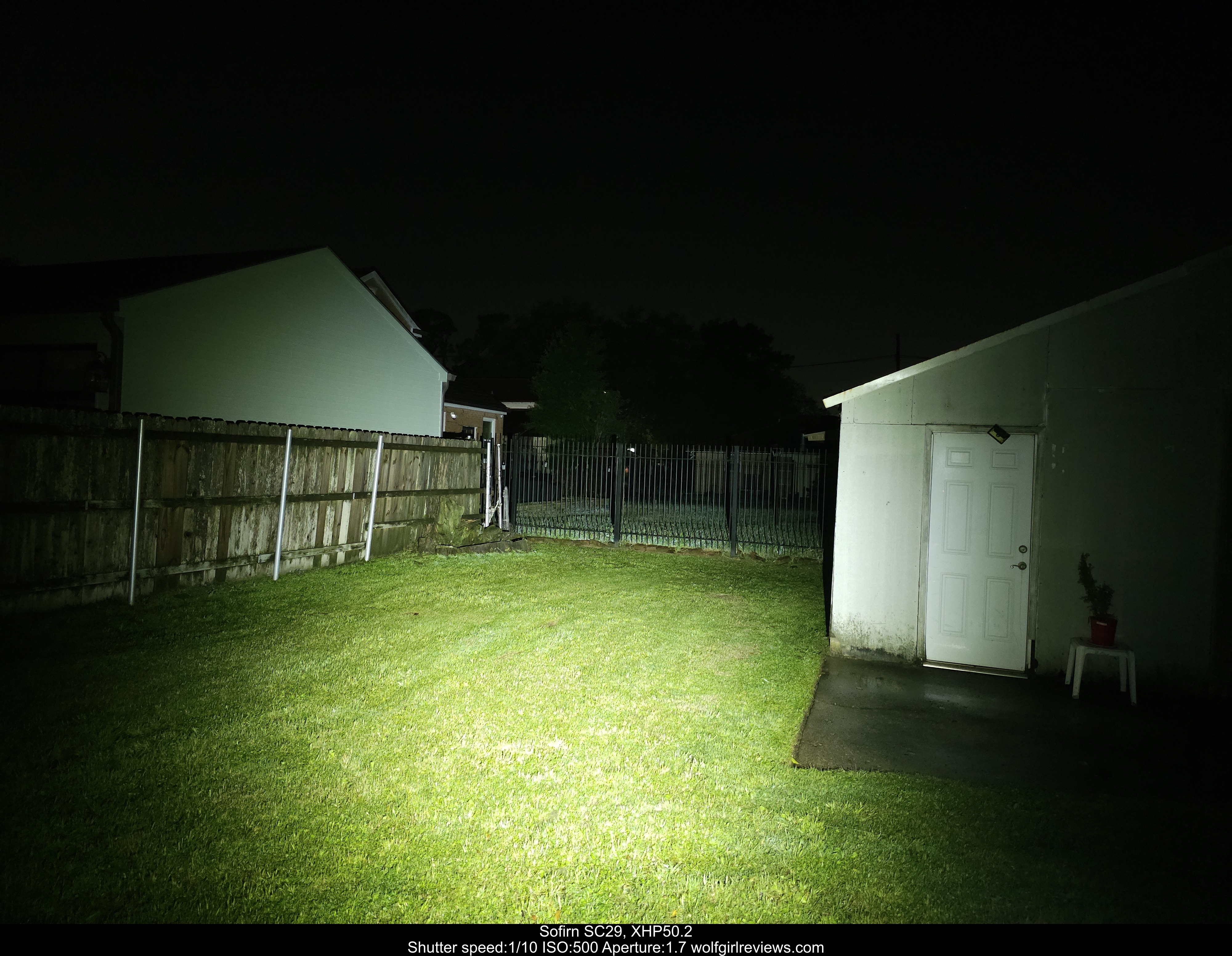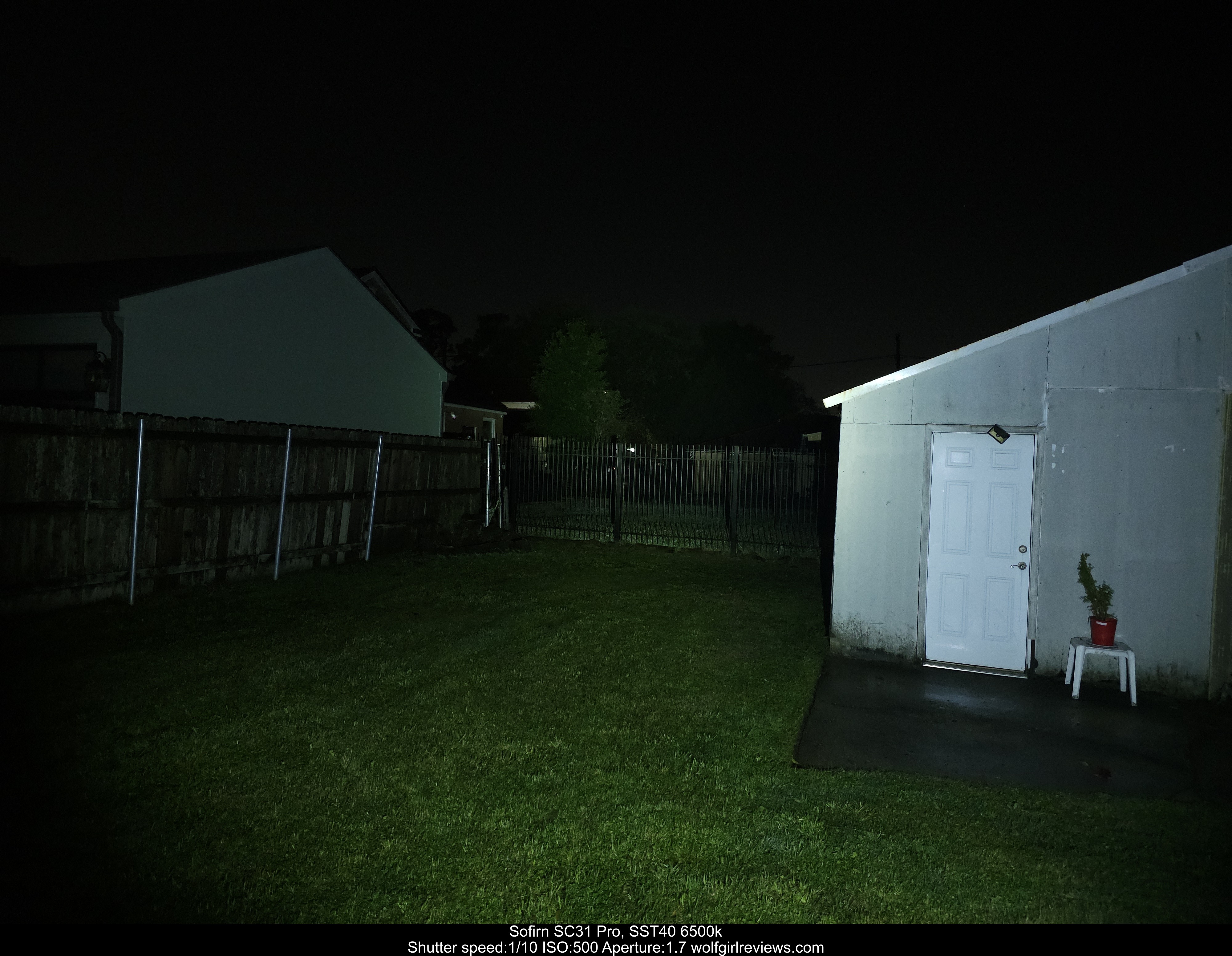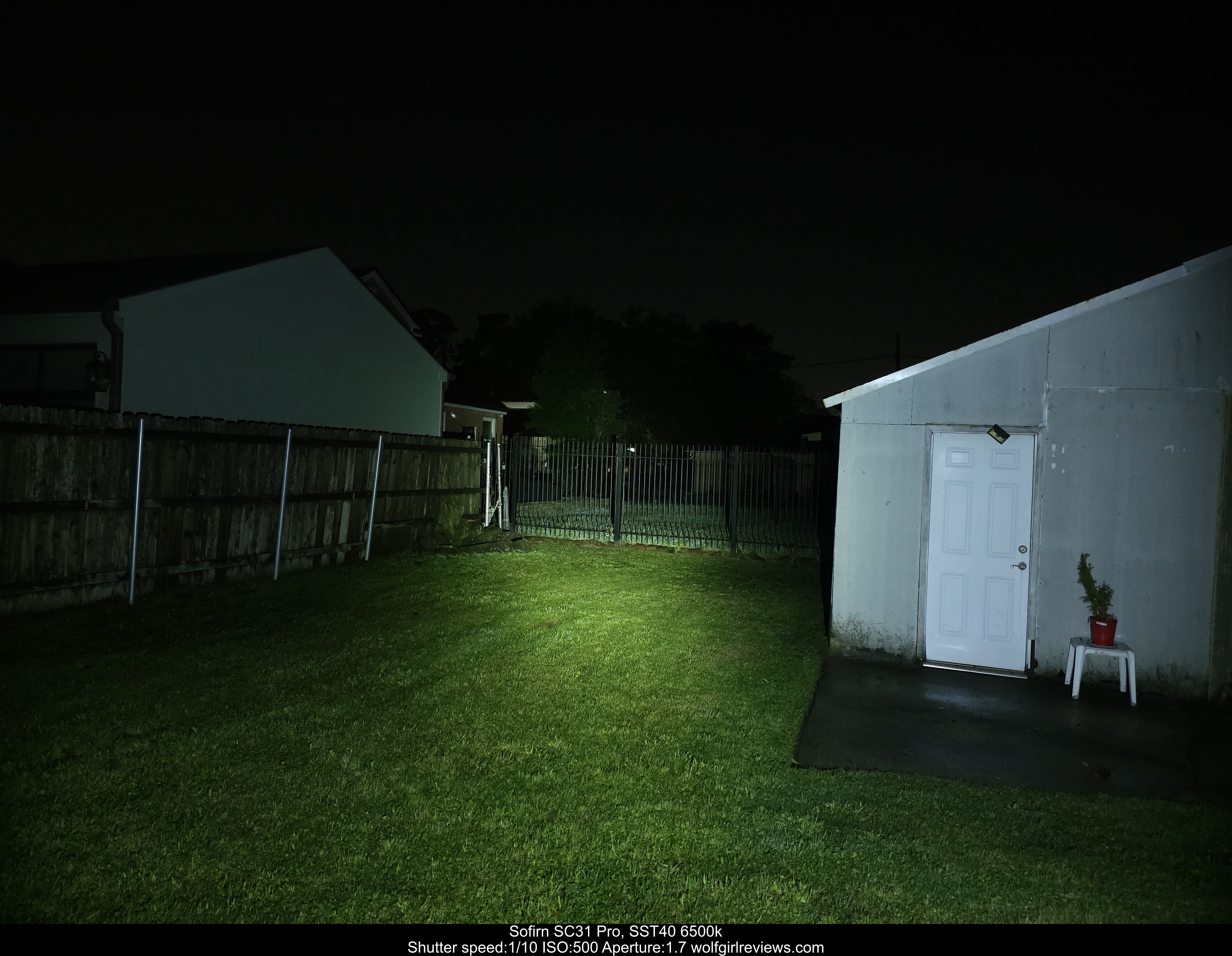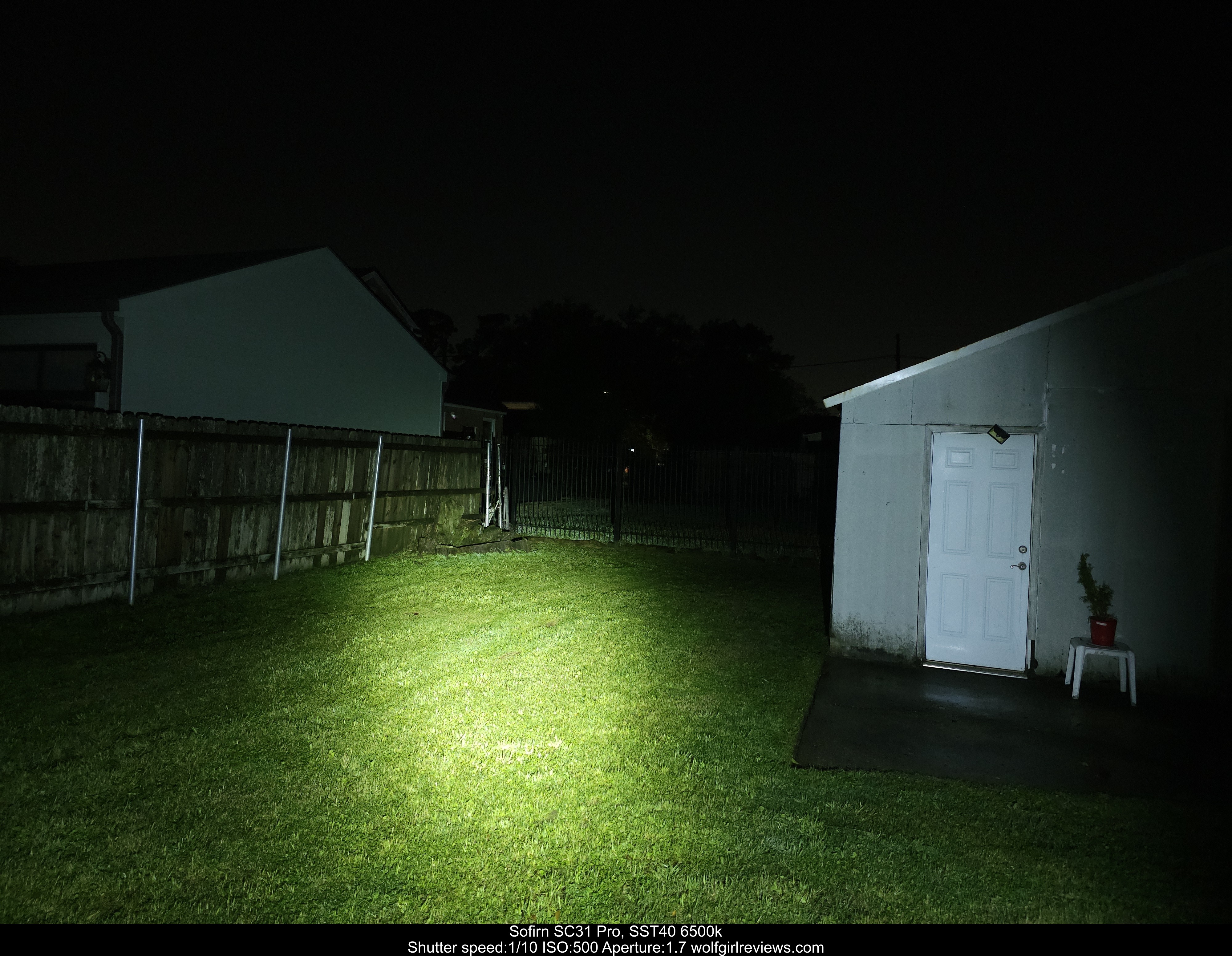"Sofirn made a rotary switch light too? I guess this was inevitable..."
"An exciting new way to turbo yourself in the face, this time with RGB!"
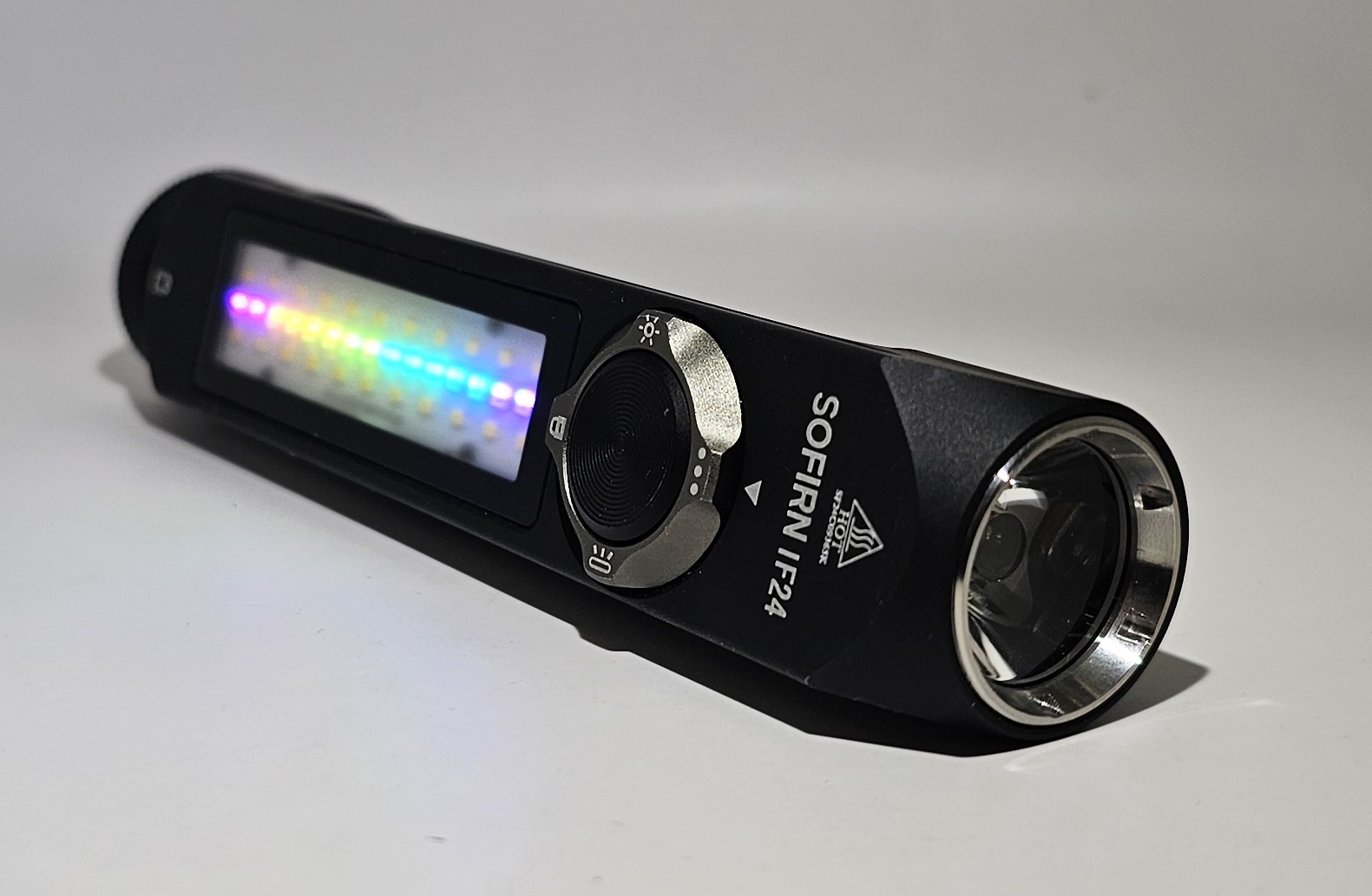 The Sofirn IF24 is a large 18650 EDC/work light, with a white/RGB side LED and a rotary switch. This review also features a discount code.
The Sofirn IF24 is a large 18650 EDC/work light, with a white/RGB side LED and a rotary switch. This review also features a discount code.
Introduction, Background, and Official Specs
Sofirn released the IF23 in 2023 as a general purpose EDC/work light. The IF24 is a refinement of the basic IF23 design, with a single main emitter and a large side flood white and RGB LED array behind a diffuser. The overall physical design of the IF24 is the same, although with a few changes, primarily to the main emitter and its optic, switch and user interface, and the diffuser over the side LEDs.
Official specs:
| Parameter | Official Value | Measured |
|---|---|---|
| Output (main LED, turbo) | 2,000 lm | 1616 lm |
| Runtime (main LED, turbo) | 1 hour 30 mins | 2 hours 18 mins |
| Intensity (main LED, turbo) | 15,800 cd (251m FL1) | 17,208 cd (262m FL1) |
| Output (main LED, high) | 700 lm | 653 lm |
| Runtime (main LED, high) | 2 hours 15 mins | 3 hours 5 mins |
| Intensity (main LED, high) | 6,650 cd (163m FL1) | 6,435 cd (160m FL1) |
| Output (main LED, medium) | 150 lm | 143 lm |
| Runtime (main LED, medium) | 13 hours 30 mins | 14 hours 15 mins |
| Intensity (main LED, medium) | 1,242 cd | 1,341 cd |
| Output (main LED, low) | 10 lm | 13 lm |
| Runtime (main LED, low) | 115 hours | |
| Intensity (main LED, low) | 89 cd (19m FL1) | |
| Output (main LED, moon) | 1 lm | <1 lm |
| Runtime (main LED, moon) | 20 days | |
| Intensity (main LED, moon) | 6 cd (9m FL1) | |
| Output (side LED, turbo) | 550 lm | |
| Runtime (side LED, turbo) | 3 hours 30 mins | 3 hours 36 mins |
| Intensity (side LED, turbo) | 138 cd (24m FL1) | |
| Output (side LED, high) | 200 lm | |
| Runtime (side LED, high) | 5 hours 30 mins | |
| Intensity (side LED, high) | 65 cd (16m FL1) | |
| Output (side LED, medium) | 100 lm | |
| Runtime (side LED, medium) | 13 hours 30 mins | |
| Intensity (side LED, medium) | 28 cd (10m FL1) | |
| Output (side LED, low) | 20 lm | |
| Runtime (side LED, low) | 58 hours | |
| Intensity (side LED, low) | 89 cd (5m FL1) | |
| Output (side LED, moon) | 1 lm | |
| Runtime (side LED, moon) | 20 days | |
| IP rating | IP66 | |
| Impact resistance | 1 m (3.28 ft) | |
| Weight (without battery) | 95 g | 99.4 g |
| Weight (with included battery) | 145.8 g |
For runtime testing, I give two figures when possible. The ANSI FL1 runtime is calculated by when the light drops below 10% of initial output. I also attempt to run the light past this to find the point where it switches off automatically if possible. Many lights will run at 1 lumen of less for an extended time before powering off, and with these lights I note my observations on when the runtime test was terminated, and may terminate tests at this point as my current measuring setup has a minimum of 1 lumen. For testing of output, my acceptable margin of error is between 5% and 15%, with margin increasing with output.
I was sent this light for free by Sofirn in exchange for a review. I am not receiving any commission for sales, including if the discount code at the end of the review is used, and am giving my honest opinion without holding back on any negative experiences or overstating any positive. I may use affiliate links to Amazon or similar sites for things such as measuring equipment I use, but do not otherwise have any related interest in anything I mention.
First Impressions, Physical Design, and Build Quality
The IF24 comes in Sofirn's higher end retail-style packaging. Inside, the first thing you are met with is instructions on removing the battery insulator. Beneath this, the IF24 is inside a foam cutout with a USB cable on top and an accessory box in its own slot. Inside the accessory box is a manual, lanyard, and two spare o-rings.
The IF24 is finished in black anodisation, with a slight matte finish and a very smooth feel in the hand. If the surface of the light was smooth all the way round, I would be worried about it slipping out of my hand with how smooth the finish is, but there are chevron-shaped cutouts on both sides that allow for improved grip, as well as a pocket clip fitted to the back, with a dedicated groove that unlike most other clips of this type, does not go all the way around the light, instead only allowing for about 1-2mm of play in each direction. In general, I am not a big fan of this type of clip due to their tendency to rotate freely around the body and cause scratches on the light's surface finish, but in this case the groove only allows for about 1-2mm of side to side play. The clip has an upwards extension to allow deeper carry, and is single-direction, only allowing head-down carry. Considering the magnetic tailcap, this may be a positive or a negative depending on what else you carry or are otherwise around.
The IF24 is a unibody design, with no separate head and battery tube, only a tailcap. The tailcap has a pattern of vertical lines for grip, and relatively short threads, taking around three turns to do completely up. The tailspring is relatively stiff and some force and care as to alignment is needed to initially get the two threads to align when replacing it. Due to the in-body USB charging, most users will likely not remove the tailcap often.
Inside the battery tube, there is another spring at the opposite end. My review sample included a 3000 mAh Sofirn-branded unprotected button top 18650 - this is a downgrade compared to the IF23, which used a 21700 battery. Unprotected flat tops also work if you are planning to swap batteries for more runtime or order the IF24 without a battery. The tailcap also contains a magnet; this is of a medium strength and has good adhesion to thicker metal surfaces and is able to hold a small stack of sheets of paper in place, although on thin metal surfaces the grip is a little more tenuous and can easily fall off if bumped. There is a lanyard hole on the side of the tailcap - this is my preferred location, as it does not prevent tailstanding or using the magnet on a surface, as compared to the SC13 and SC29 where use of the lanyard hole prevents the light sitting completely flat when tailstanding or using the magnet.
Overall, the tailcap's internal structure is similar to those of the SC13 and SC29, and the threads are anodised, allowing mechanical lockout by loosening the tailcap. There is an additional lanyard hole near the top of the pocket clip as an alternate location. A USB-C port is located on the side underneath a rubber flap cover, and in line with the switch, and next to the USB port is a red/green LED used as a battery status indicator. This LED is slightly visible through the optic at certain angles, although this does not seem like an intentional feature and is not something to rely on to see charging status at a glance.
On the "front" side of the IF24 are the flood LEDs behind their diffuser, and above this is the switch. This is a new switch type, and a hybrid rotary/e-switch - the outer ring of the switch rotates to select modes, while the centre is the e-switch. The rotary control feels smooth, with a light detent at each function's position. The ring does not snap into place at any particular setting, and can easily be placed between two detents - the switchover between the two functional modes happens fairly consistently with the middle position. The central e-switch has a relatively short travel and a nice snappy click action without any mushiness. The surface of the e-switch has a series of shallow concentric circles in it for grip, which works well without being too intrusive, and the mode selection ring has a symbol on each position to indicate its function - for more information on the UI, see User Interface.
Above the switch there is an arrow printed to indicate the selected mode, and above this, "SOFIRN IF24" is printed, then the usual "hot" symbol at the top of the light (although in my testing, the IF24 never got particularly hot, even on turbo, remaining at most warm to the touch and comfortably usable in the hand). At the far end, there is a battery polarity graphic, and on the back at the opposite side to this there are the usual regulatory markings. Sofirn rate the IF24 as IP66 - this is specified as water resistant but not rated for immersion. The seal on the tailcap seems fine but my guess would be that the weak point in relation to water would be the USB-C port as the flap does not fit particularly tightly into it.
The main emitter is behind a TIR optic, replacing the IF23's orange peel reflector. The steel bezel is set into the body of the light, with indentations for a tool to tighten or remove it. Compared to the IF23's XHP50.2, the IF24 has switched to an SST40, a change that overall, I would consider a downgrade, although the TIR optic does clean up the beam a little when compared to the same LED in a reflector. Compared to the IF23's translucent diffuser, the IF24 uses a clearer lightly frosted one, with three rows of LEDs visible - the upper and lower rows are white LEDs, while the middle is RGB. More detail on the emitters is in Driver and Emitters. There is no lens; instead, the optic itself is directly exposed as the front surface. This is not ideal as it may pick up scratches, although this is reduced by it being somewhat deeply set into the head and protected by the steel bezel.
My review sample did arrive with a small chip on the tailcap as if it had been dropped during assembly or packaging. In general, I have not personally experienced QC issues with Sofirn and I would consider user reports of them relatively rare, and it seems this particular quality issue is known and has been resolved for the full production versions. TacGriz experienced a similar tailcap quality issue in his review and got a response from Sofirn that the defects were limited to pre-production versions.
Sofirn's warranty is described on their website and is covered via the seller for the first 30 days, then free replacement from Sofirn for the first 12 months, or 6 months for defective batteries.
Size Comparison
The IF24 covers several different categories of lights, so I used a combination of general EDC lights, work lights/mules, and RGB lights.
- Wurkkos HD01
- Emisar DW4
- Wuben L1
- Skilhunt H200
- Fireflylite NOV-Mu v2
- Emisar D4v2 mule
- Sofirn SC29
- Skilhunt Mix-7
- Wurkkos WK40
- Emisar D4v2
- Emisar D4K triple channel
User Interface
Actions are given in Anduril-style notation. 1C means click once, 1H means click once and hold the switch. 2C means click twice in a row quickly, while 2H means click twice quickly, holding the second click.
| Rotary switch | State | Action | Effect |
|---|---|---|---|
| Any except lockout | On | 1C | Off (memory, see below) |
| Any except lockout | Off | 1C | On (mode memory) |
| Main or flood | On/Off | 2C | Turbo |
| Main or flood | Turbo | 1C | Return to previous mode |
| Main or flood | Turbo | 2C | Strobe |
| Main or flood | Off | 1H | Moon |
| Main or flood | Strobe/blinky | 1C | Return to previous mode |
| Main or flood | Strobe/blinky | 2C | Cycle strobes/blinkies |
| RGB | Off | 1C | RGB on, steady mode |
| RGB | On | 1C | Off |
| RGB | On | 1H | RGB colour ramping |
| RGB | (any) | 2C | RGB on, special RGB modes |
| RGB | Special | 1C | Off |
| RGB | Special | 2C | Next special RGB mode |
| Lockout | Lockout | 1H | Momentary moon |
In my opinion, this user interface is an improvement over the IF23, but still overall has a few annoyances. The rotary switch allows selecting the intended LEDs more easily than the IF23's user interface, which needed multiple clicks to access the side LEDs. With the IF24, this has been replaced by a 4-position rotary switch to select the active mode, which also handles the lockout mode. When in lockout, there is a momentary moon mode available by holding the switch. There is also a mode memory for if the light was switched off or not - if the light is on, rotating the switch will switch between LED sets with the light remaining on, and if lockout is selected, the LEDs will switch off, then when rotated back to an on mode, it will automatically switch back on, while if the light is switched off with 1C first, the off state is memorised and the light will remain off when deselecting lockout mode.
The lack of a proper electronic lockout is one disadvantage of the IF24's UI compared to the IF23's, as this means you need to rely on the rotary switch, which I found could be easily bumped out of position and into an "on" mode. If carrying in a bag or a pocket with other items, I found mechanically locking the IF24 out at the tailcap was more reliable. One positive about the switch-based lockout is that when holding the button, this gives a momentary moon mode.
The special RGB modes do not have a mode memory, and when selected will always start from the first mode. In order, these are:
| Mode | Description |
|---|---|
| Flashing | RGB LEDs flash on/off at around 1Hz (~0.5s on time followed by ~0.5s off time). Selected colour can be ramped by holding the switch |
| Police flash | Red/blue alternating sides, multiple alternating fast/slow patterns |
| Rainbow | Automatically cycles colours, starting from blue |
| RGB waterfall | Automatically cycling RGB, chasing down the LED strip, from head to tailcap, all RGB LEDs in use |
| Droplets | Chasing RGB colours from head to tailcap, with only two colours visible at one time |
| Neon fade | Automatic RGB cycle, all RGB LEDs synchronised to the same colour |
The selected RGB value via holding the switch is memorised, and shared between both the steady RGB mode and the flashing mode. When the battery is removed, this memory is cleared and it will reset to red. The brightness of the RGB mode is fixed with only a single level - this brightness is sufficient for close up illumination, but not enough to be considered a proper area light. I also found it too bright to be comfortable with the side LEDs close to my face.
There is no battery check mode; the side red/green LED is used to give a vague idea of battery state when the light is switched on, and will blink red when the battery is low, but there is no way to view either an exact level or even a "bars" type indicator. There is LVP, and the light switches off from any mode when the battery reaches 2.9V. The side battery indicator is also used for the status when USB charging - red when charging, then switching to green when the charge is complete.
The strobe mode is hidden, needing to first access turbo before doing a second 2C to enter strobe. As hidden strobe modes go, this one is average - many people will have a muscle memory where 2C when in turbo will return from turbo to the previous mode and 1C switch the light directly off, but similar to the other Sofirn UIs I have reviewed recently, here, 1C reverts to the previous mode with no direct shortcut to off from turbo, and 2C will instead select strobe mode, with further 2C advancing through other blinky modes. These are:
- Strobe
- SOS
- Beacon (bright flash at turbo level, for about 0.5 seconds every 2 seconds)
After a few days of trying the IF24, I still found myself selecting the wrong mode regularly. This can be annoying if the side LEDs are close to your face when you select them, particularly in RGB mode where there is no brightness control, but also with high brightness memorised, although when prepared for the possibility, the memorised "on" feature does allow easily seeing which mode is selected without needing to look at the switch. From lockout, you need to rotate the switch one position to the left for the main emitter, one position to the right for the side LEDs, or 180 degrees for RGB. In my opinion, this layout is probably the best possibility, allowing direct access to both white modes and with RGB being slightly further away from accidental activation.
One thing that is missing that could potentially have been included that would have improved the enthusiast appeal of the IF24 is that since it uses two rows of white flood LEDs, these could have used two different CCTs such as 2700k and 5700k or 6500k, and allow the user to ramp between them from warm to cool. On the RGB LEDs, the ramping to select colour works reasonably well, but there is no way to select a specific one - if you want to reach a certain mix, even if it is 100% on a single colour only, you have to ramp to it, potentially ramping back if you overshoot. This is also made more inconvenient by the limited mode memory on the RGB - the selected mix is only memorised as long as the battery is inserted. Since there is USB charging included, this would be less of a problem if there was a good electronic lockout mode, but I would tend to want to mechanically lock the IF24 out before carrying it in any way the switch could be bumped.
Overall, despite a bit of an initial learning curve, I think this is a better implemented UI than the IF23's, although the two things that are missing that were present in the IF23's user interface are an electronic lockout mode, and a 200% mode with both the main emitter and side white LEDs.
| What it gets right | What it gets wrong |
|---|---|
| Layout on the rotary switch is logical | No electronic lockout mode, and switch-based lockout is unreliable for pocket carry |
| Good selection of RGB modes, including adjustable mixing | Not possible to have the main and side LEDs on at the same time |
| Reasonable level spacing on both main and flood emitters | No brightness control on RGB mode |
| Direct shortcuts to both moon and turbo | No battery check mode; the two-colour LED does not provide sufficient detail |
| Strobe mode is hidden enough to be hard to activate accidentally, but still accessible if needed | Strange button mappings in turbo mode (2C strobe instead of returning from turbo; 1C return from turbo instead of off (no direct shortcut to off). |
Using the Light
The IF24 has good ergonomics for carrying, with the rounded back fitting well into my hand, although people with relatively large hands may find the switch sits slightly too low for the most comfortable position. When fitted, the pocket clip did not interfere much with my grip, and overall, although I do not usually use a pocket clip, I kept it attached as it makes the light easier to handle in general, as well as allowing it to lie on its back with the flood LEDs facing upwards. Changing modes is easy to accomplish without adjusting grip, and the side LEDs are usable while holding the light in the hand with a reversed grip, and I could maintain use of the switch without blocking them too much. When held to use the main emitter, the sides provide sufficient grip to feel secure, and the length feels about right to me, although people who tend to prefer smaller lights may find it a little long. It is frustrating that compared to the IF23, the battery has been downgraded to an 18650 - this is likely because the new switch takes up more space in the body so a 21700 would not fit. The principle of operation of the switch is magnetic - if bringing a magnet near it, this can cause the light to switch on.
The pocket clip is of medium stiffness, easy to lift with the tip of one finger and with enough flex in it to be easily usable even with a thick jacket or jeans pocket. The pinch point on the light's body is completely smooth, with no knurling, so the risk of damage to fabric is low. With the clip removed, the back of the IF24 is curved, so it will roll freely until it stops on the two flattened sides, making it unable to be placed with the side LED facing upwards. With the clip installed, it is wide enough to balance the light on to have the side LEDs facing upwards, although it will tend to settle a couple of degrees to one side or the other. When head or tail standing the IF24 feels stable and sits flat, and when placed on one side, it will still freely roll onto its back before being stopped by the clip, if installed.
As with the SC13, enthusiasts will be unhappy to hear that the only LED option is an SST40 in 6000-6500k, although as with the SC13, my sample appeared to be reasonably neutral and less green than some examples of SST40 lights. The beam profile has more throw and a tighter hotspot than the SC13, with smoother spill, and noticeable tint shift around the hotspot up close - I would say that up close, this is a less nice beam than the SC13, but at a distance nicer. Since the IF24 has the side LEDs, this is the right direction to be designing its optics towards, although again as an enthusiast I am required to point out that the SST40 is in general a poor LED choice, and I would have preferred even the XHP50.2 as seen in the SC29 and IF23.
Main emitter output is reasonable for an SST40, with a peak of 1600 lm, about 300lm more than the same LED in the SC13, likely due to a larger battery that experiences less voltage sag under load, and higher thermal mass. The IF24 did not get noticeably hot in use even on turbo, with a peak surface temperature of 50 after around 15 minutes, so while there is the possibility of accidental in-pocket activation if using the switch-based lockout, it is unlikely to be burning holes in pockets, and the worst that is likely is a depleted battery. In general, heating is slow and the light remained comfortable in my hand even with extended use. Heat distribution through the body of the light is good, and heating slowed down significantly after the surface reached 45 degrees.
The side LED brightness is reasonable, and more than sufficient for close up tasks as a work light, something than could be argued to be the main purpose of the IF24. When used for more general area lighting, they will throw sufficient light across a room to see by, but overall with some distance indoors, I am more likely to simply aim the main emitter upwards and ceiling bounce it instead, as the brightness drops off relatively rapidly with distance. The beam profile is wide, as the low profile emitters are very close to the diffuser, providing an almost 180 degree beam, slightly wider than mule-type lights from brands such as Emisar or Fireflylite. As already mentioned under User Interface, there is no brightness control on the RGB modes; you only get full power which is overall mildly underwhelming, but still usable for mood lighting. I am not sure as to practical applications of it, as the red is too bright to be truly useful for night vision preservation, although the flashing mode when set to red could be useful in a roadside emergency situation, but I have definitely enjoyed using it in the evenings to light a small area.
One thing that Sofirn do not specify is the CRI of the side LEDs, but checking the spec sheet, these are quoted as 90 CRI, and my measurements matched this. Sofirn's official specs list the side LEDs as 5000k, although with the drop from the diffuser, I measured around 4600k on medium. DUV is positive, although not to a degree that makes them unpleasant for me to use (your mileage may vary based on your degree of tint snobbery ;) )
When walking with the IF24, I found the switch's operation convenient and the memory feature works well to switch it on and off just by rotating the switch, although I would always mechanically lock it out before putting it into a bag. Output is sufficient for general purpose use, with a decent balance between flood and throw on the main emitter. When used up close, the low modes on both the main and side emitters are low enough not to disrupt night vision, although it is possible to accidentally end up with high output when unlocking due to the memory feature.
The main emitter has a reasonable balance of flood and throw; the output and optic are likely doing the heavy lifting here when it comes to throw as the SST40 is in general a floody LED.
Driver and Emitters
The IF24 uses a linear driver, which overall I would classify as medium power - 1600lm from an SST40 is reasonable but not taking full advantage of even this LED, being within the possible output range of an SFT40 as well. As with other Sofirn lights, there is active thermal regulation and a reasonable sustained output even with relatively conservative thermal limits. Runtimes are reasonably long for a linear driver and 18650, and a usable output is held all the way until output drops to zero, unlike the SC13/29 where there was an extremely long tail of sub-lumen output before power off. The output is stable, with no PWM visible on the main emitter to either my eyes or camera, even on moon mode, although there was fast PWM visible to my camera on the side LEDs (both white and RGB) at every brightness mode including turbo, this was not actually visible to my eyes. The driver has built in LVP, cutting off power at 2.9V - at this point, the light can be switched on again in low or medium mode and will run for a short time before powering off again.
As with the SC13, the SST40 is never going to be a popular choice with enthusiasts, but the tint in this example is reasonable, comparable to the SC13 and significantly better than some of my older Sofirn lights such as the SC31 Pro. DUV is reasonably close to neutral, and while there is a large ring of tint shift around the hotspot up close, this blends a little better at a medium distance, and the beam profile is nicer than the SC13's, with fewer rings at the edges, less tint shift in the hotspot itself, and a significantly more symmetrical spill without as many artifacts. The CCT being listed as 6000-6500k makes me think Sofirn are using a relatively wide binning of LEDs here, so there may be more variation between examples, but when added to my data point of my recent SC13 review, these two are significantly nicer than the SST40 in my SC31 Pro, even when accounting for the fact that that light uses a reflector rather than a TIR.
The packaging states 6000-6500k for the main LED's CCT, so much like the SC29, this is likely an LED with a relatively wide binning, so my results may not reflect all examples. The LED in my tested example was around 6300k, with relatively little shift in CCT with output. DUV is slightly negative, with a slight tendency towards lower with higher output. The SST40 is low CRI and my measurements matched that with a CRI around 70.
For its flood LEDs, the IF24 uses LatticePower CSP1313 at 5000k. Sofirn were able to confirm to me that the 90 CRI bin is being used, and my testing validates this. The middle row are the RGB emitters, which are listed as being FY-1615RGY, although I was unable to find a datasheet on these LEDs. I measured them between 4951k on turbo and 5000k on medium. DUV was slightly positive, not enough to bother me and overall I still found this a pleasant quality of light for general task lighting. CRI is 91, with an R9 of 61. Overall, the beam from the flood LEDs is very even, with no obvious hotspot and a nearly 180 degree wide flood, even slightly wider than some mule-type lights. The DUV is slightly positive, but not unpleasant to my eyes and perfectly usable for general tasks, while if you are looking to use the IF24 for mood lighting, you're probably more likely to be using one of the RGB modes instead.
I measured the IF24's CCT and CRI with a Colormunki Photo and ArgyllCMS.
CRI and tint
Power and Charging
The IF24 has built in USB-C charging, with a rubber port cover on the side of the light, in line with the switch. The fit into the cutout is average, not too tight but not inspiring excessive confidence in its water resistance - if this light is used in heavy rain or takes a quick dip into water, I would definitely make sure the port is dry before charging.
The switch LED turns red when charging and green when the charge is completed. The IF24 does not feature a powerbank mode, and when connecting it to my phone, it instead charged at a slow rate from my phone's battery. The built in charging never overcharged the battery, each time I tested it terminating reliably at 4.20V.
Charging data was collected using rd-usb with an RDTech TC66C (info, Amazon (US).
The manual indicates that low voltage cutoff is at 2.8V, and in my testing I this accurate with the battery reading upper 2.8V to lower 2.9V. When the light did cut off from low voltage, I was able to instantly switch the light back on and even enter turbo, although LVP would cut in again relatively quickly afterwards.
Moddability and Repairability
As previously mentioned, this clip only supports head-down carry. The clip does seem to be a fairly standard size so possibly other clips sized for 18650 lights should fit if a reversible clip is preferred.
The IF24's bezel has indentations for a tool to be used to loosen it; a DSLR filter wrench like this one worked fine, although some care is needed not to scratch the exposed optic if your hand slips. With the bezel and optic removed, the MCPCB could be unscrewed and desoldered for an emitter swap, and this is likely also the only method of accessing the driver. Unfortunately, the MCPCB has some T-shaped connectors holding it in place which would need to be desoldered while the MCPCB is still in thermal contact with the body, meaning that while an emitter swap is possible, it is likely not easy.
The diffuser for the side LEDs appears to be glued in place (a downgrade from the IF23 where it was held in place with screws) so could potentially be unglued and replaced by either a clear one for more output, or a more heavily frosted one for additional diffusion.
Performance
All lumen measurements taken using a 4.5 inch Texas Ace lumen tube. Candela measurements were performed indoors at a distance of 3m, using a UNI-T UT383BT datalogging luxmeter.
Runtime tests were performed using the lumen tube's HS1010A luxmeter, which the tube is calibrated for, with data recorded via taking a video, exporting the individual frames using ffmpeg, and parsing the value on the luxmeter's display at the appropriate frame for each measurement. I logged the value every second for the first 5 minutes, then every 5 seconds up to 30 minutes, then every 30 seconds past that point. The IF24 maintained a reasonably stable output for a linear driver, with no sharp drops for LVP when running down from a higher level. The side charging LED started blinking red when the battery was low.
I was not able to test the actual output of the side LEDs as the IF24's length is longer than the width of my lumen tube, but to my eyes, the output spec seems reasonable. Instead, I tested runtime using my luxmeter, starting from 100% relative output.
Output and Throw
| Mode | Spec | Peak output | Output after 30s | Output after 1 minute | Output after 90s | Output after 5 minutes | Output after 15 minutes |
|---|---|---|---|---|---|---|---|
| Turbo, main LEDs | 2000 lm | 1616 lm | 1395 lm | 1312 lm | 1291 lm | 694 lm | 661 lm |
| High, main LEDs | 700 lm | 653 lm | 617 lm | 607 lm | 602 lm | 588 lm | 570 lm |
| Medium, main LEDs | 150 lm | 143 lm | 140 lm | 139 lm | 139 lm | 137 lm | 136 lm |
| Turbo, side LEDs | 550 lm | 100% | 97% | 96% | 95.5% | 59% | 57% |
| Mode | Peak candela | Candela after 30s | Candela after 1 minute | Candela after 5 minutes |
|---|---|---|---|---|
| Turbo, main LEDs | 17,208 cd (262.3 m) | 12,294 cd (221.8 m) | 11,898 cd (218.2 m) | 6,696 cd (163.7 m) |
| High, main LEDs | 6,435 cd (160.4 m) | 6,381 cd (159.8 m) | 6,318 cd (160 m) | 5,742 cd (151.6 m) |
| Medium, main LEDs | 1,341 cd (73.2 m) | 1,341 cd (73.2 m) | 1,332 cd (73 m) | 1,332 cd (73 m) |
Runtime
| Mode | Runtime |
|---|---|
| Turbo, main LEDs | 2 hours 18 mins ANSI FL1; 2 hours 37 mins to power off |
| High, main LEDs | 3 hours 5 mins (ANSI FL1 runtime was equal to total runtime |
| Medium, main LEDs | 14 hours 15 mins ANSI FL1; 14 hours 30 mins to power off |
| Turbo, side LEDs | 3 hours 36 mins ANSI FL1; 3 hours 43 mins to power off |
Performance Overview
Overall, even adjusting for measurement error, the IF24 does not meet output specs, but is still reasonable for a single 18650 and SST40, with decent overall performance for a large non-enthusiast EDC light, although the side flood channel is a little lacking in output compared to other lights someone may use as a work light. The IF24 holds a reasonably high output even with a nearly-depleted battery before powering off, and overall performs reasonably well for a linear driver.
Beamshots
Lights used:
| Light | Emitters | Notes |
|---|---|---|
| Wurkkos HD01 | LatticePower HM | Tested at 1093 lm |
| Emisar DW4 | 519A 5000k | Boost driver, tested at 2300 lm |
| Wuben L1 | SST40 6500k, Osram P9 | Flood and throw channels, tested at 1000/1900 lm |
| Skilhunt H200 | 519A 4500k | Tested at 1400 lm |
| Fireflylite NOV-Mu v2 | E21A 4500k | Tested at 5400 lm |
| Emisar D4v2 mule | 8x 519A 5700k | Tested at 4500 lm |
| Sofirn SC29 | XHP50.2 5700-6500k | Tested at 2980 lm |
| Skilhunt Mix-7 | XP-G4 6500k | Main LEDs tested at 2380 lm |
| Emisar D4K triple channel | SST20 Deep Red/W2 Deep Blue/W2 Green | RGB only |
| Sofirn SC31 Pro | SST40 6500k | Tested at 1361 lm |
| Sofirn SC13 | SST40 6500k | Tested at 1950 lm |
IF24
Comparison Beamshots
Competitors
Wurkkos HD01: The Wurkkos HD01 is the first light many people may compare the IF24 to, and superficially they have a few similarities, with an extremely similar side LED setup with white/RGB, including what appears to be some level of sharing of the RGB controller, with mostly the same modes, although the HD01 is missing some of the IF24's animated RGB modes and has a worse implementation of RGB ramping, with no way to reverse the ramp if you overshoot a desired setting. Past that, the HD01 is a much smaller light, with significantly shorter runtimes, a nonreplaceable battery, and a lower output on its main LED and faster stepdown, but in return, has a 4mW green laser and a dual switch UI that I found had a worse initial learning curve than the IF24, but was nicer to use after that point. As a much smaller light, the HD01 also lends itself to carrying much better than the IF24, but can not match it in runtime. Although the IF24 and HD01 clearly share components in their side LEDs, the HD01 has fewer RGB modes than the IF24 and in general a worse UI for the RGB.
Skilhunt Mix-7: The Mix-7 is an alternative choice for a light with both RGB and white emitters, as well as a magnet. The Mix-7 is a significantly smaller light, which comes mostly at the expense of battery capacity and runtime, having only an 18350, but does outperform the IF24 with its main emitters. In comparison to the IF24, the Mix-7's RGB is less floody and more of a balanced beam, and despite the name, there is no way to actually mix the RGB; you get red, green, or blue. One thing the Mix-7 has that the IF24 does not is that it also includes a UV LED.
Sofirn SC29: If you aren't interested in the side LEDs, this is a reasonable alternative as a basic large EDC - the XHP50.2, while not going to win awards from enthusiasts for its tint, still produces a better beam than the IF24's SST40, and the overall size of both lights and carry experience is comparable.
Wuben L1: If you are looking for what is predominantly to be used as a work light, the Wuben L1 offers both flood and throw LEDs (although both are low CRI as opposed to the IF24's high CRI side LED), and while the flood LED is more focused than the IF24's, the adjustable head can make positioning of the light easier. With a 21700 battery, the L1 is the clear winner on runtime and also beats the IF24 on overall performance, although the flood LED is a more concentrated beam and relies more on pure output to achieve comparable area illumination.
Emisar D4K triple channel: If you are primarily interested in the IF24's RGB features, the D4K is the go-to enthusiast option. For RGB, my suggestion is to spec it with 2x SST20 Deep Red, W2 Deep Blue, and W2 Green. Anduril provides more versatility for general colour illumination, although the special animated RGB modes are missing as well as the absence of a dedicated white channel when specced as a full RGB build.
Emisar DW4 - If you don't need RGB and are just looking for a good all-round work light, the Emisar DW4 is an excellent option, with a wide choice of LEDs, optional high strength magnetic tailcap, interchangeable optics from throwy to floody, and an optional high efficiency boost driver that is still capable of 2000 lm with high CRI LEDs such as 519A.
This section does not list all possible alternatives, is subject to my own interest and views on listed lights, and is primarily intended to give a general overview. A light not being included here does not mean it should not be considered a viable alternative.
Final Thoughts and Score
| Category | Score | Comments |
|---|---|---|
| Looks | 7/10 | I like the look of the IF24 overall. The side LEDs are integrated well into the body and the three visible rows hint at the full set of features of the side LED, and the bezel and switch provide a nice contrast to the finish. The front optic, despite lacking a protective glass lens, was clean and well centred, and unlike most TIRs, allows the LED to be viewed directly. Ergonomically, the IF24 sits well in the hand, the USB port is well hidden, and the pocket clip is well integrated without detracting from the look when not installed as well as not freely rotating and causing scratches and marks across the entire body. If I have any criticism of the looks, the transition between the body and tailcap doesn't quite flow naturally with the rest of the body. |
| Quality | 6/10 | The IF24 seems well assembled. As mentioned earlier, my example had a chip on the tailcap, but this is apparently confined to review samples so I will not count this against the IF24 in general, and otherwise the finish seems flawless everywhere else. Although not a flaw that affects the use of the light significantly, the stiff tail spring and the short threads on the tailcap do make it slightly inconvenient to change batteries, and the anodisation on the tailcap threads had worn off slightly, but as it was only at the very end, this did not affect the ability to mechanically lock the light out. The switch has an excellent feel both in the e-switch and rotary components. The battery cover is the usual cheap-feeling rubber flap, but less tightly fitted than on some lights, and I would have liked to have seen more attention paid to this area, although the fit is at least reasonably tight to the point of there being *some* level of water resistance. The pocket clip is much better than typical for the snap-off type, both feeling more secure due to its lack of space to rotate, and preventing it leaving scratches all around the light as happens with freely-rotating clips. However, the clip is not double-sided, so unless a different clip can be made to fit, you are limited to head-down carry with it. The lack of a proper lens and the use of an exposed optic is very disappointing, as it may easily pick up some scratches if pocket carried. The finish on the body of the light seems durable and has a very pleasant surface texture, and is consistent across the light with no unevenness or thin spots. |
| User Interface | 6/10 | The IF24's user interface is relatively unique, so direct comparisons are difficult. Arguably the closest interface to the IF24's is the Olight Arkfeld Pro, which uses both a rotary switch to select modes and an e-switch for on/off and output, although the IF24's interface is significantly more advanced and complicated. Overall, once I had learned its quirks I was able to use it consistently without difficulty, but I would have liked to see an electronic lockout mode as well as the ability to use both the side and main emitters at the same time. |
| Performance (absolute) | 7/10 | 1600 lm is average, and most lights that are heavy on special features such as RGB or a unique switch often make compromises in performance in either battery or thermals, but the IF24 performs reasonably overall. |
| Performance (sustained) | 6/10 | The linear driver here is average, and output is affected by voltage sag from the battery, as well as a deep dip in output from turbo when thermal regulation initially kicks in followed by a climb back up, while the high mode avoids this and manages a respectable runtime of just over 3 hours. Medium runs for 15 hours, although dropping below 100 lm after 5 hours. |
| Moddability and Repairability | 5/10 | The bezel is easy to remove and the main emitter can be accessed, although the connectors used to hold the MCPCB in place make it likely difficult to remove. The rest of the light is likely harder to get into, requiring complete disassembly of the head, and given the design of the side LEDs, there is likely not much scope for further modification here past an emitter swap, and possibly fitting a different optic. The tailcap looks like the magnet could be either removed or replaced by a stronger one without too much difficultly, although my initial attempts to remove the spring failed and led me to give up since I did not want to damage the tailspring before I had finished testing. |
| Practicality | 6/10 | One of the ways the IF24 could be considered a downgrade from the IF23 is the battery - this is presumably due to the space requirements of the new switch, and it certainly compromises runtime, and possibly also performance since the IF24 came in noticeably under spec in brightness. This lack of battery capacity is partly mitigated by the presence of USB charging, as well as by the battery being easily swappable. Since the IF24 is not pushing the envelope of 18650 performance, if more runtime is needed, a higher capacity 3500 or 4000mAh battery would likely be fine. As a hybrid light with a flood mode and a balanced beam as well as RGB, the IF24 has excellent practicality, and can replace 2 or 3 separate lights in this respect. Ergonomics are good and while the IF24 is very large for an 18650 light and would be considered large even for 21700, the overall design lends itself well to carrying. The RGB modes add a lot of versatility to the side flood emitters, although with the user interface, this does come at the cost of it being very easy to dazzle yourself with the side LEDs unexpectedly if not paying attention to the switch. I am glad the white side LEDs are high CRI to contrast the low CRI main emitter, as with the limited brightness ranges available here, they are most suitable for close-up task lighting. |
| Value | 7/10 | At the time of writing, the IF24 is $54 at full price, or $39 on sale. Sofirn lights are generally readily available at sale prices reasonably often, and at this price the IF24 compares very favourably to others within the niche of either a light with auxiliary RGB. or a work light style flood mode, in addition to incorporating a reasonable main emitter. |
| Fun | 8/10 | I appreciate the various RGB modes the IF24 includes, and while I can not find a practical use case for all of them, they certainly allow a lot of possibilities for ambient lighting, in particular I like the droplets mode, something that despite overall having extremely similar RGB, the Wurkkos HD01 lacks. The main emitter is more likely something you will use because you need a light than something you are likely to be finding excuses to use, and does the job reasonably well, but has nothing special about it. |
| Overall | 7/10 | The IF24 is a solid choice that packs a lot of functionality into a single reasonably-priced light. Sofirn have obviously been aiming for maximum output as well as general value for money here with the linear driver and SST40, but the depth of RGB modes make it an interesting light to use and one that I have found myself using for general ambient lighting since receiving. The main emitter and driver will likely discourage some enthusiasts, but the RGB modes may be enough to gain the interest of others. |
In a way, the IF24 is clearly an upgraded IF23 based on criticism of that design, in particular related to the user interface - the IF23 confused many people as to how to select the different side LED modes, and this has clearly been a design goal in the IF24, with the rotary switch, but some design compromises were clearly made here - the downgrade from the IF23's 21700 battery to the IF24's 18650 is a clear net negative, and I can't help but think that simply a better implemented UI with a single e-switch or a dual switch UI like the Wurkkos HD01 would have been a better choice. The driver design and LED choice are likely motivated by keeping costs down, but these do lose it some enthusiast appeal.
The IF24's UI is, overall, an improvement over the IF23, but still somewhat unintuitive to use in some cases, and leads to things like having to manually switch the light off before locking it or changing modes to avoid the possibility of the side LEDs activating unexpectedly, potentially right near your eyes. Wurkkos have managed to implement a similar (actually, larger) feature set in the HD01 with a UI that, while perhaps having a steeper initial learning curve, is more convenient for actual day to day use. Overall, the IF24 still leaves a lot of potential on the table - while the variety of RGB modes is nice, if you want a single solid colour, you are limited to ramping to reach it rather than having any option to cycle through them. In addition, the mode order of the RGB modes is a little odd, primarily the police strobe being very easy to access and somewhat disruptive. While I am not sure as to the exact technical details of the driver, I also kept thinking during the reviewing process that the two rows of white side LEDs seemed a little like wasted potential, as these could possibly have used a warm and a cool set to provide an adjustable white CCT, although the LED choice itself is reasonable, at close to a neutral 5000k and 90 CRI.
Sofirn do seem aware of some of the tradeoffs made in the IF24's design and before the IF24 was announced, were seeking feedback from the community as to preferred LED choices and driver design, and have also announced the IF24S, which is currently unreleased, but will be an IF24 variant using a higher-efficiency buck driver and the enthusiast-favourite SFT40 LED. I do not expect changes to the switch or user interface, but the higher efficiency driver is likely to help offset the performance penalty of the smaller battery if nothing else, and it is good to see the increased community engagement.
The IF24 is available on Amazon, from sofirnlight.com, Sofirn's official AE store. At the time of release of this review, the IF24 is on sale for $41 on sofirnlight.com with an additional coupon available.
On Sofirnlight.com, use coupon IF24GMD20 for 25% off, and on Amazon.com, 10IF24BD for 10% off.
As always, feedback is welcome - I am active on BLF or Reddit, both on /r/flashlight and other specific subreddits, and have started my own subreddit for review content at /r/WolfgirlReviews.
>> Home






















